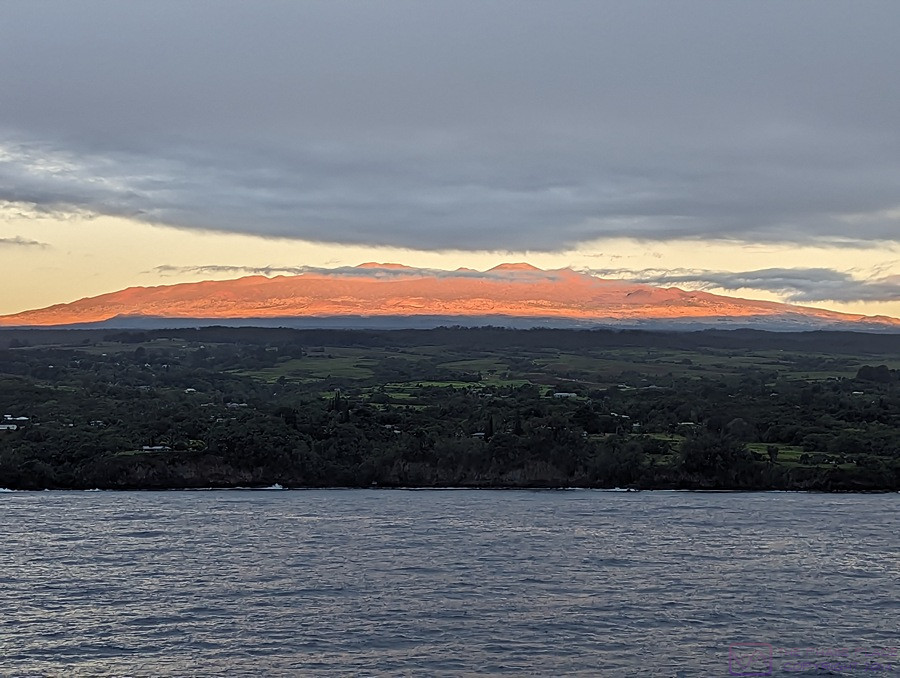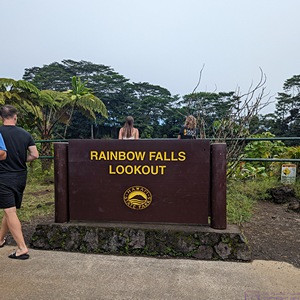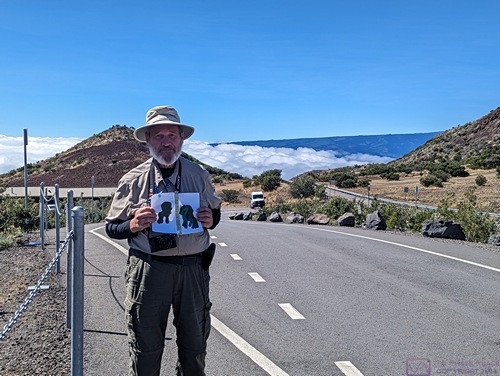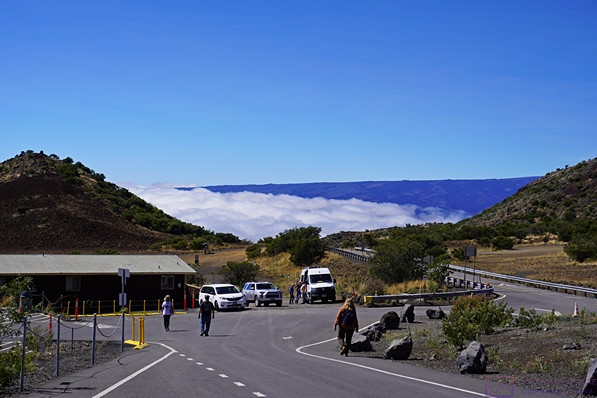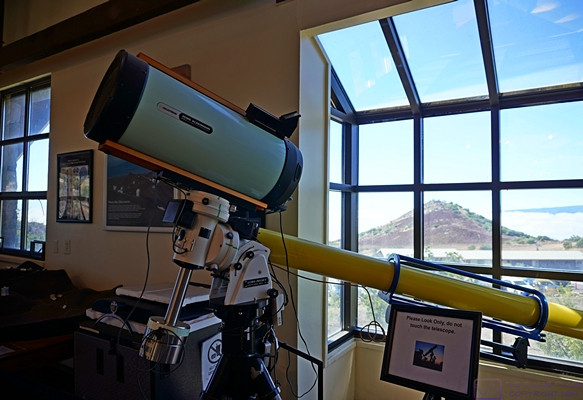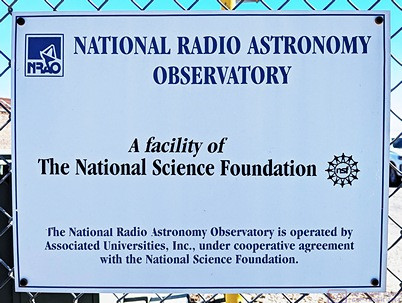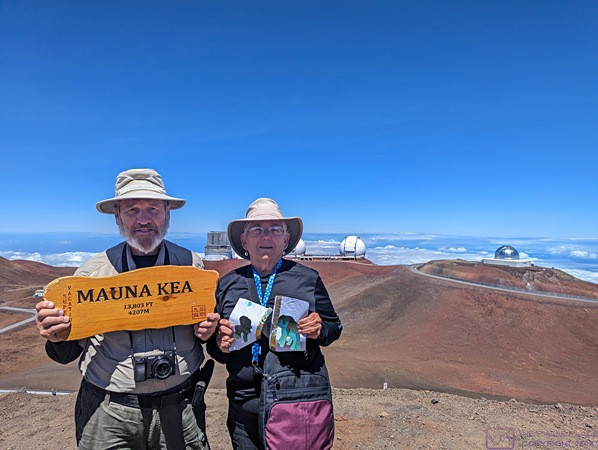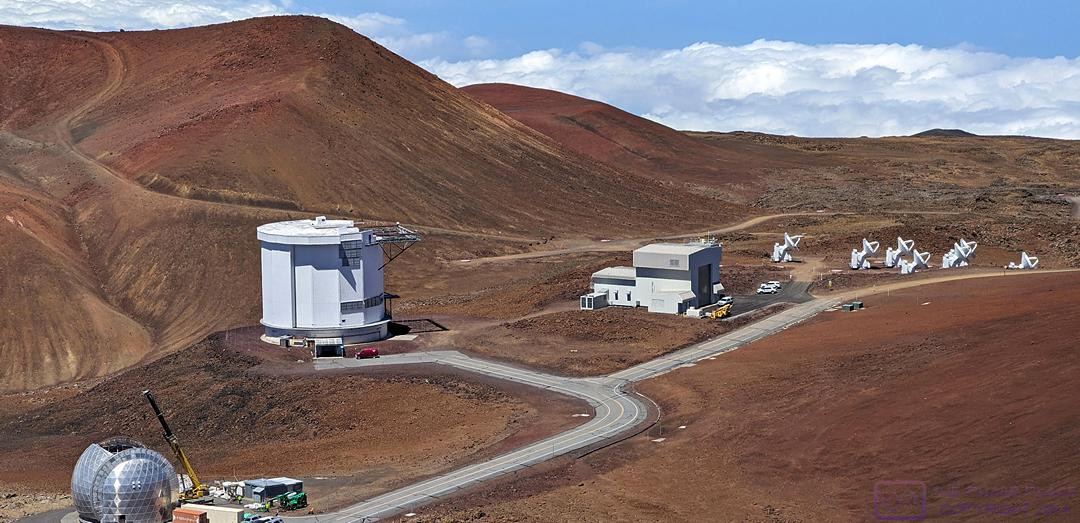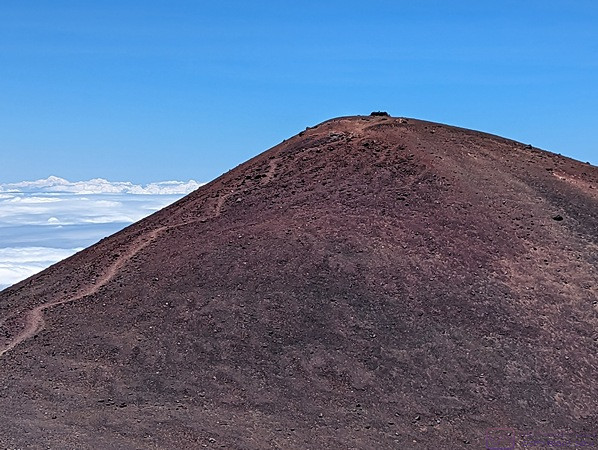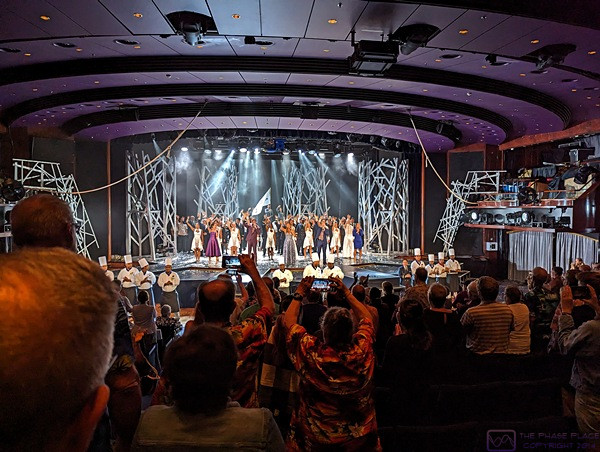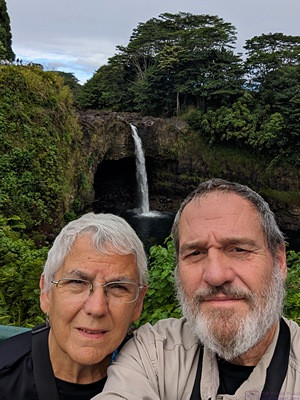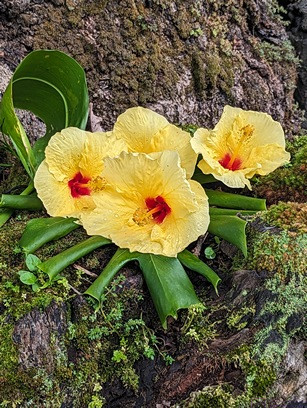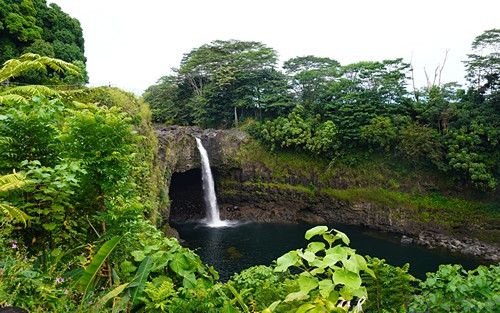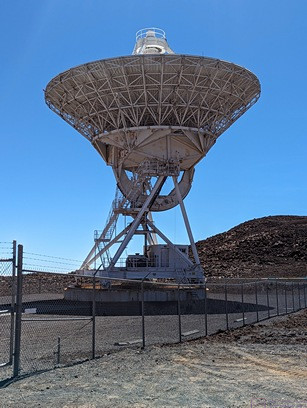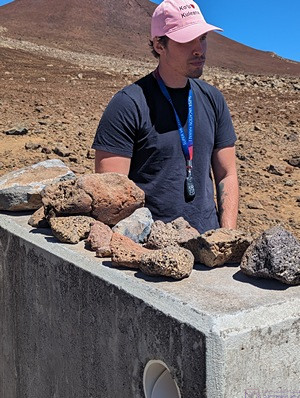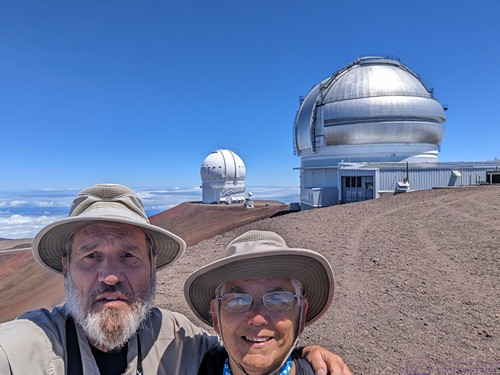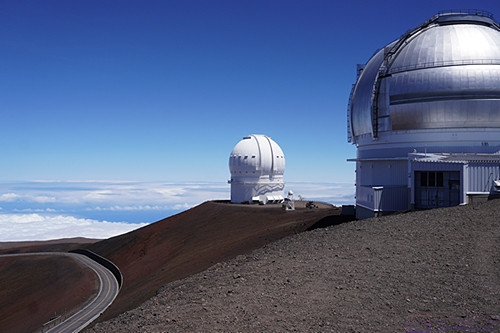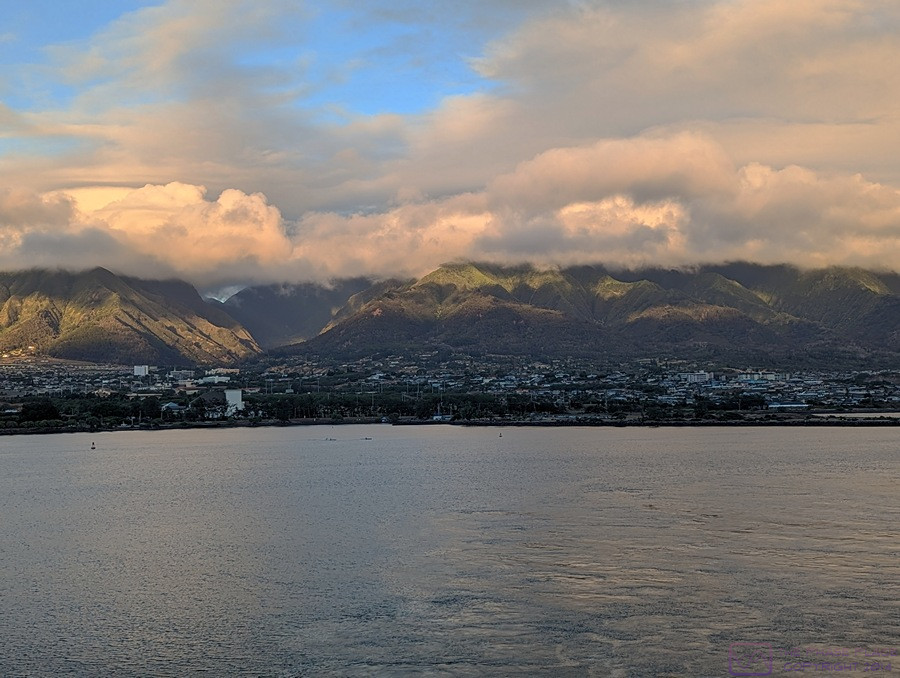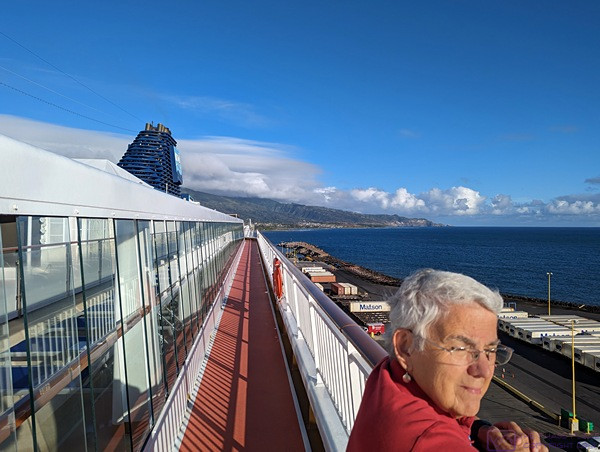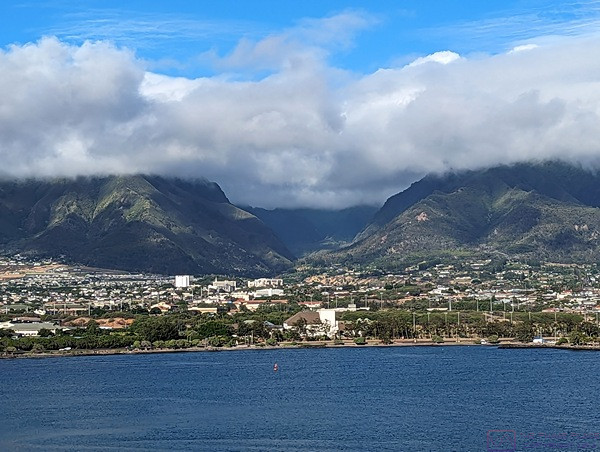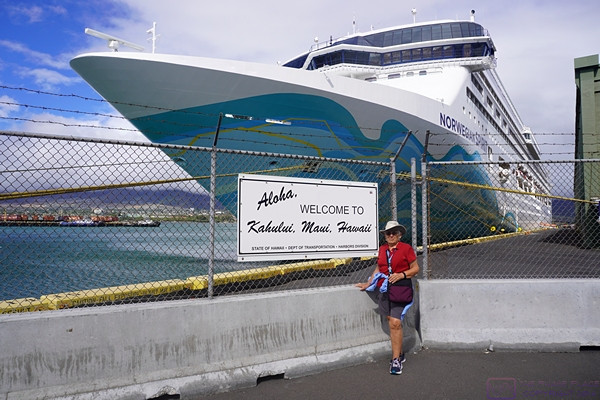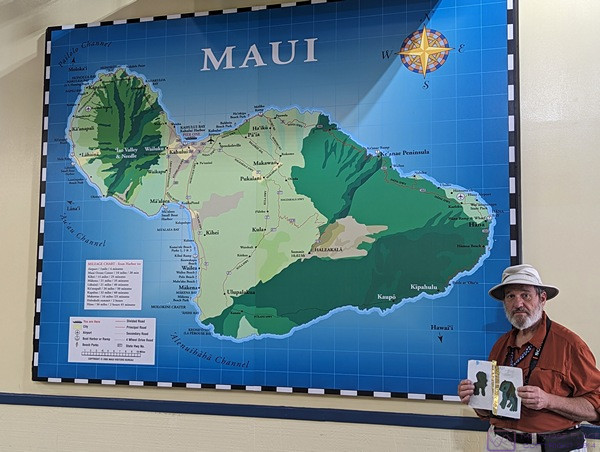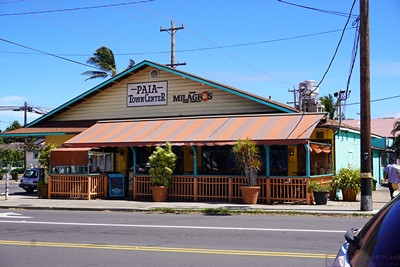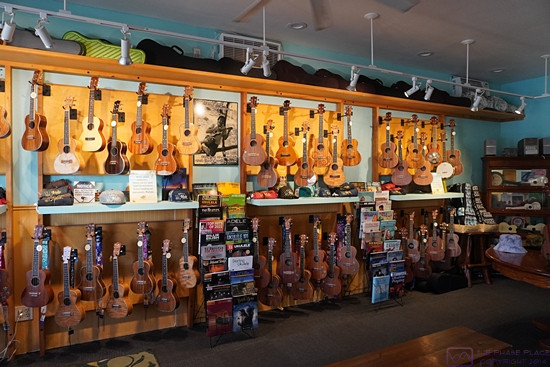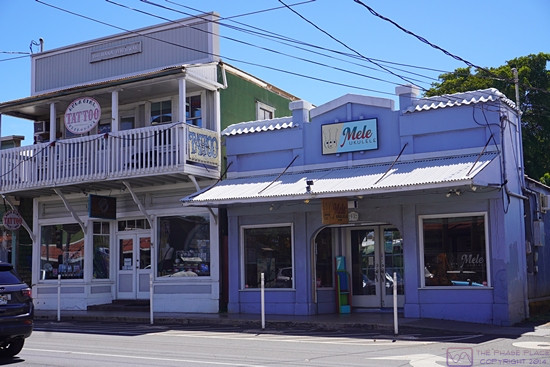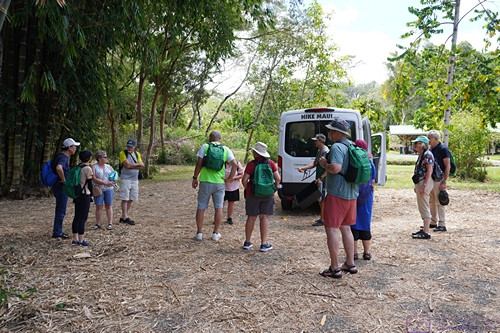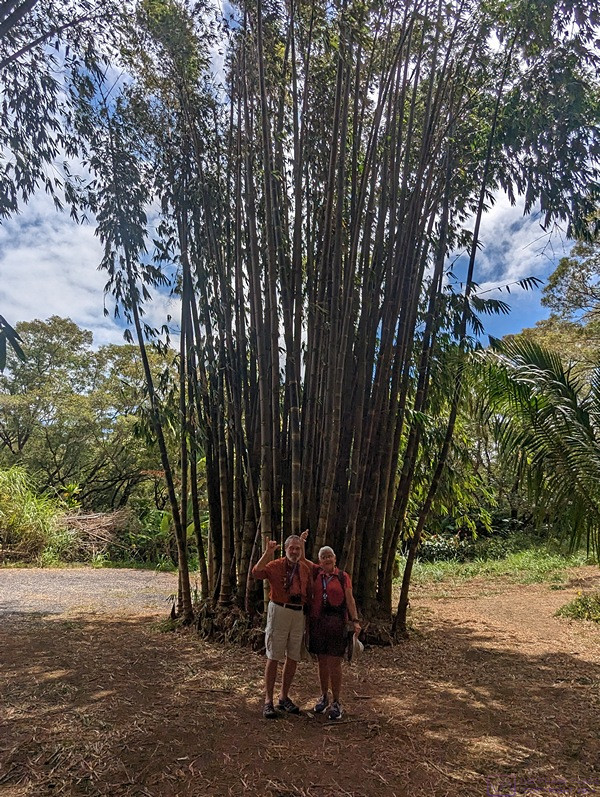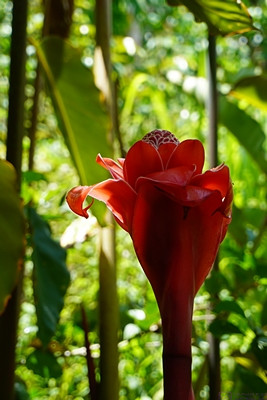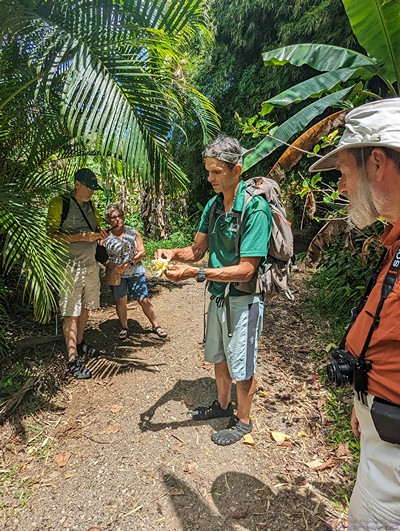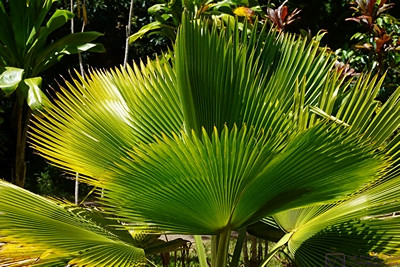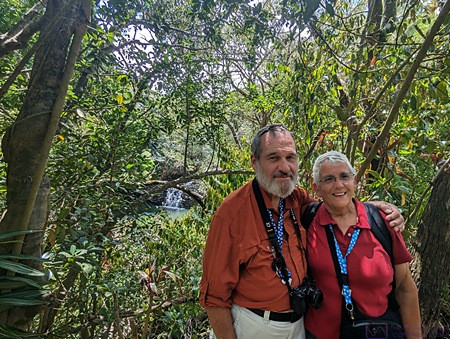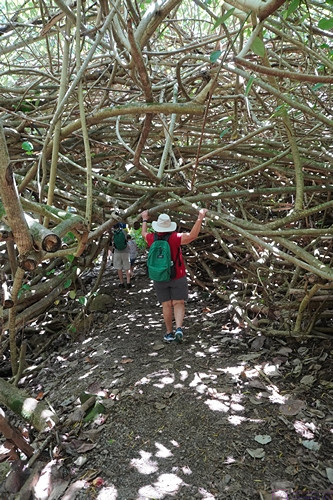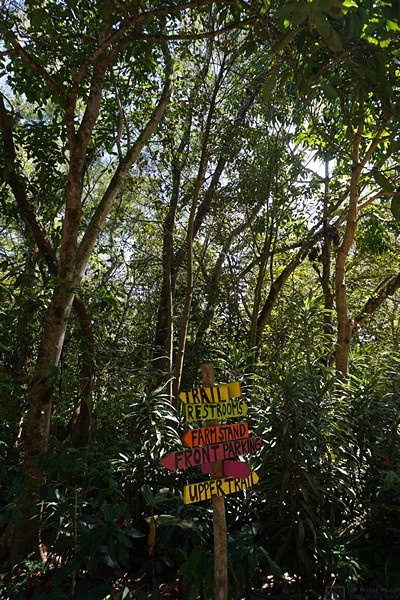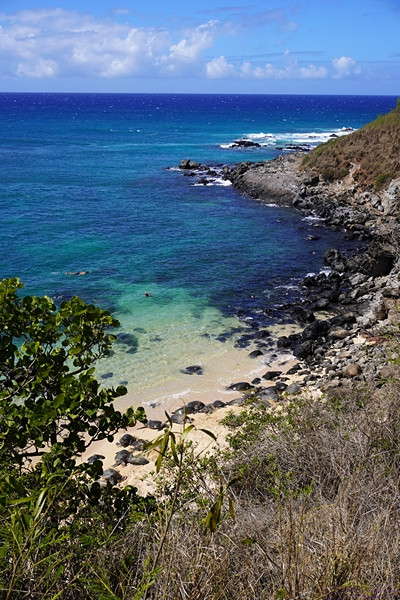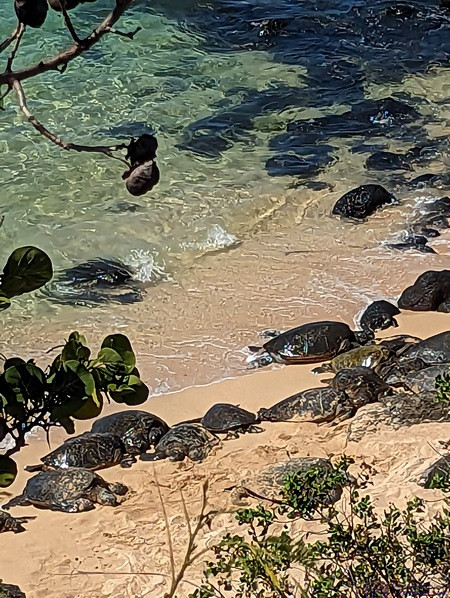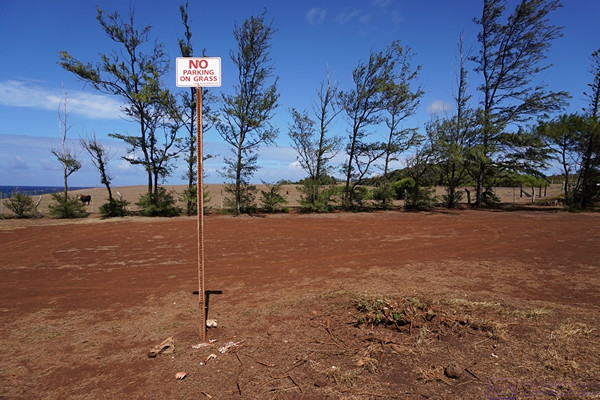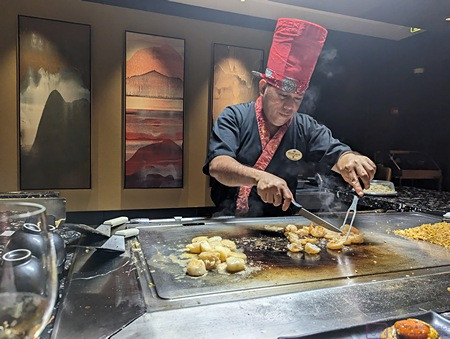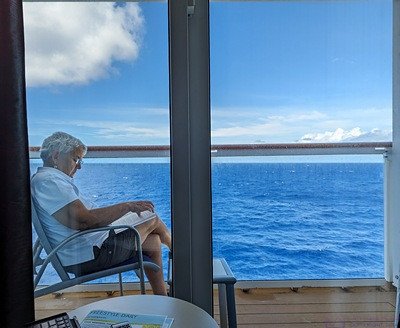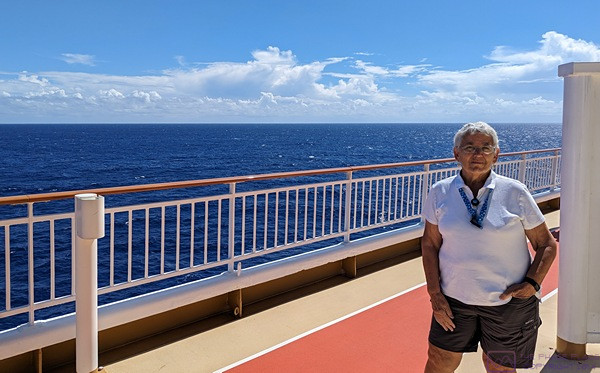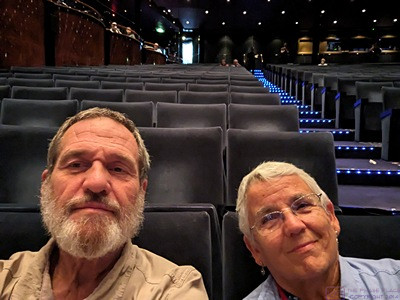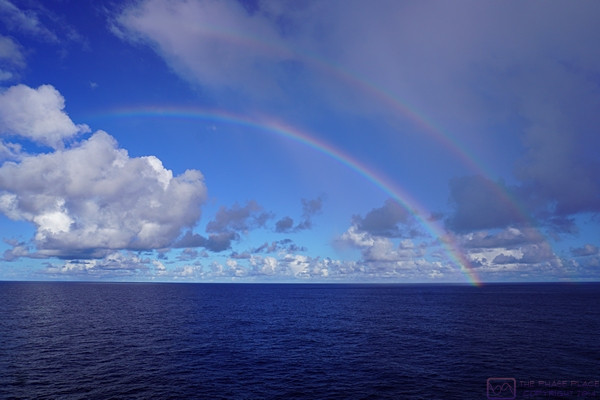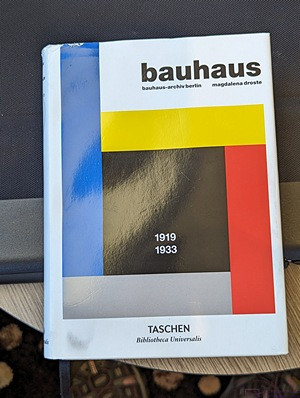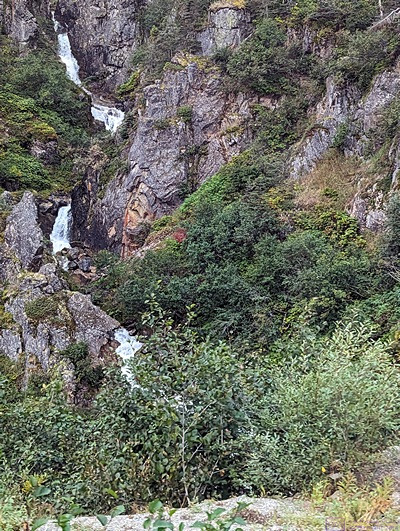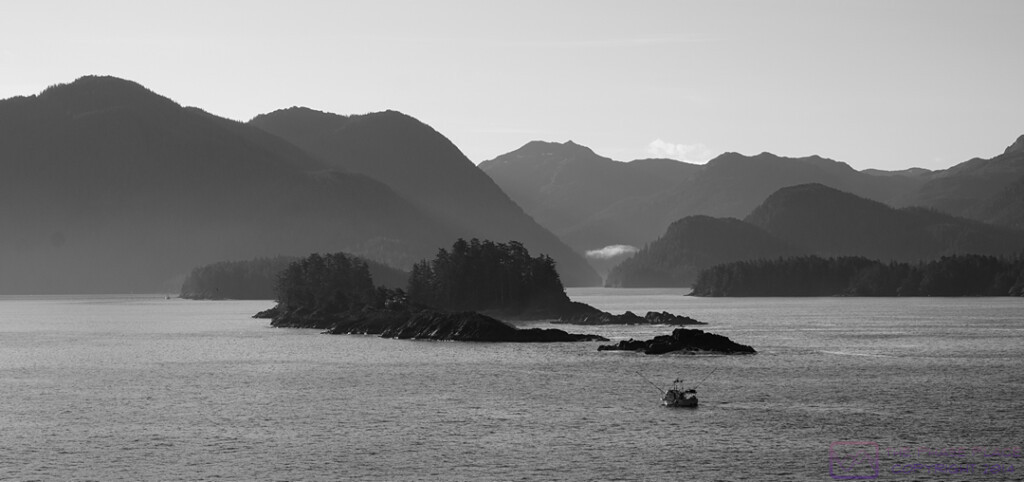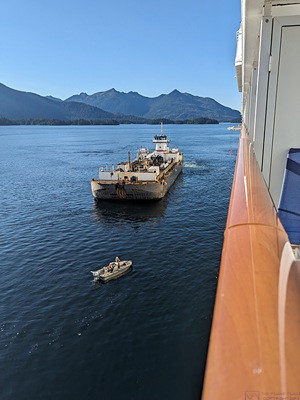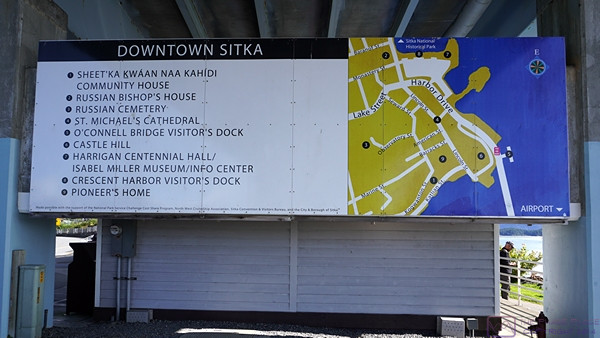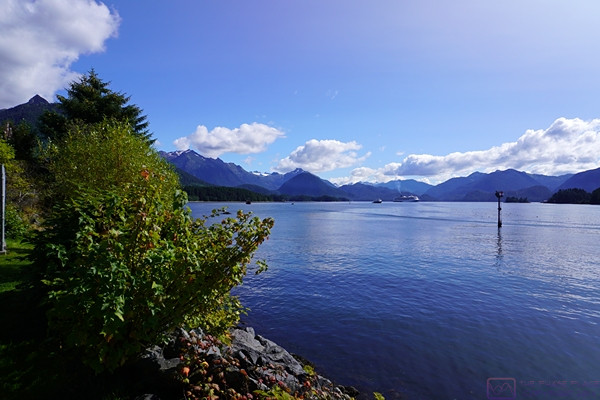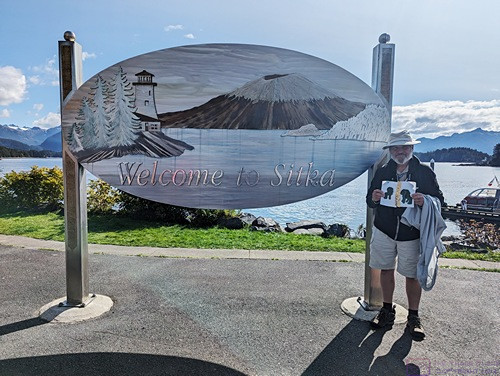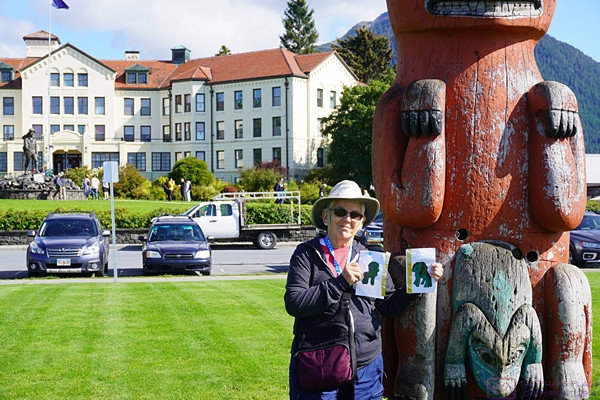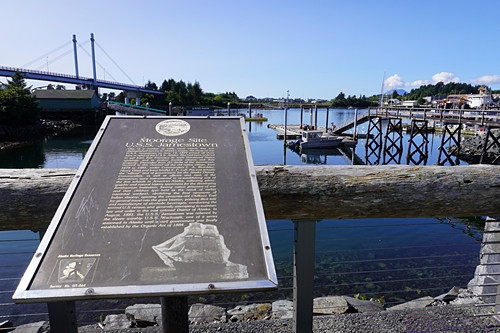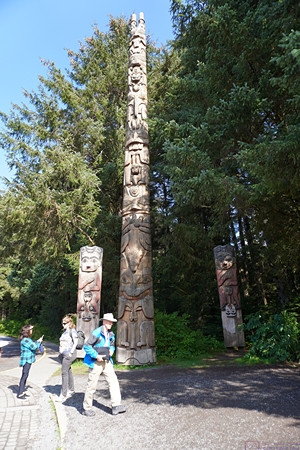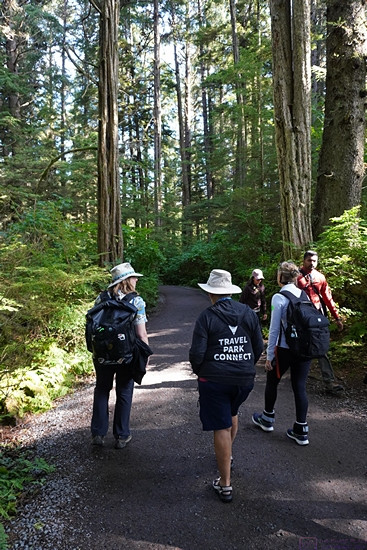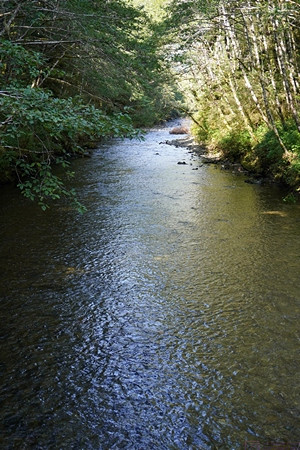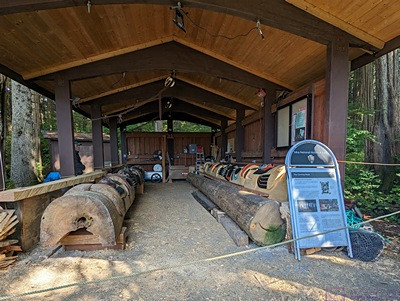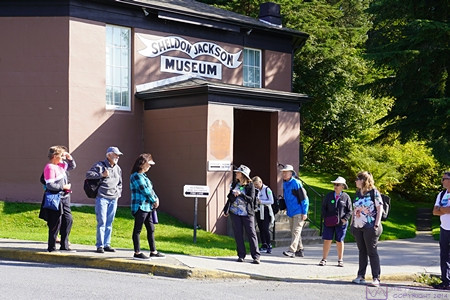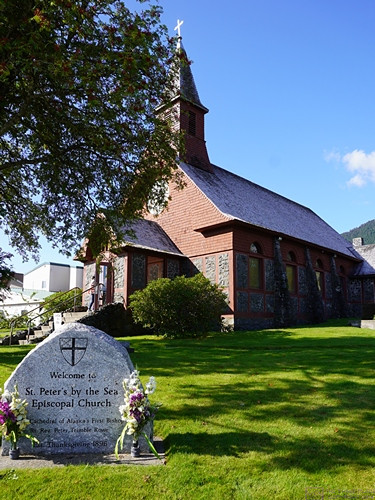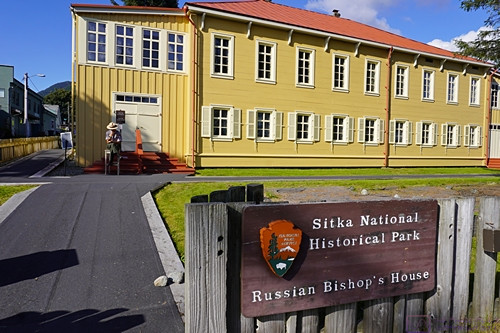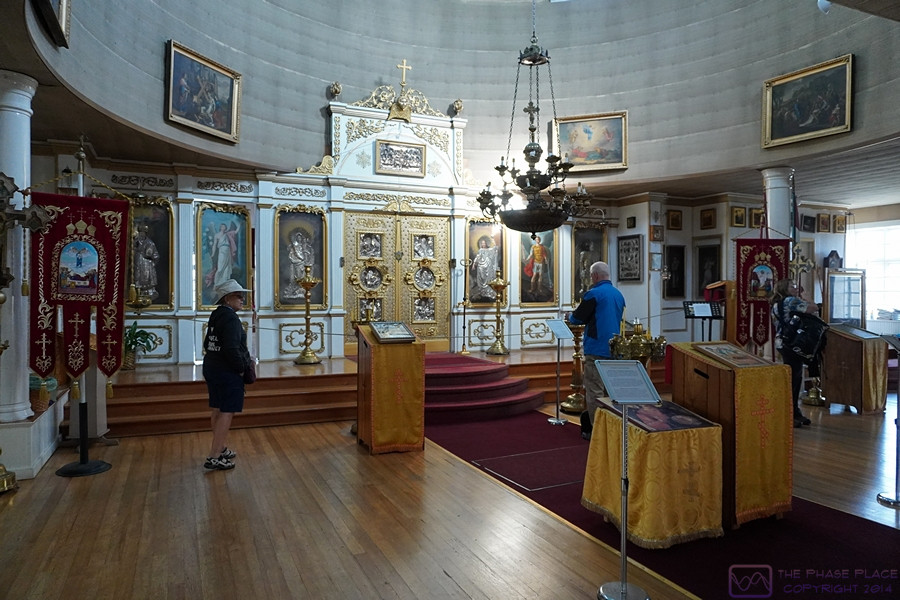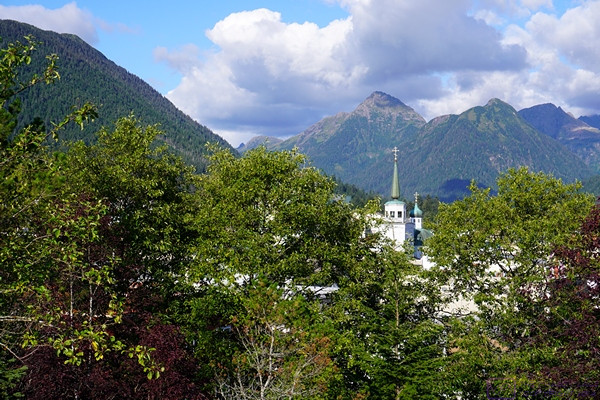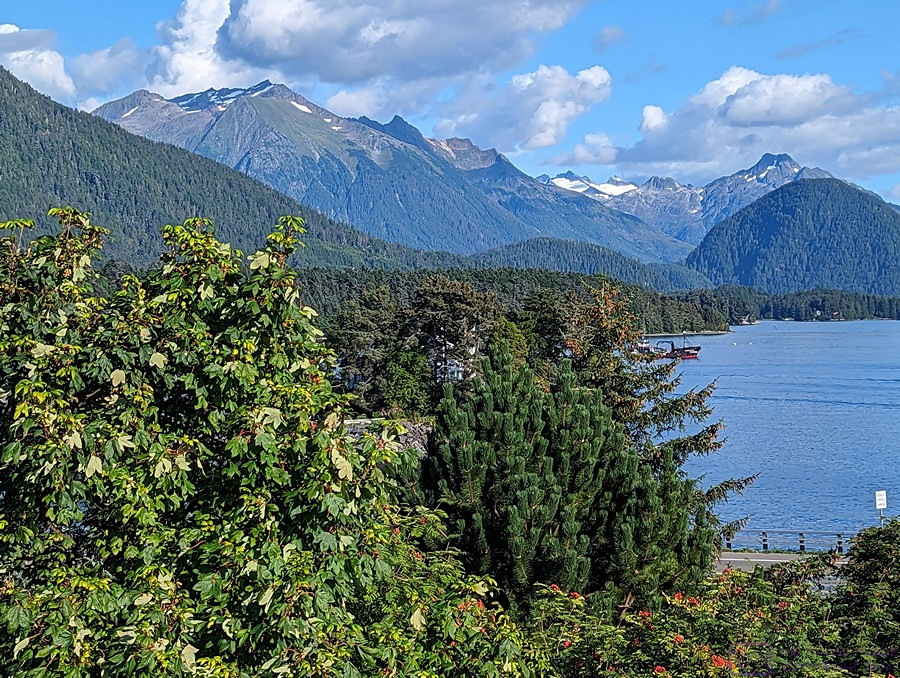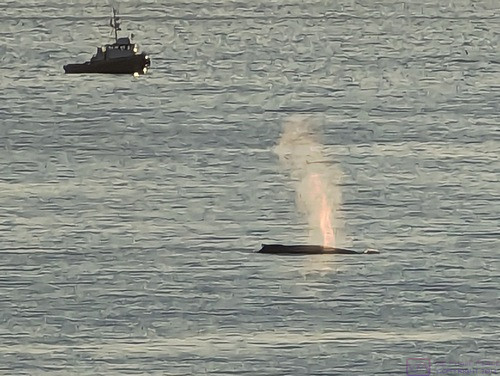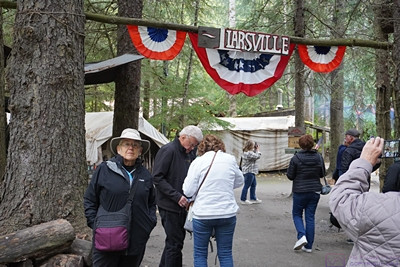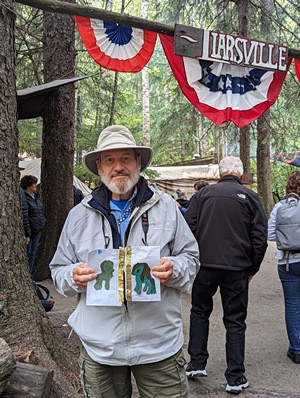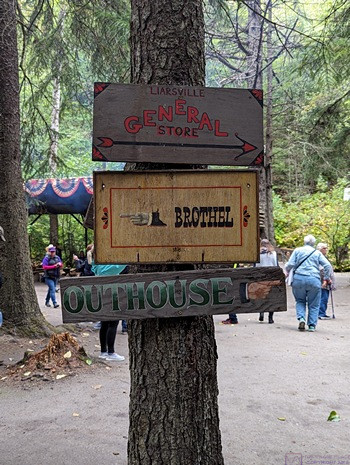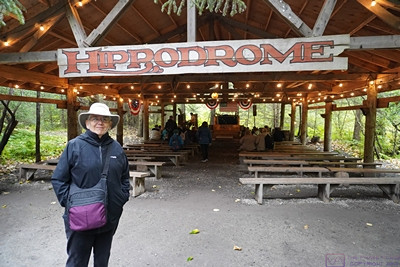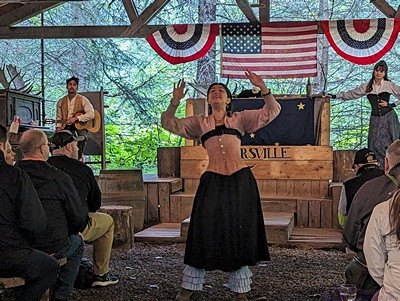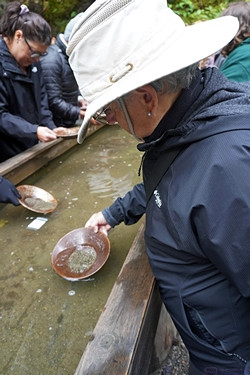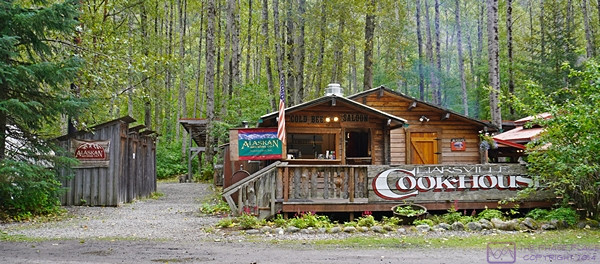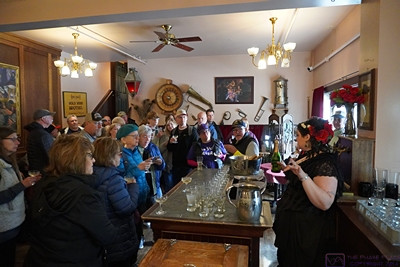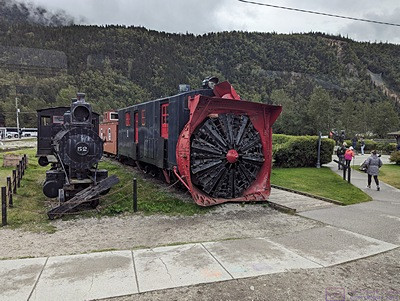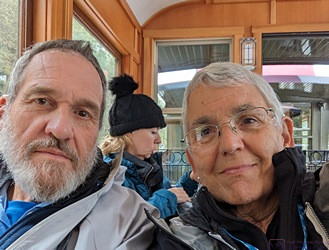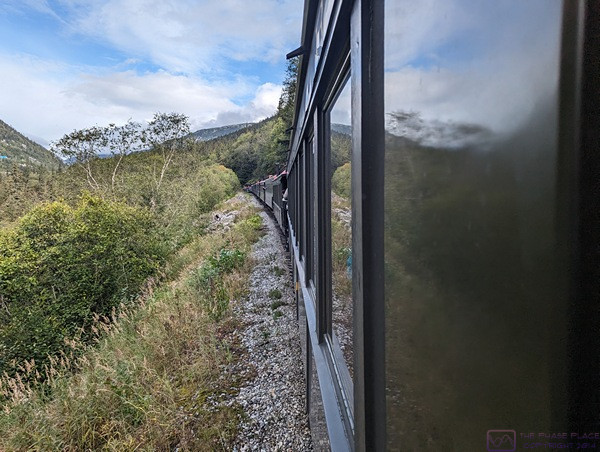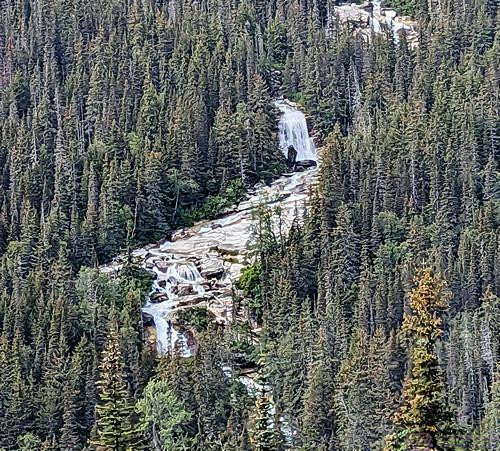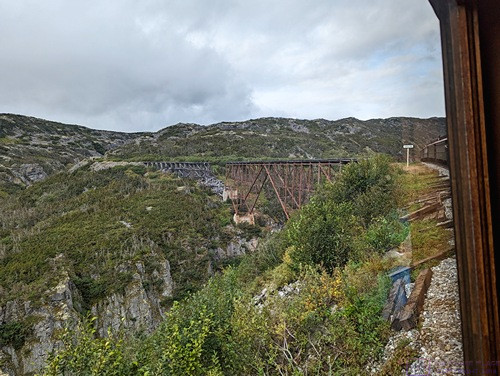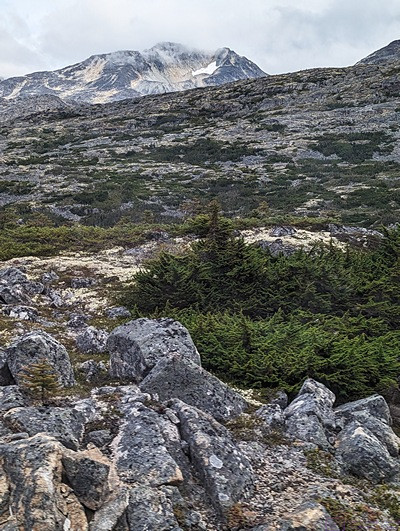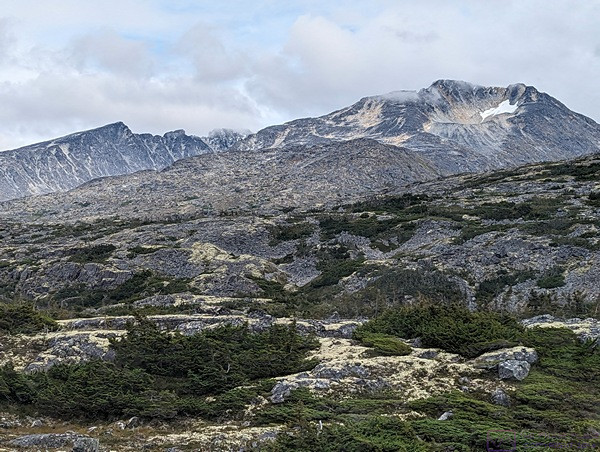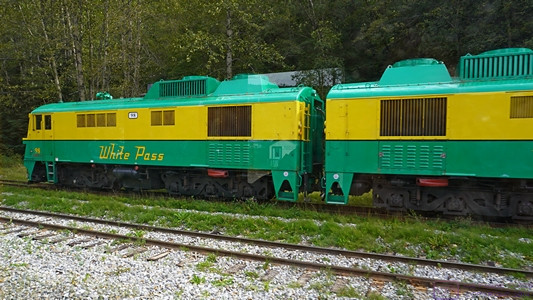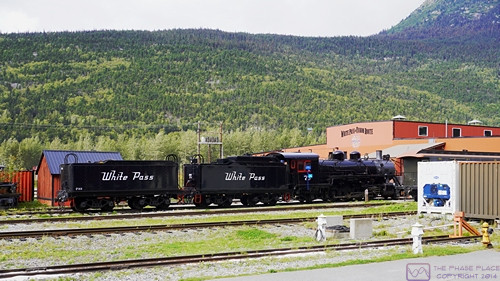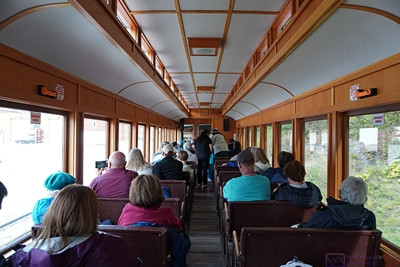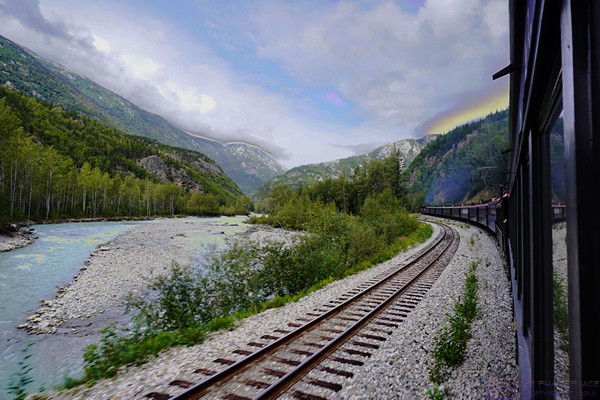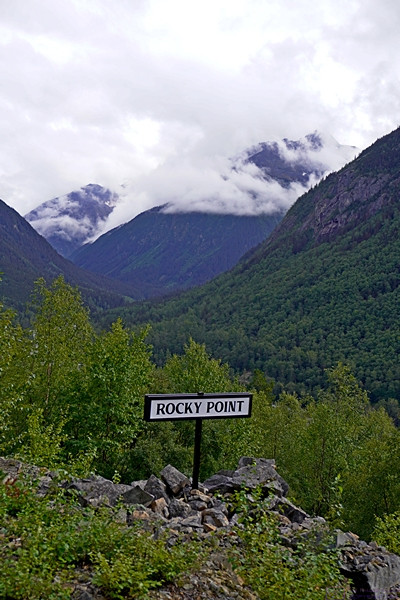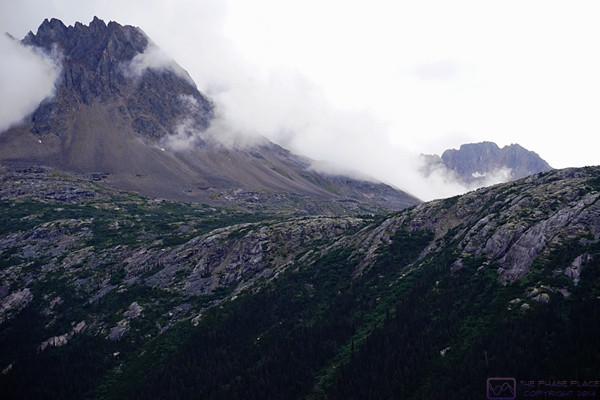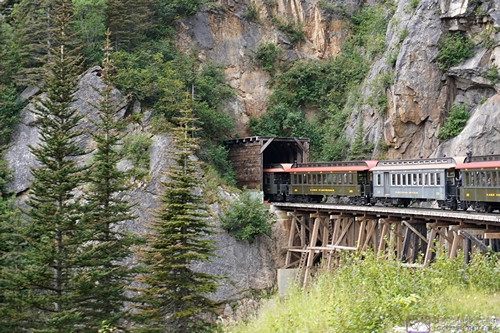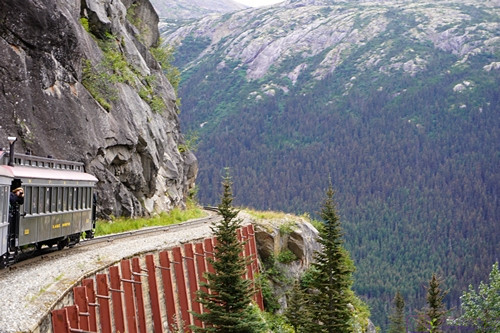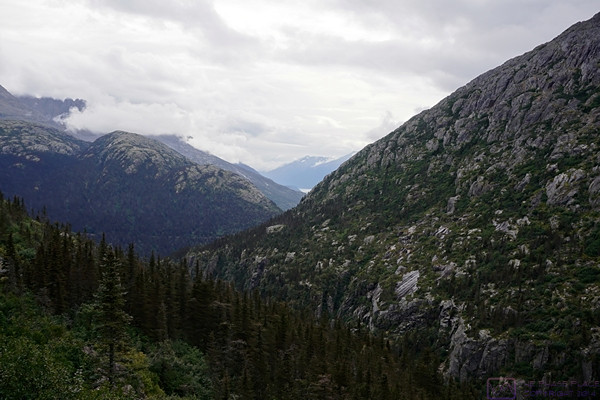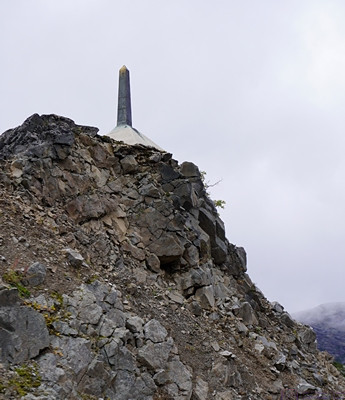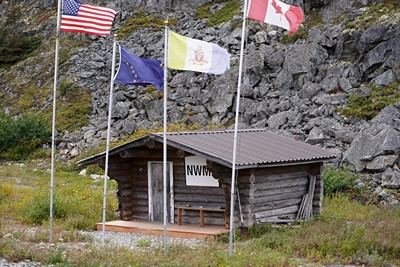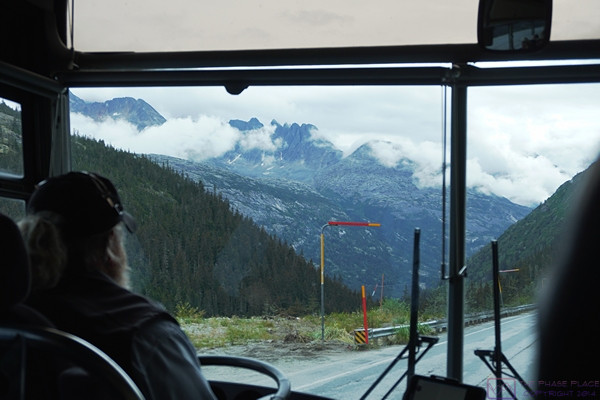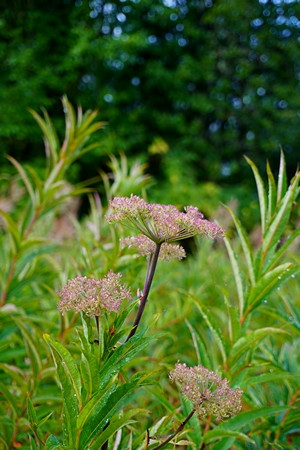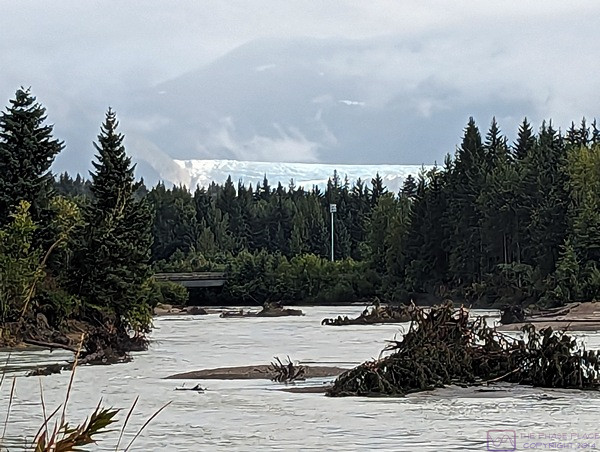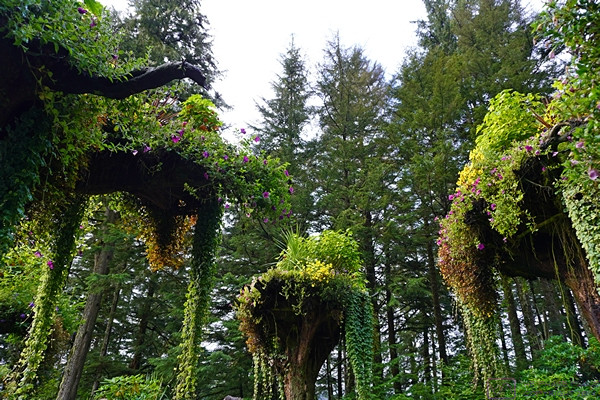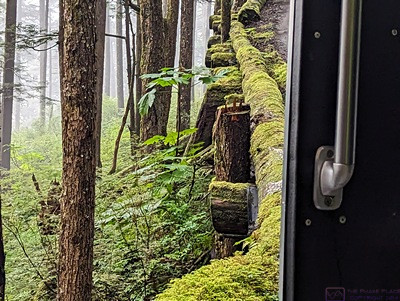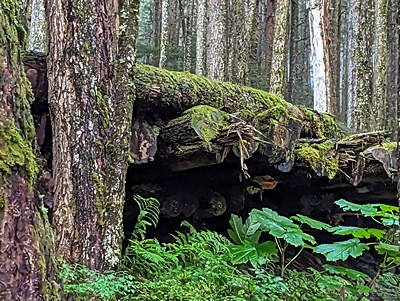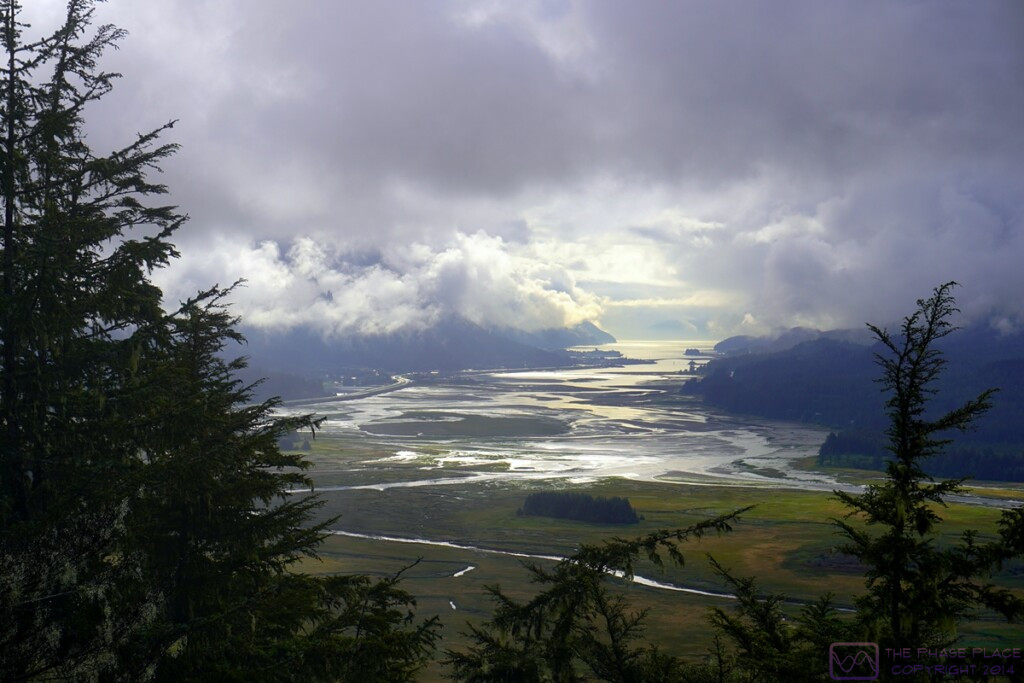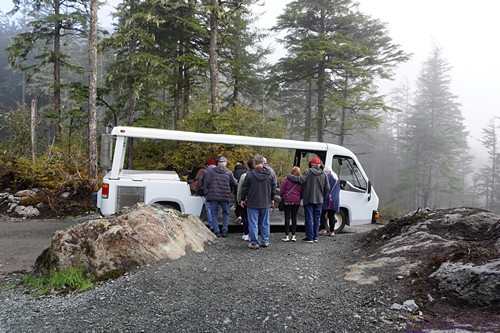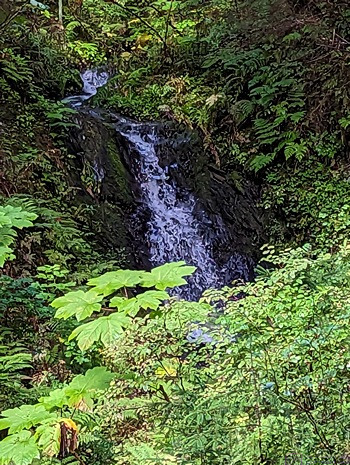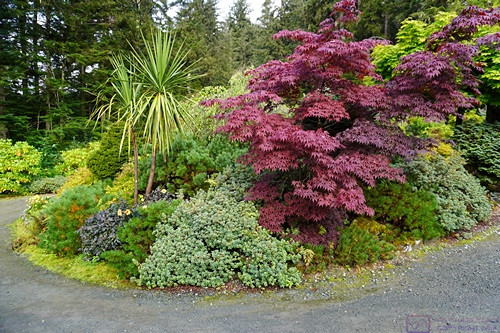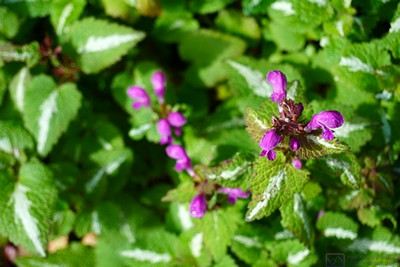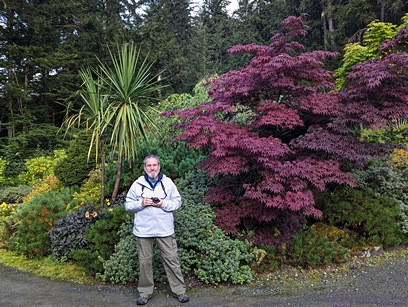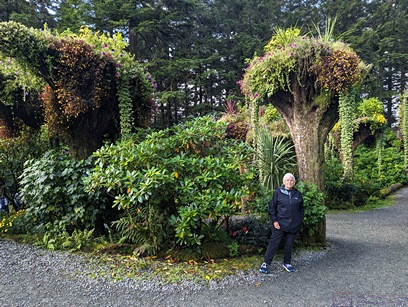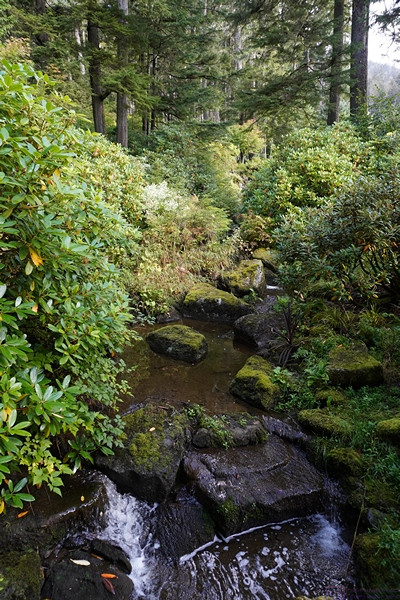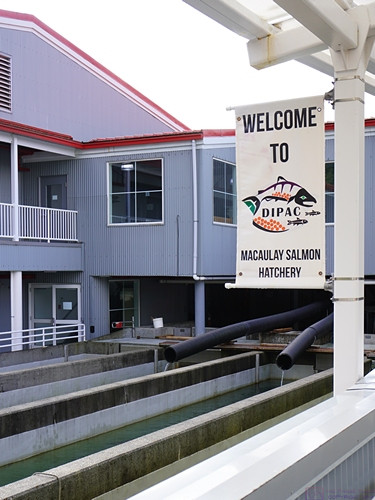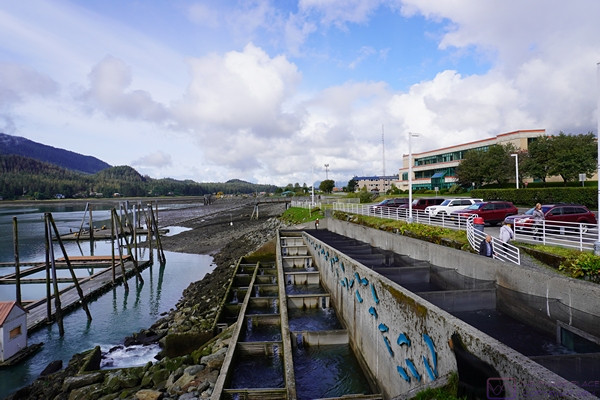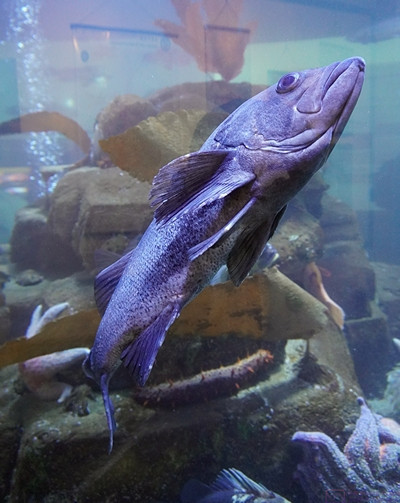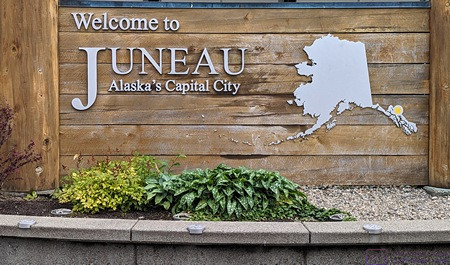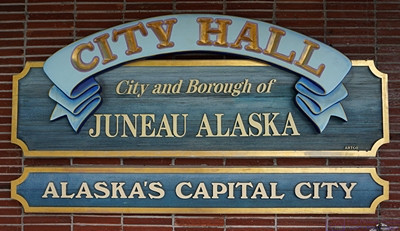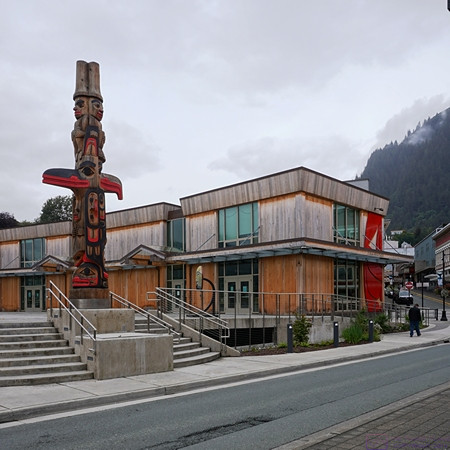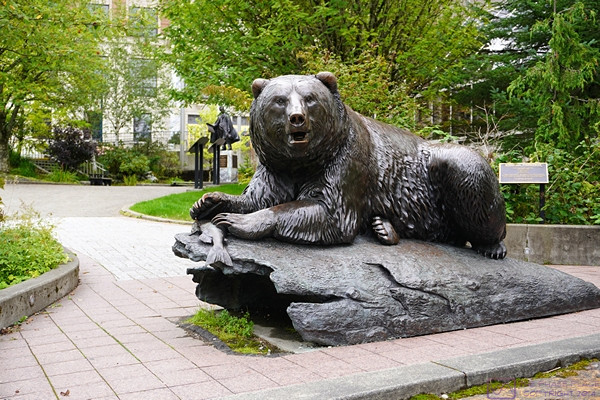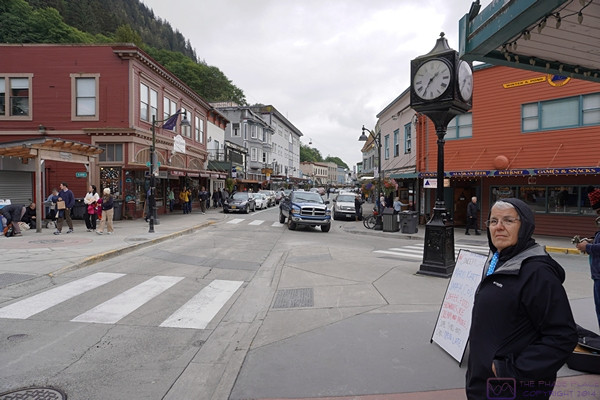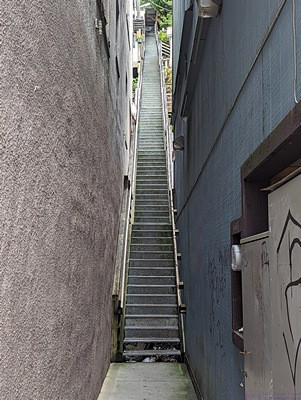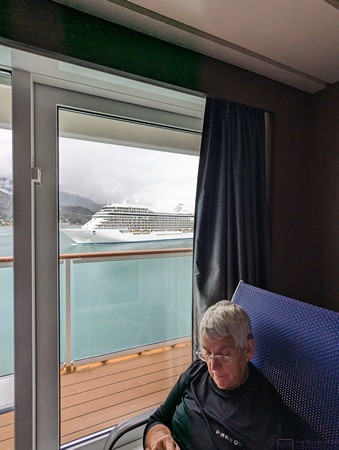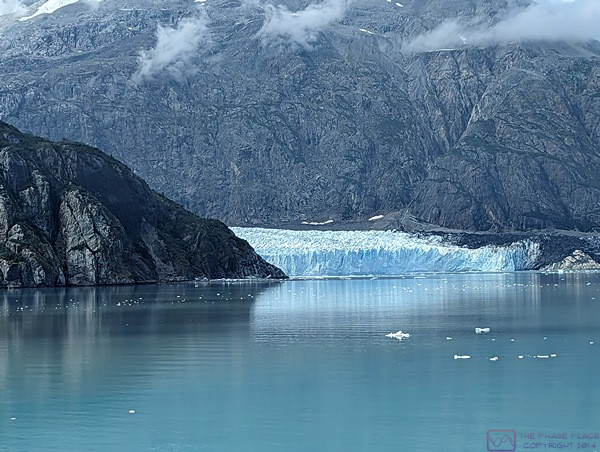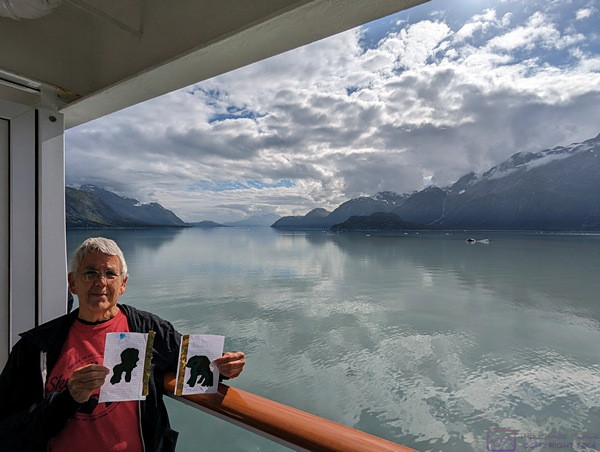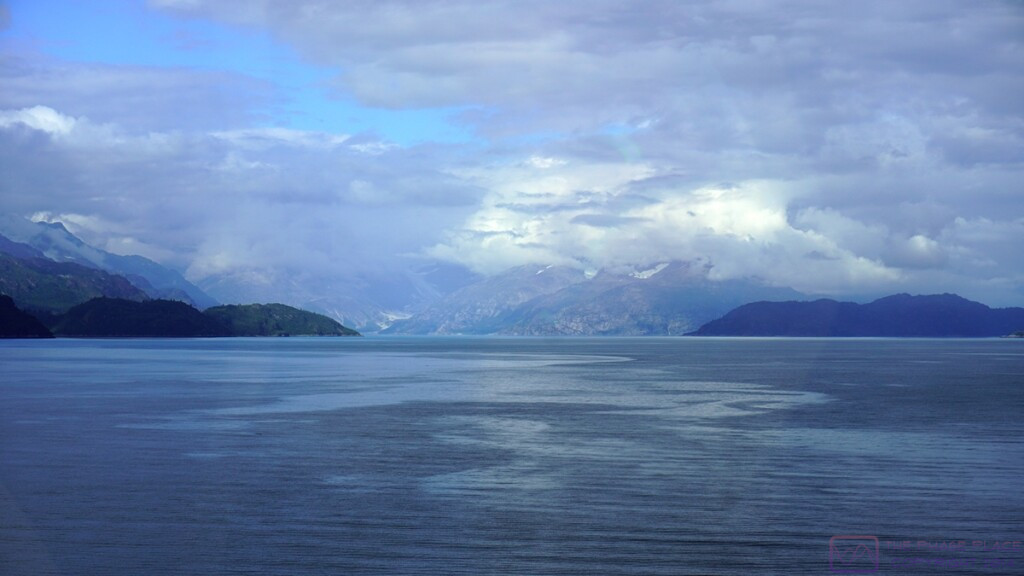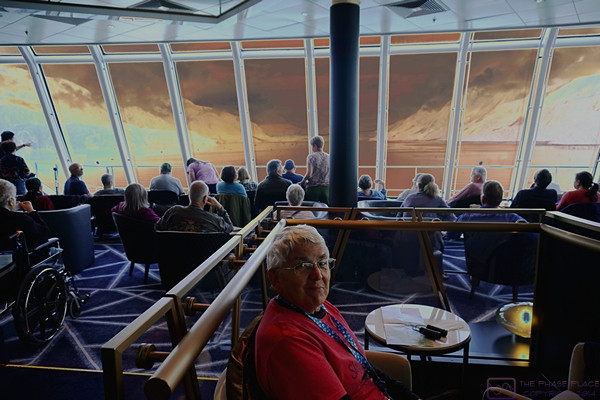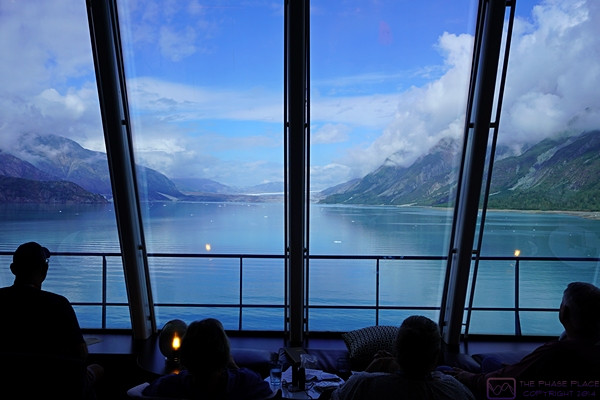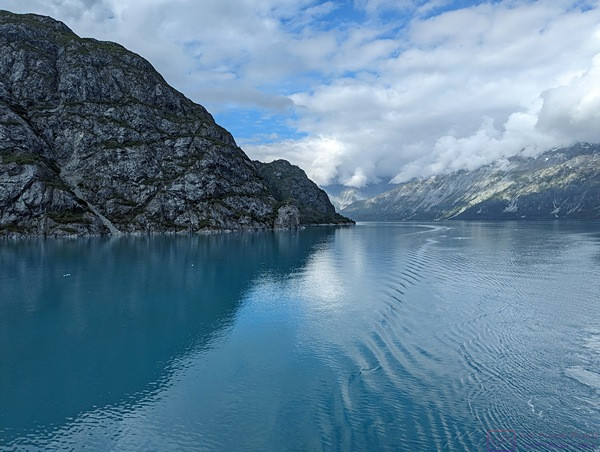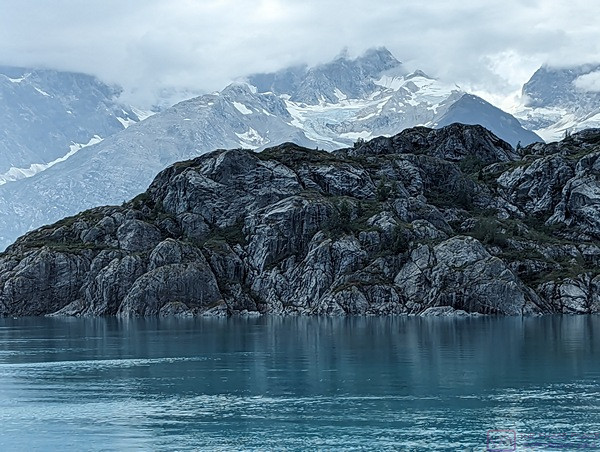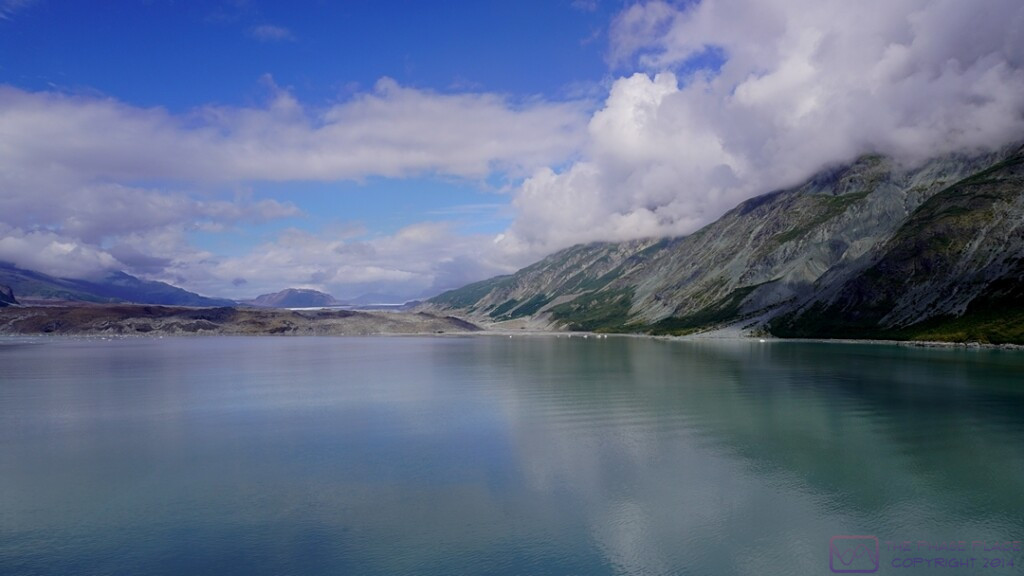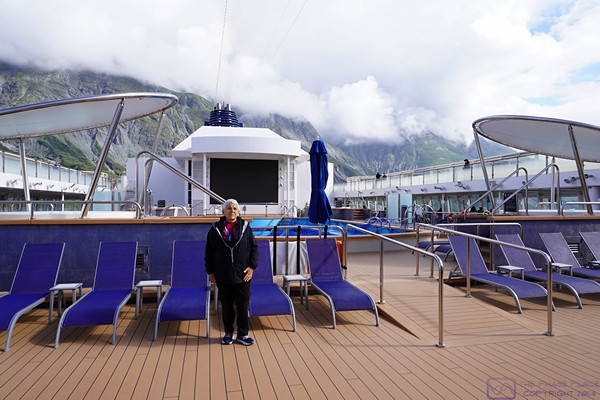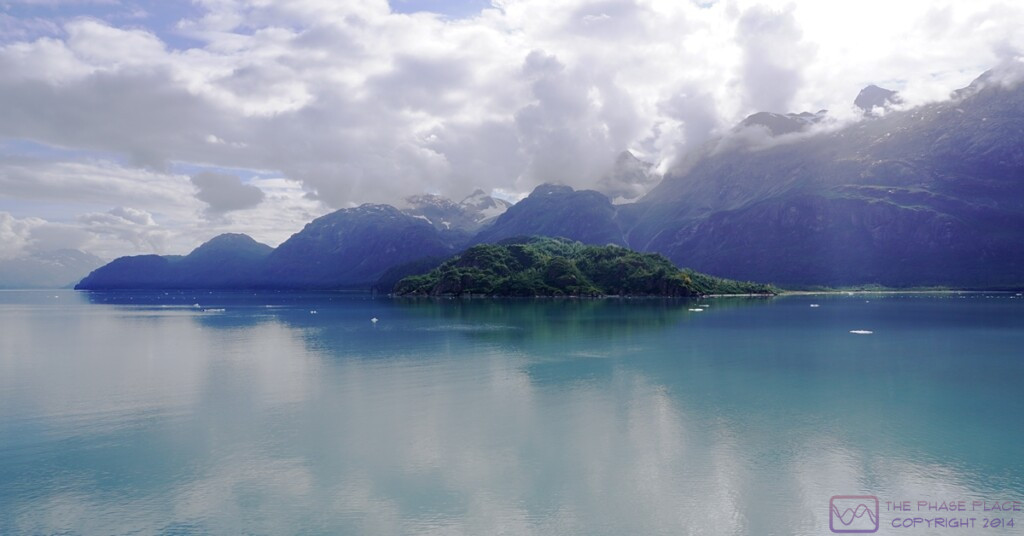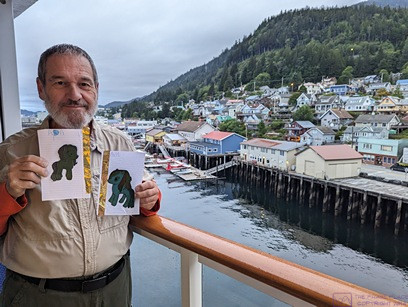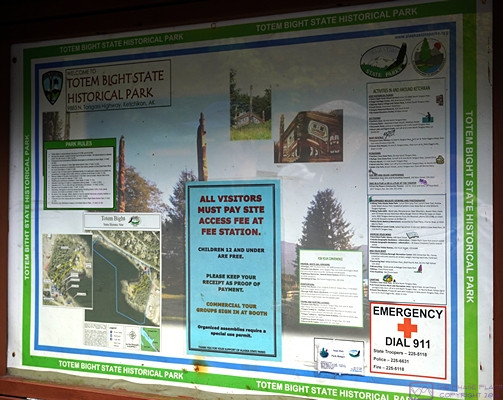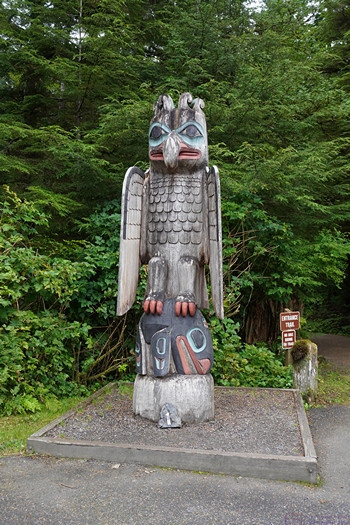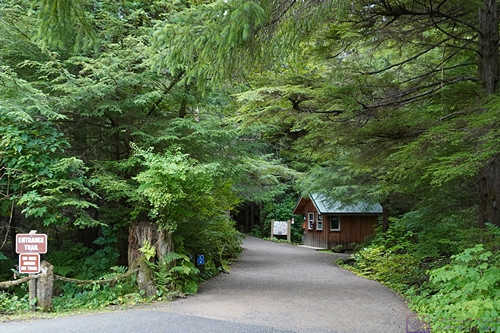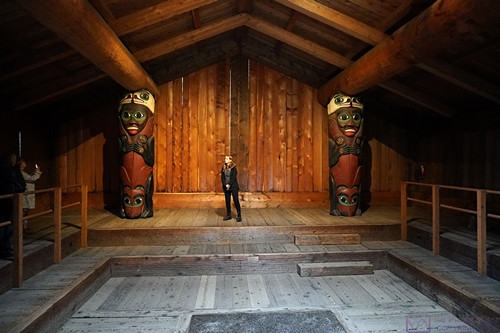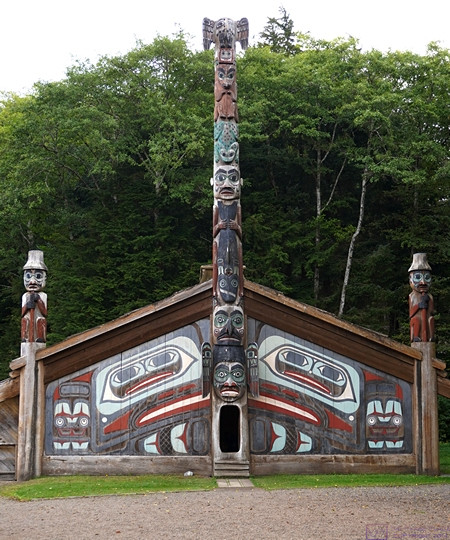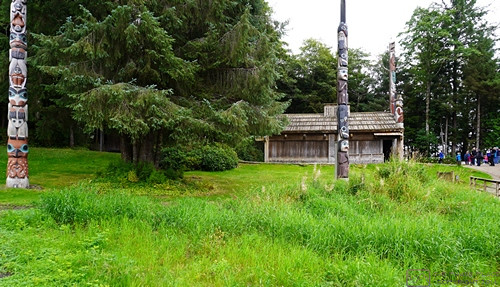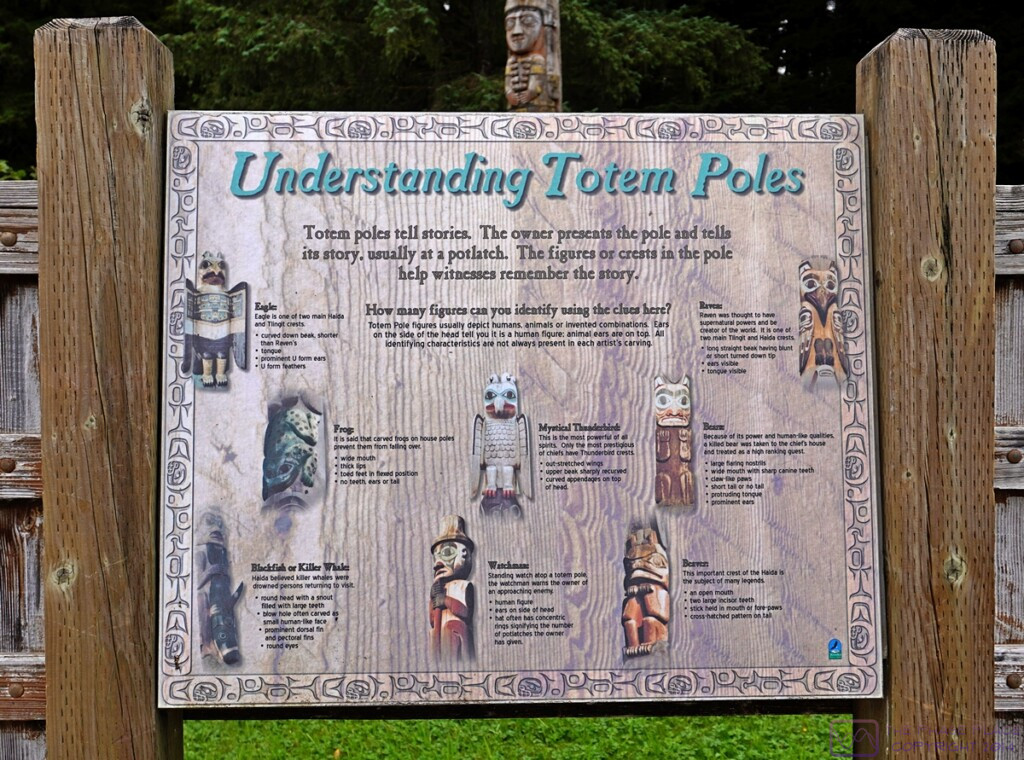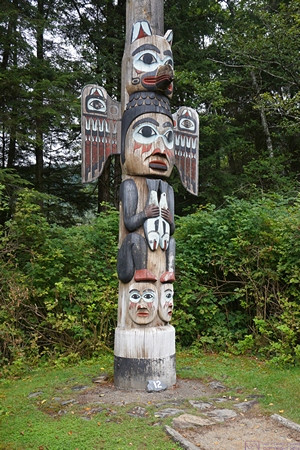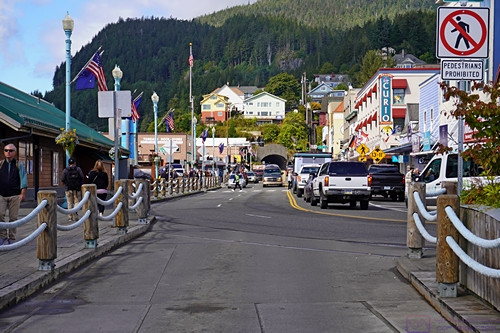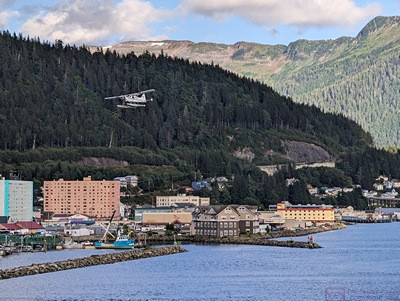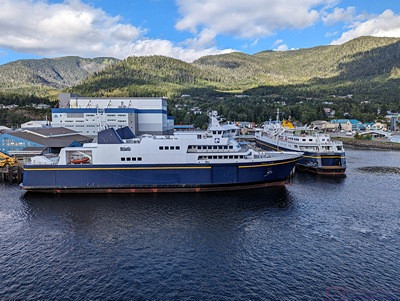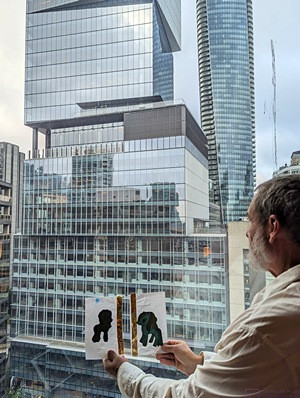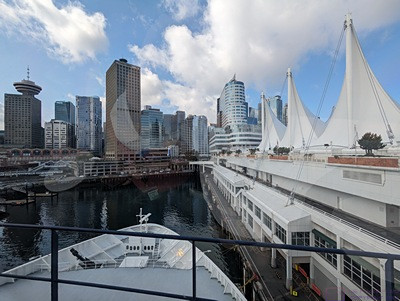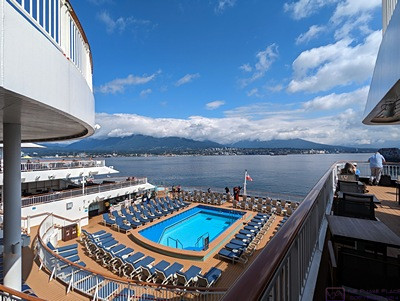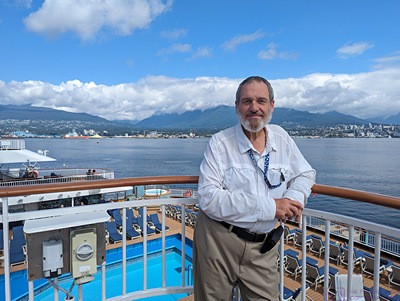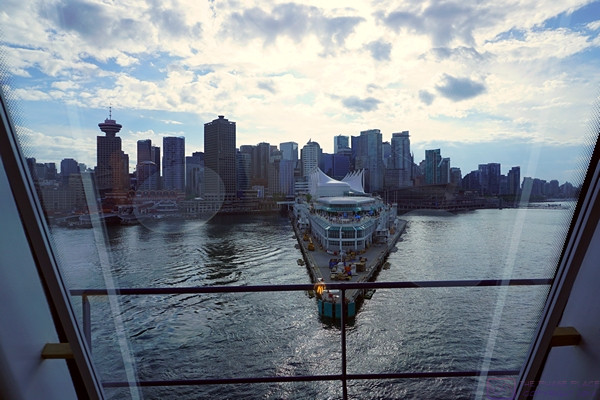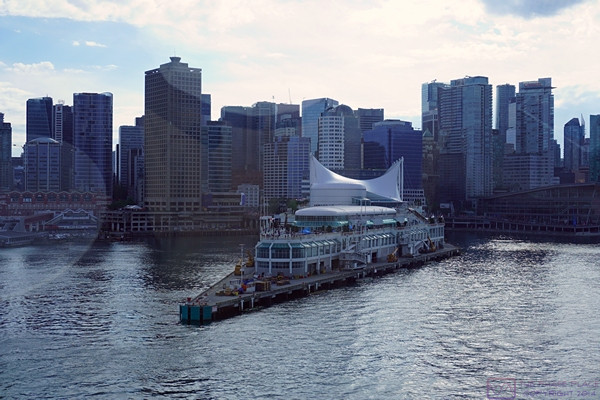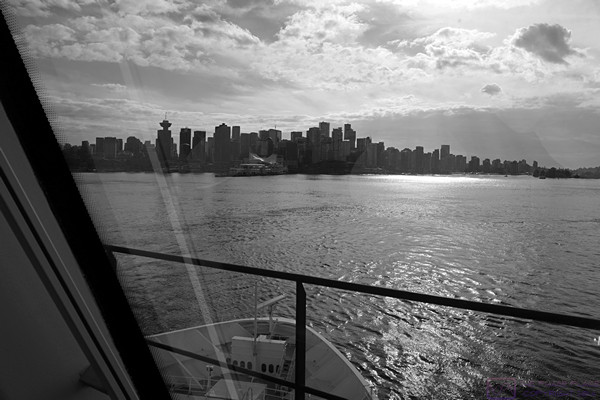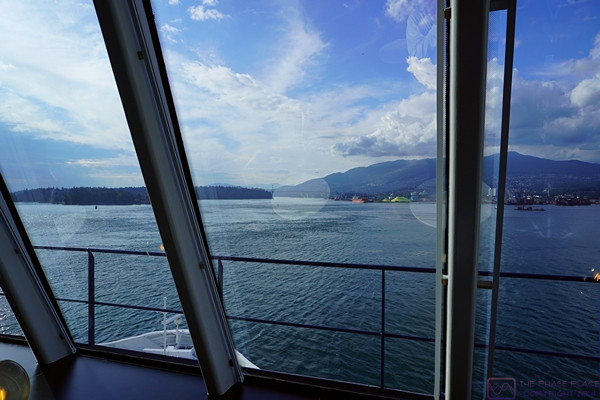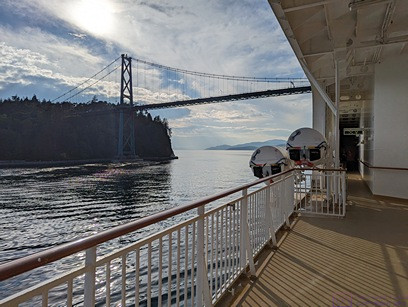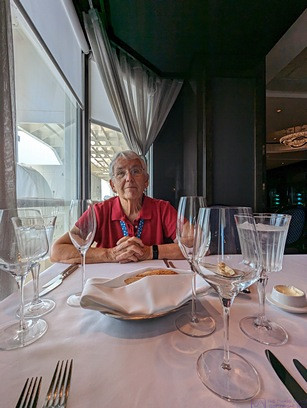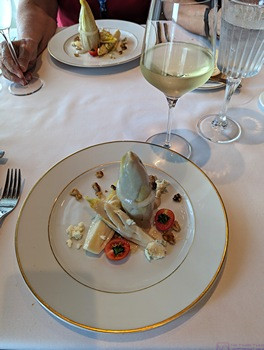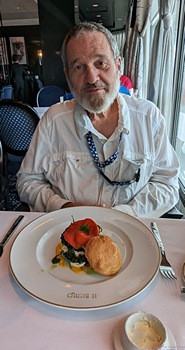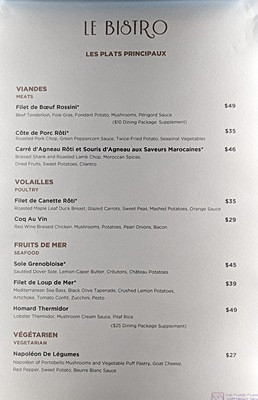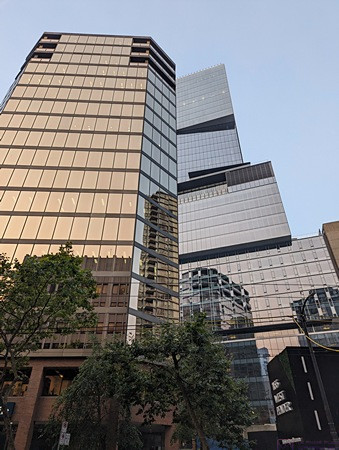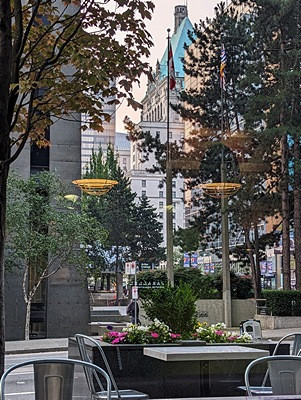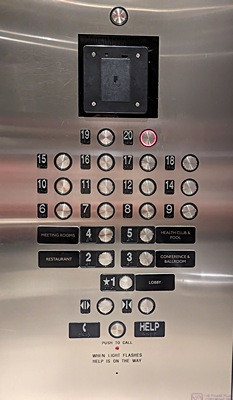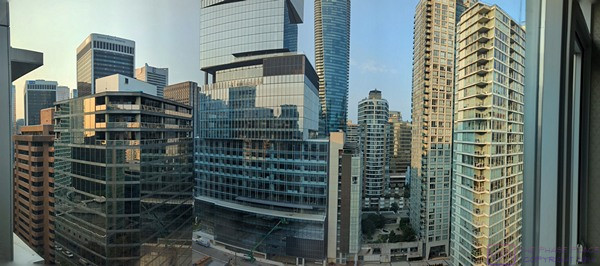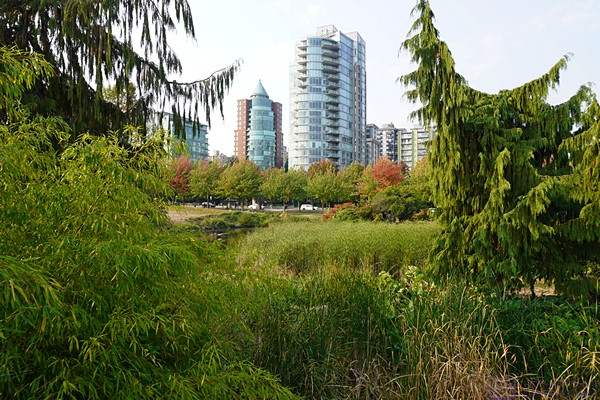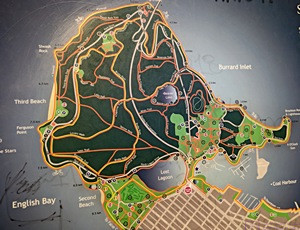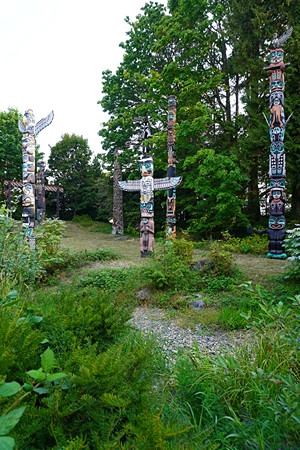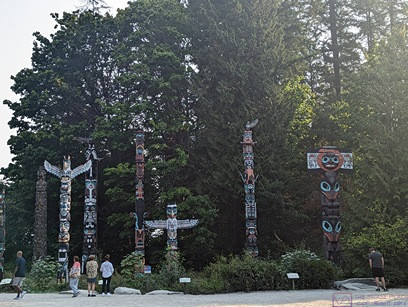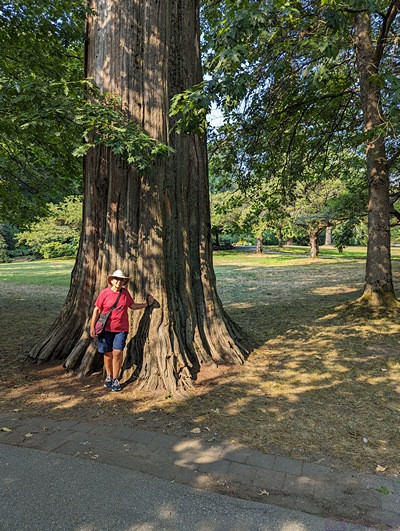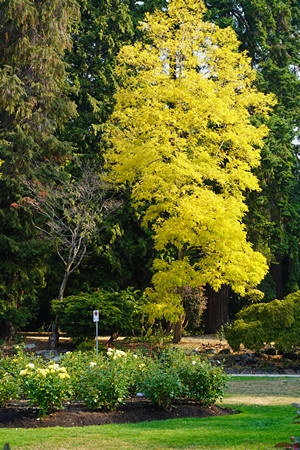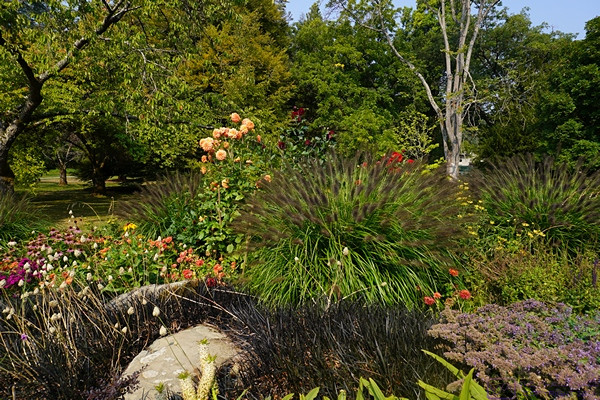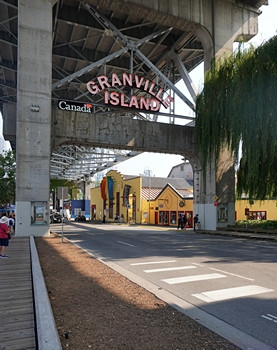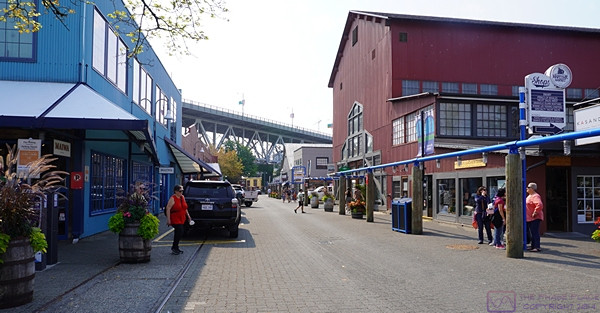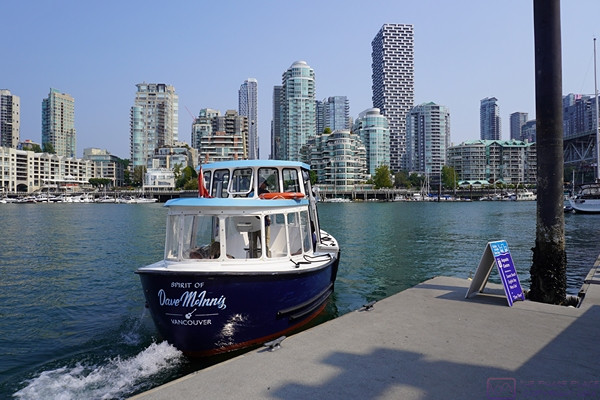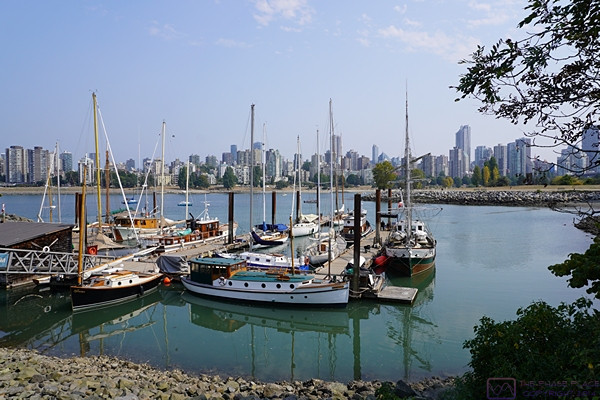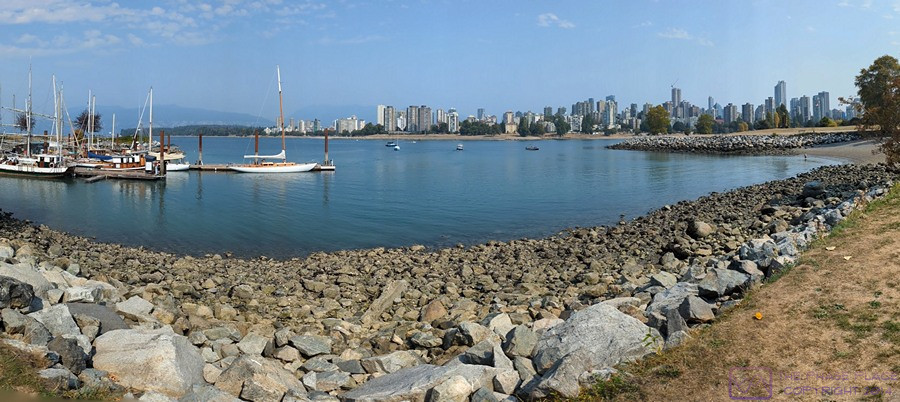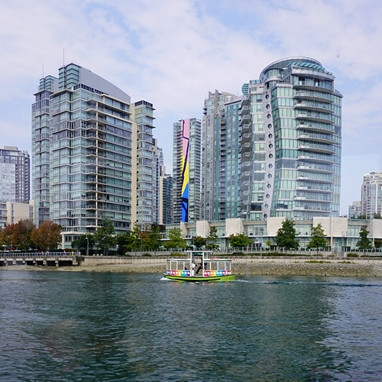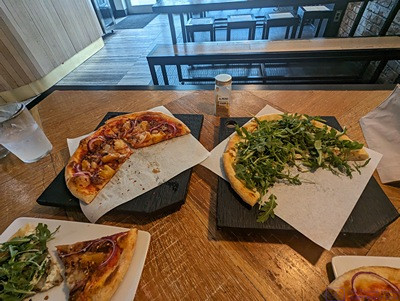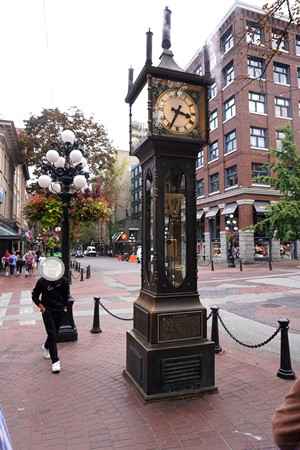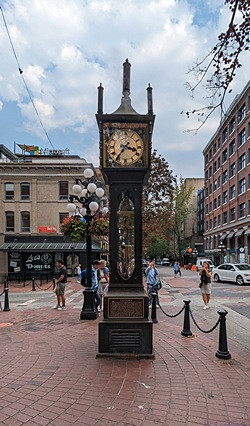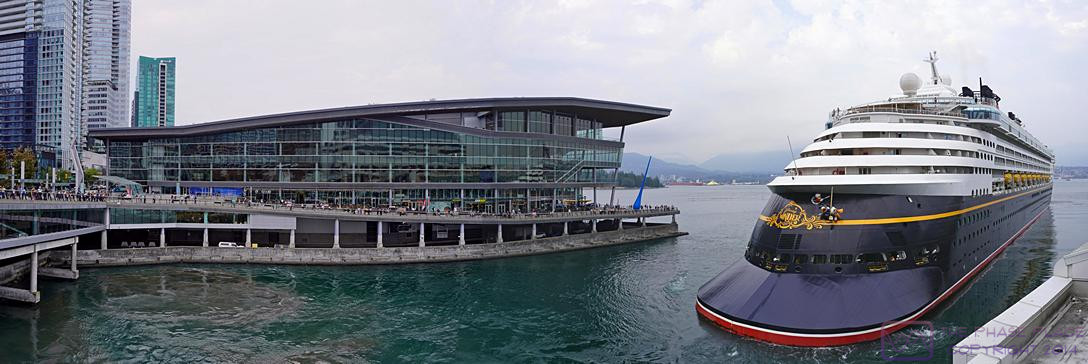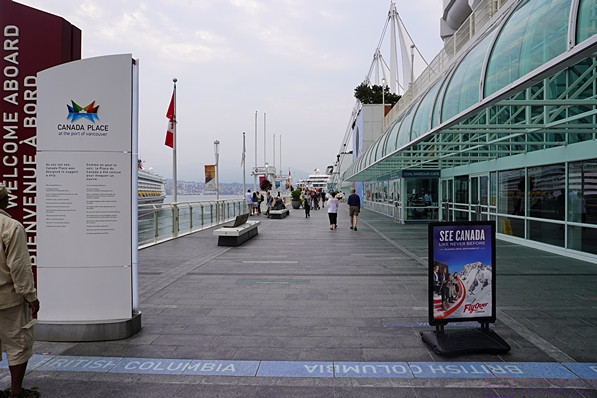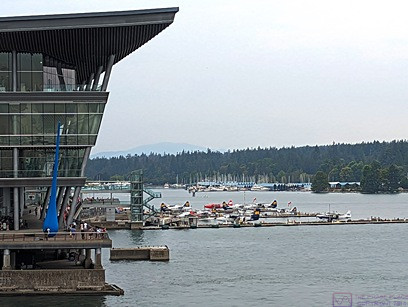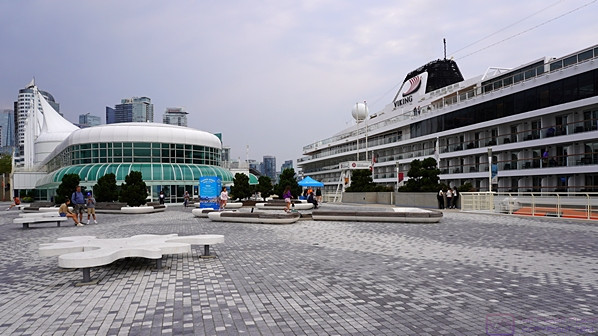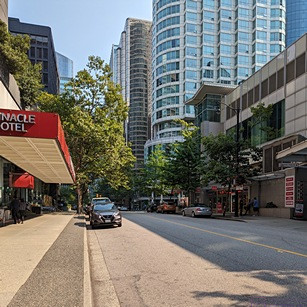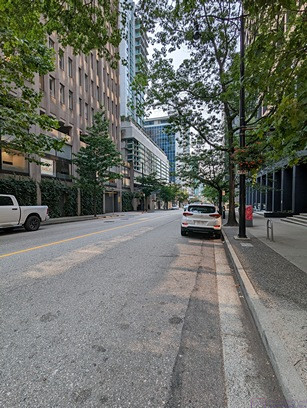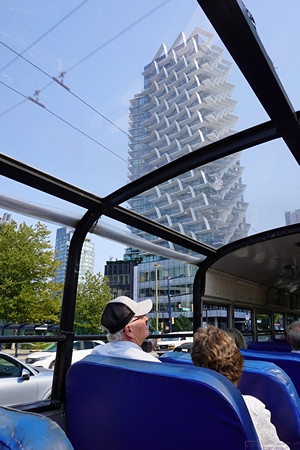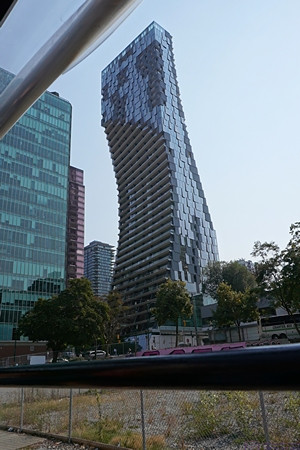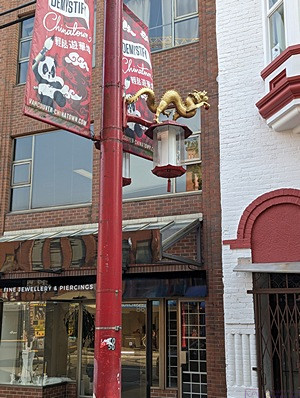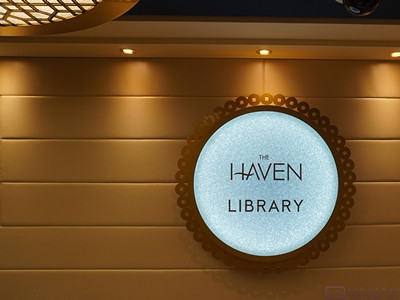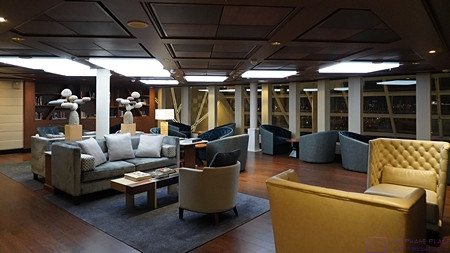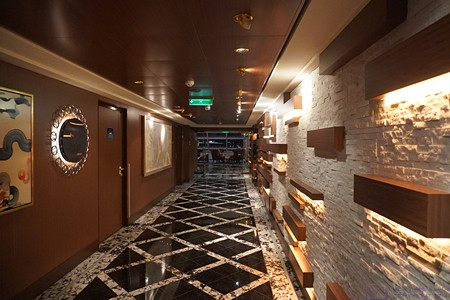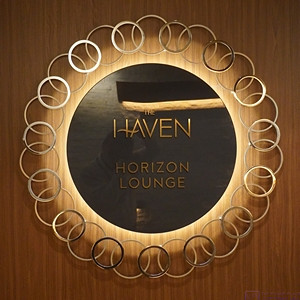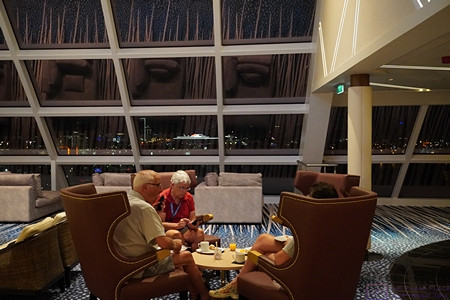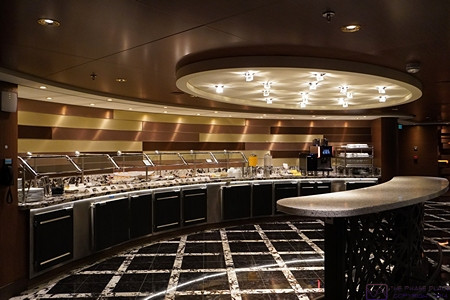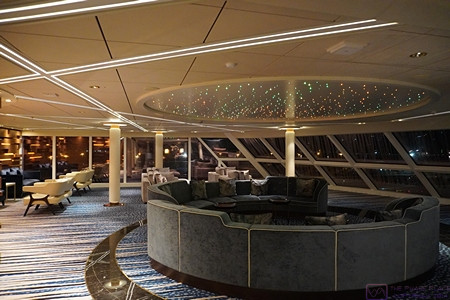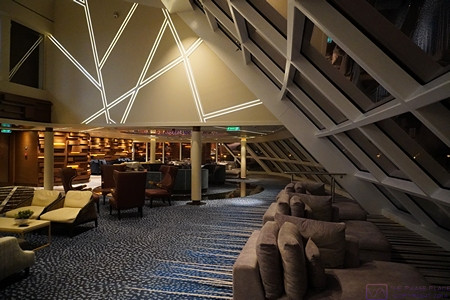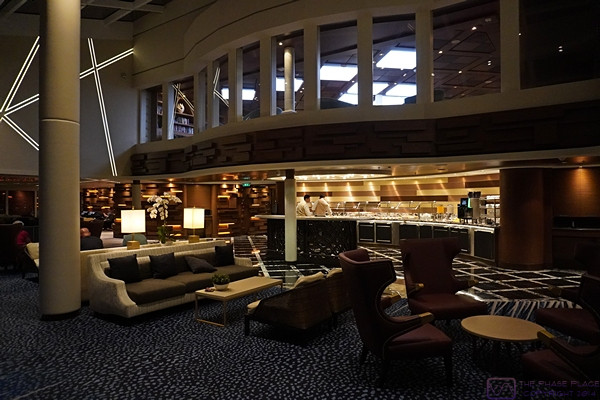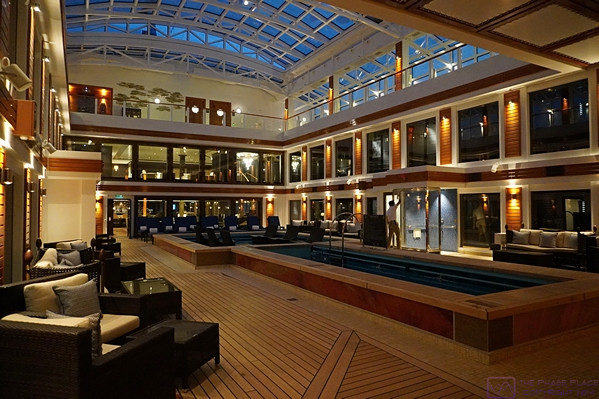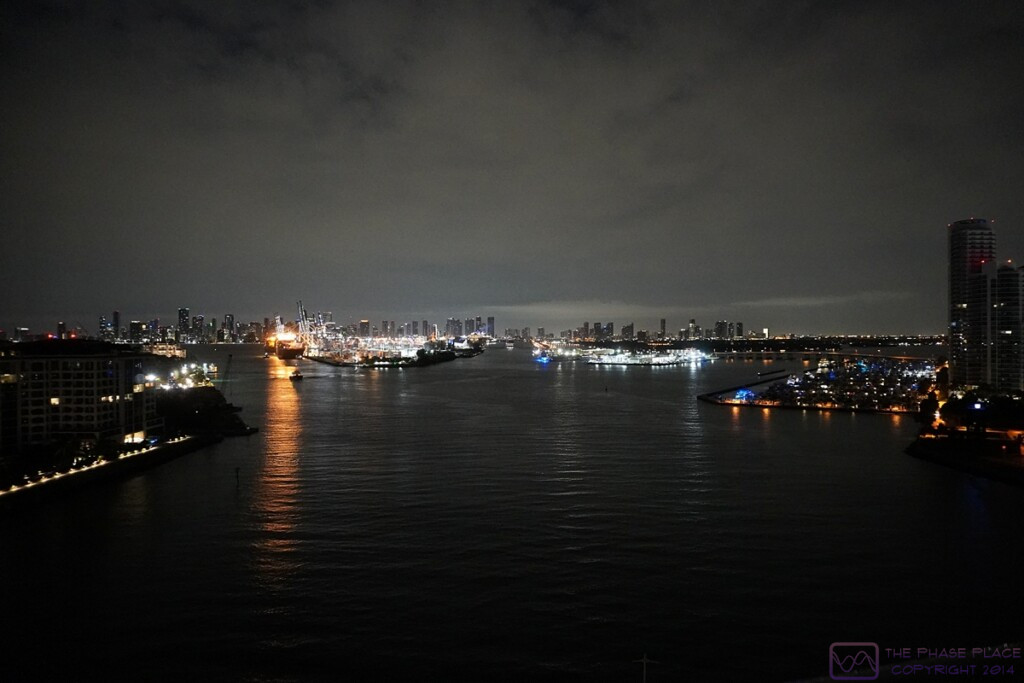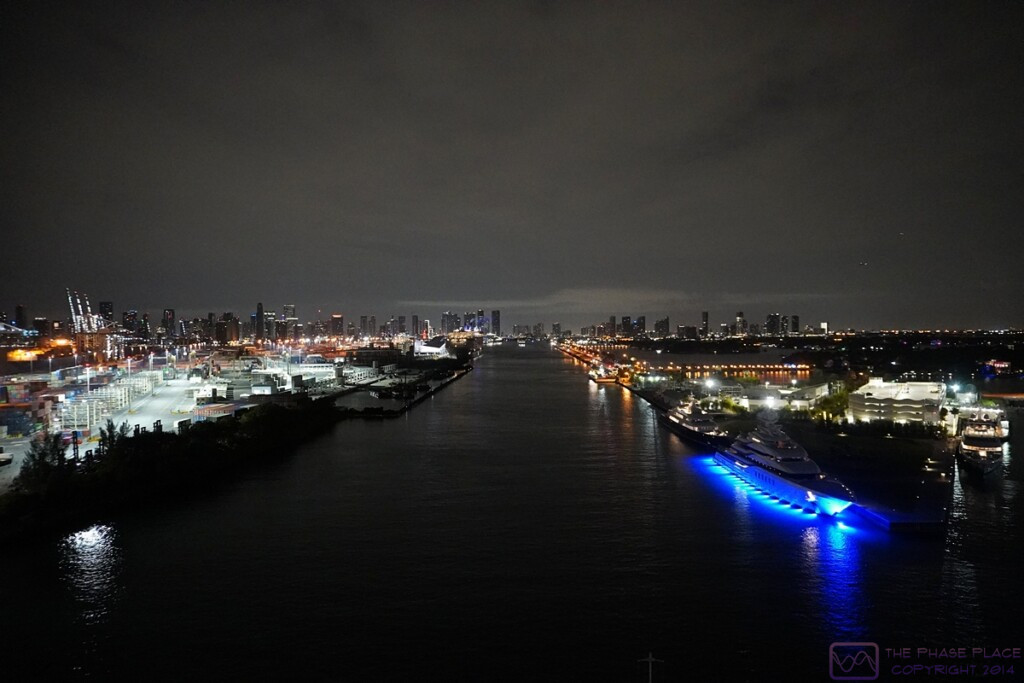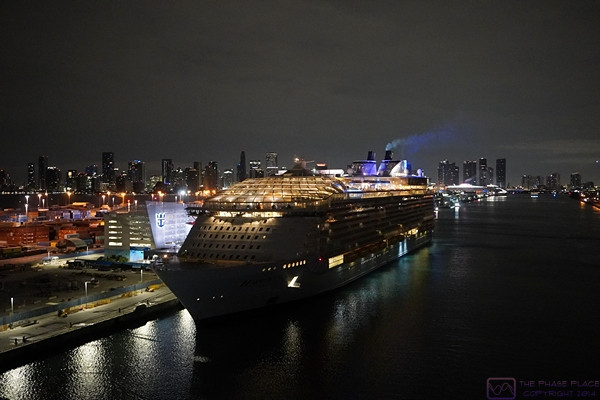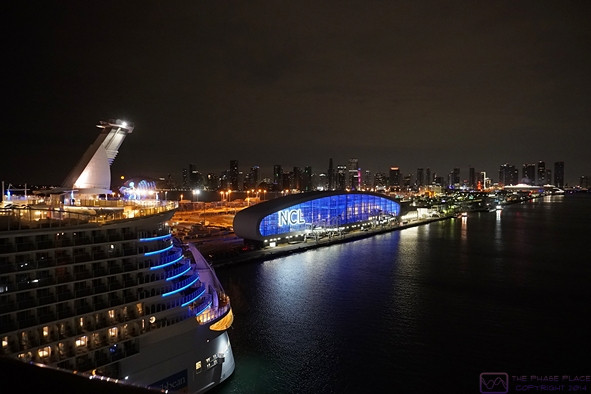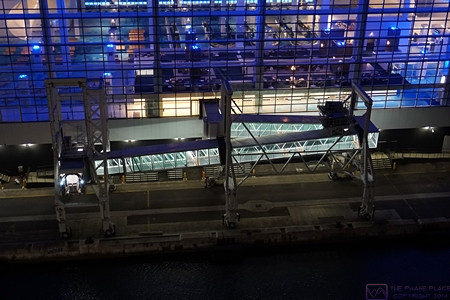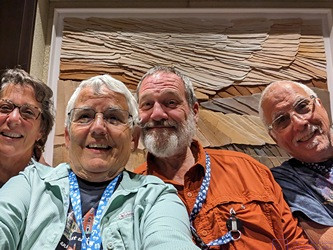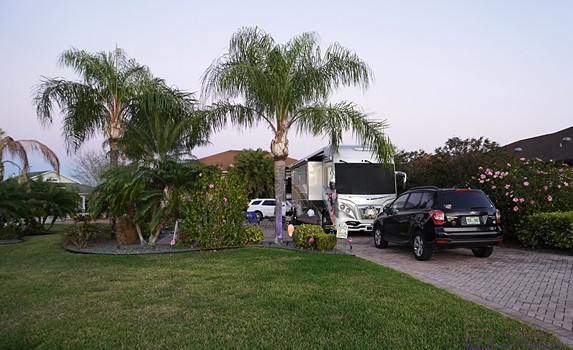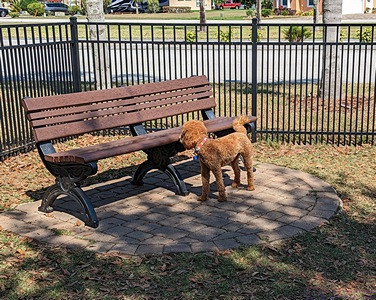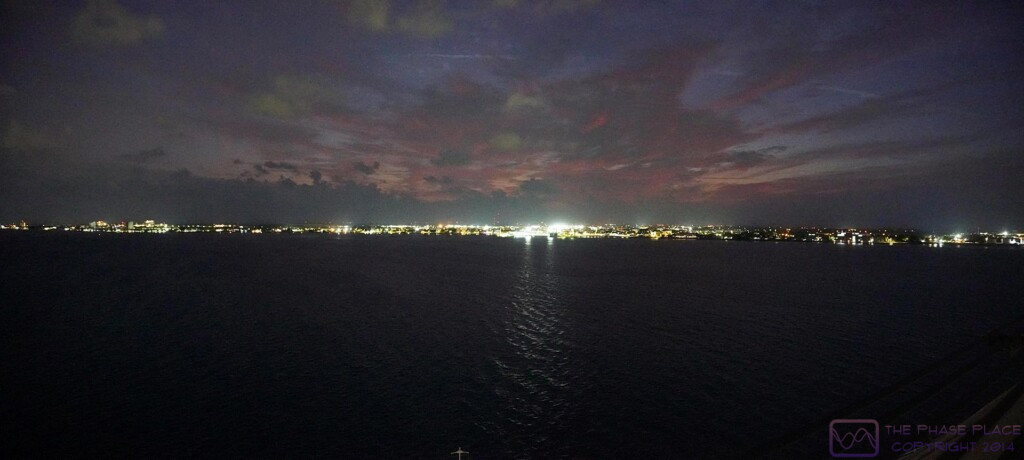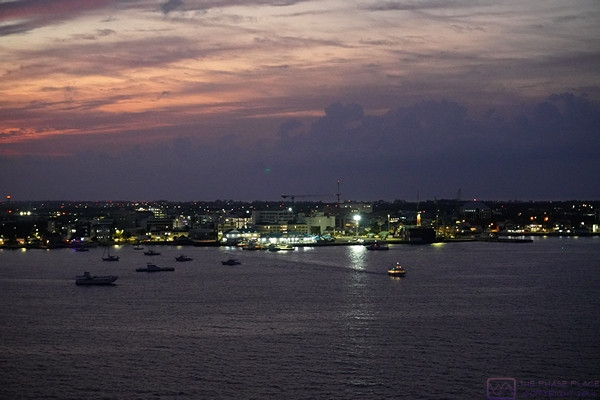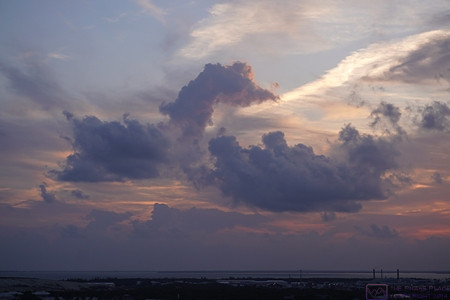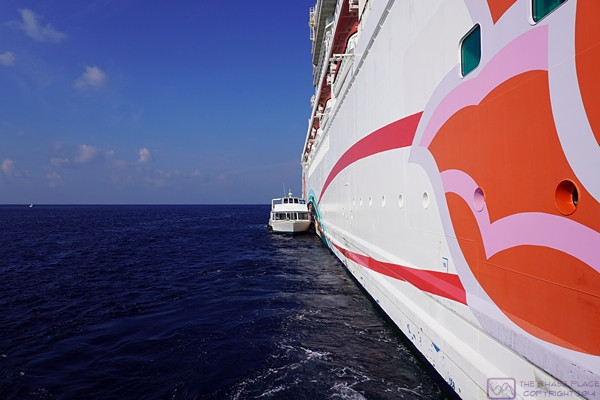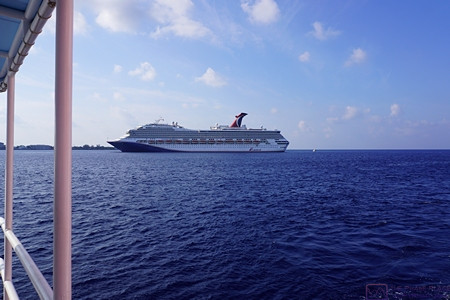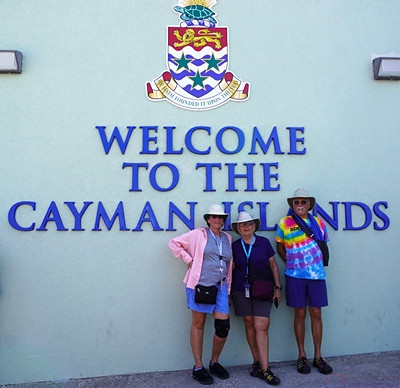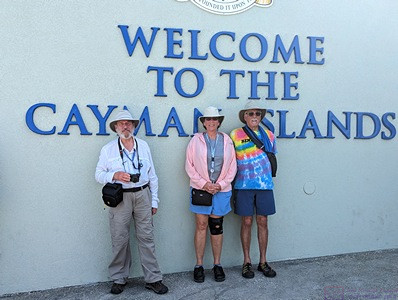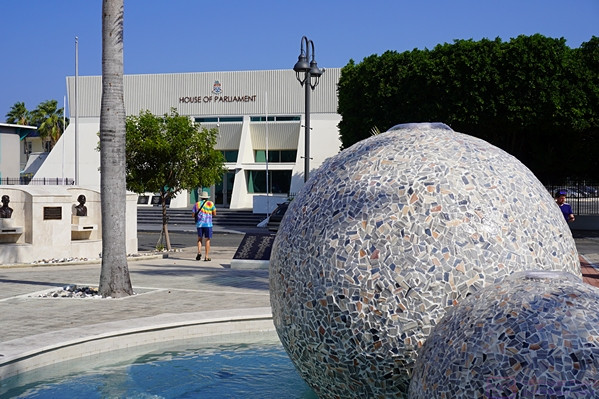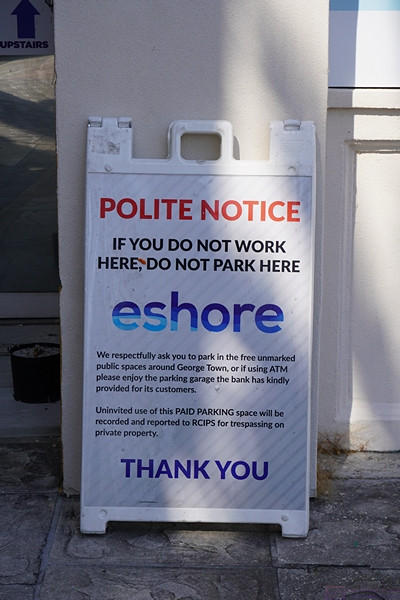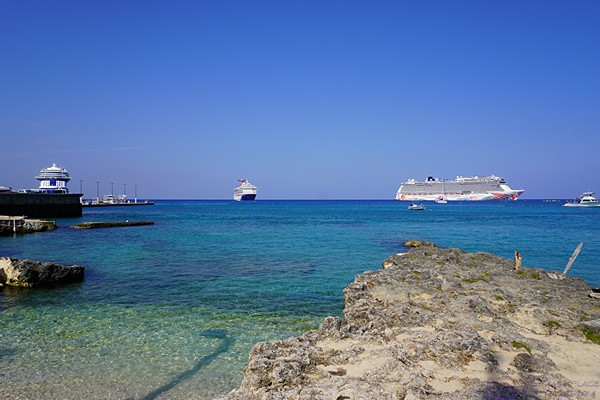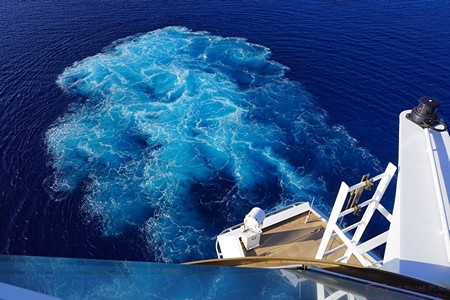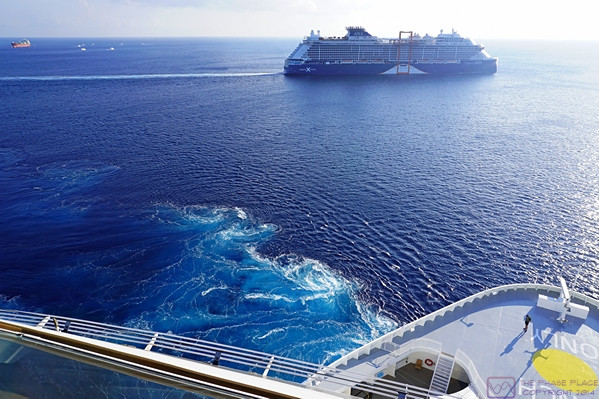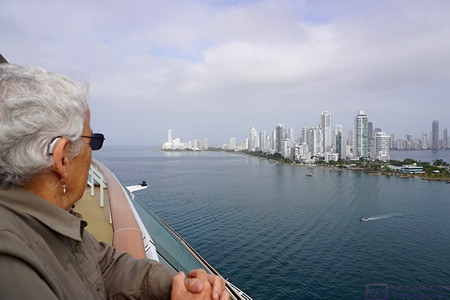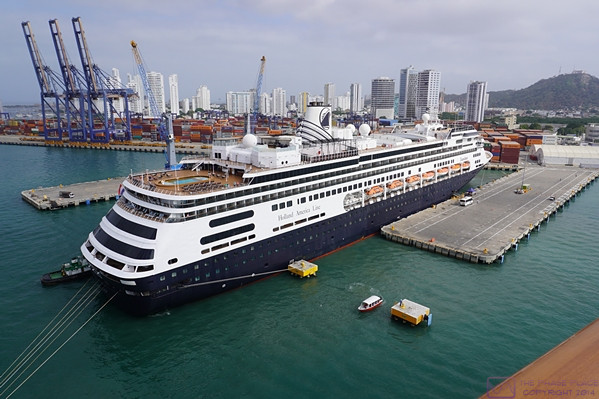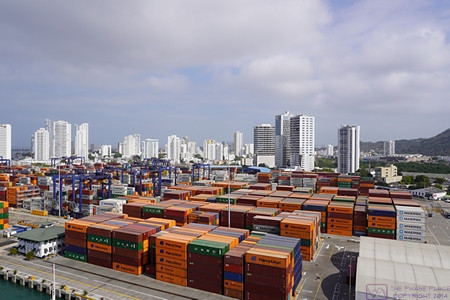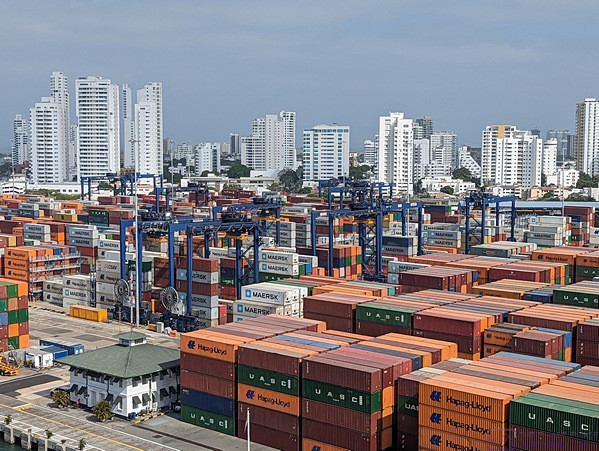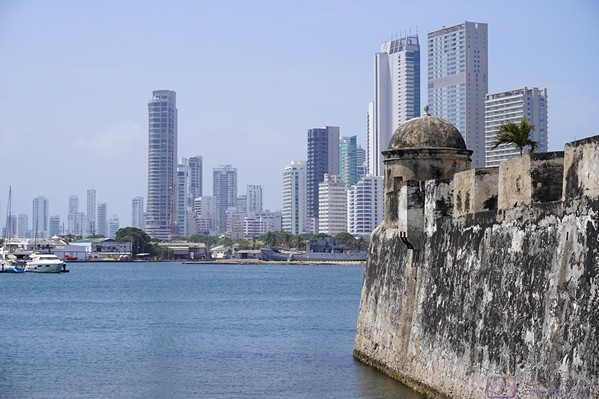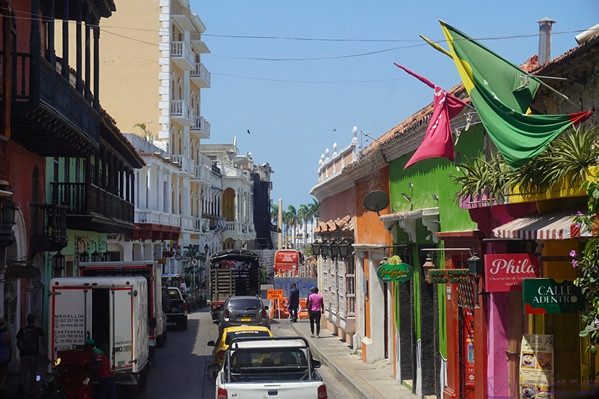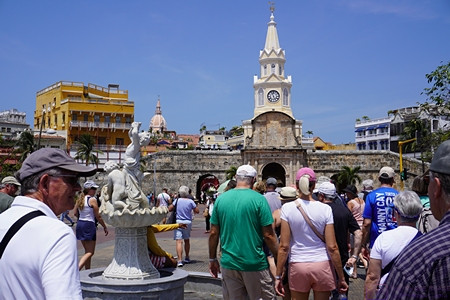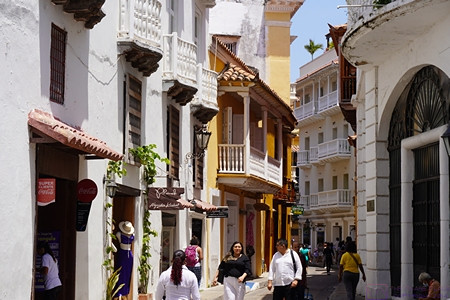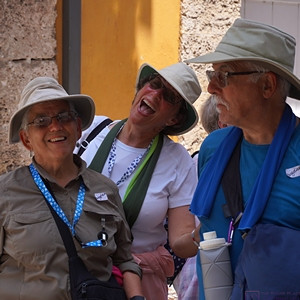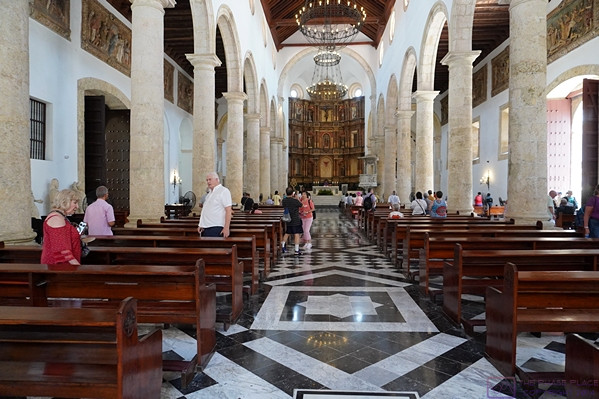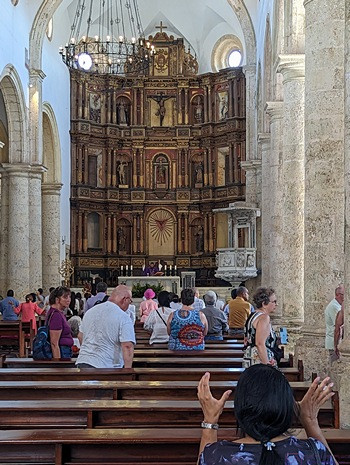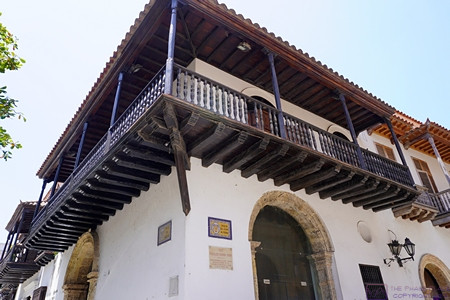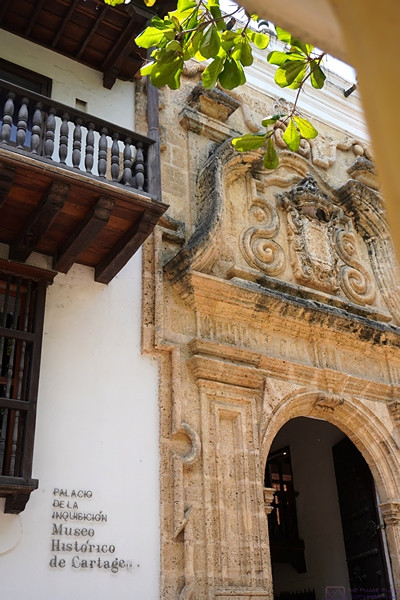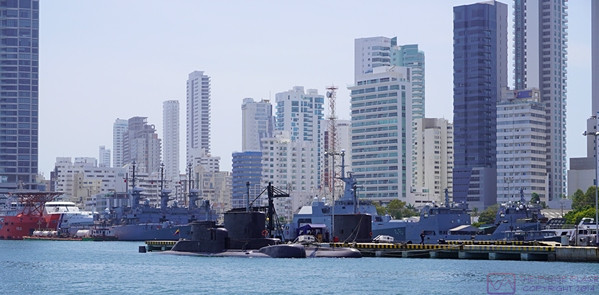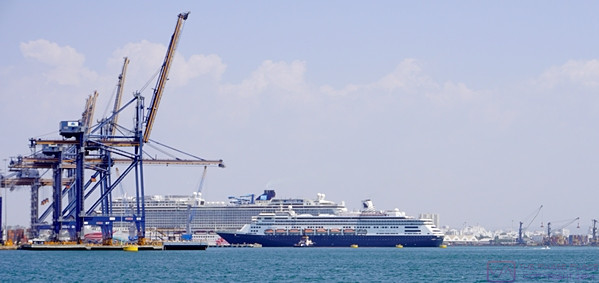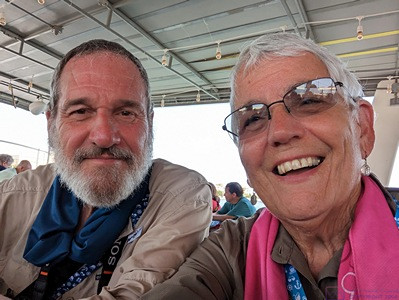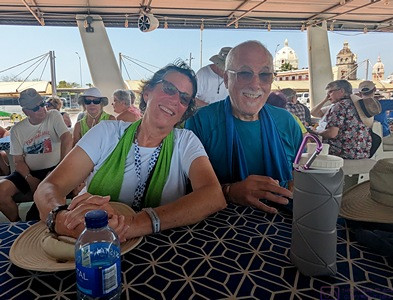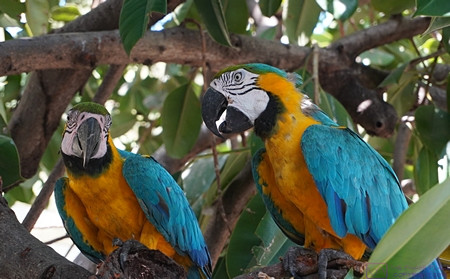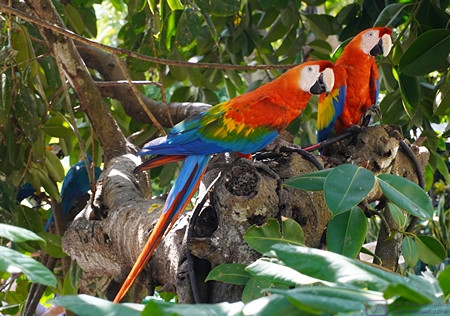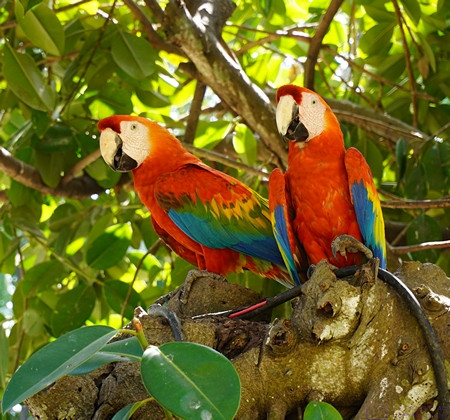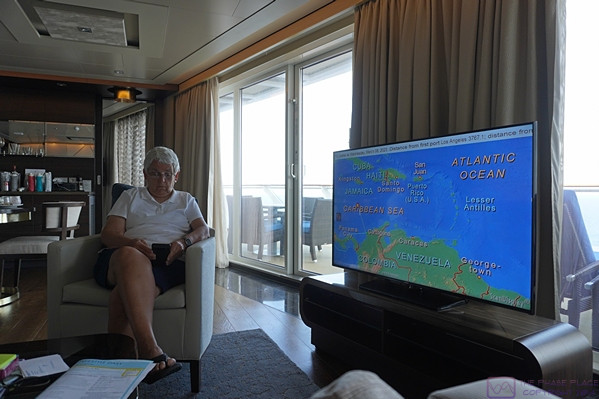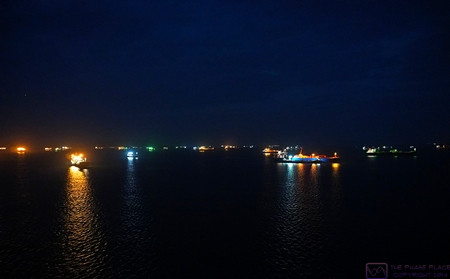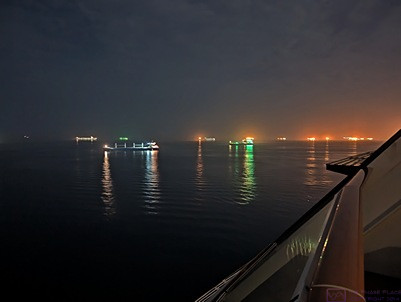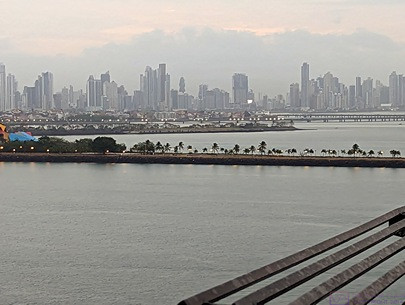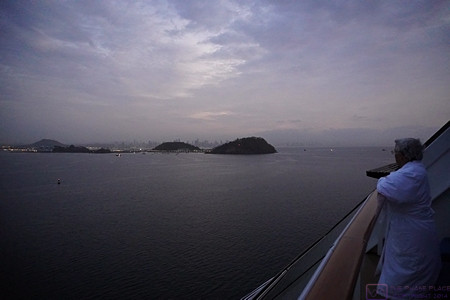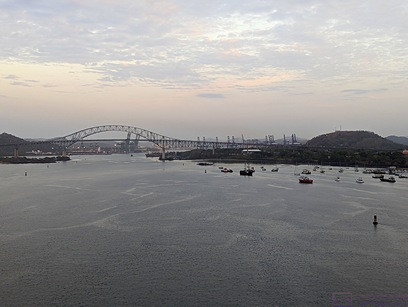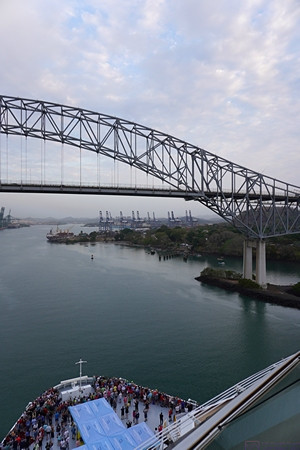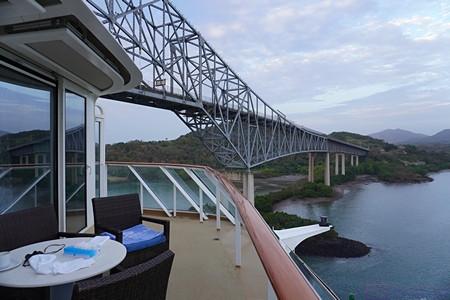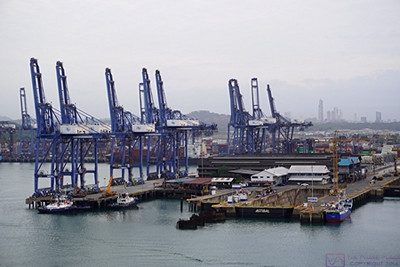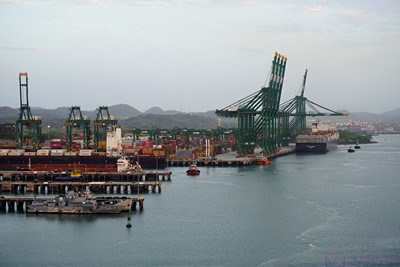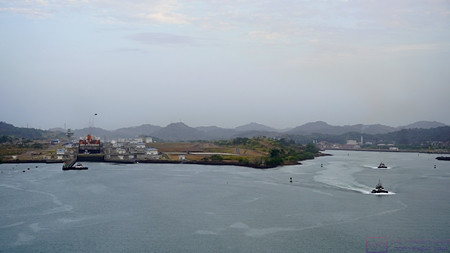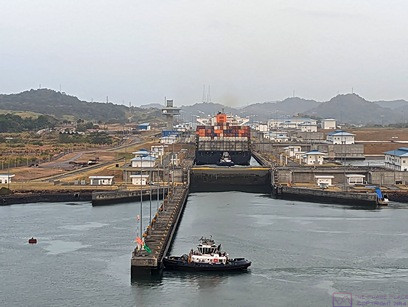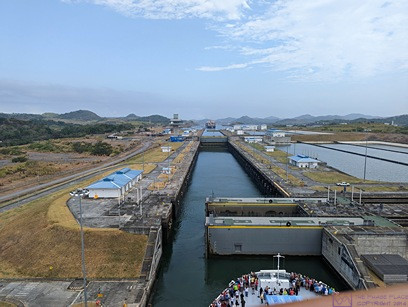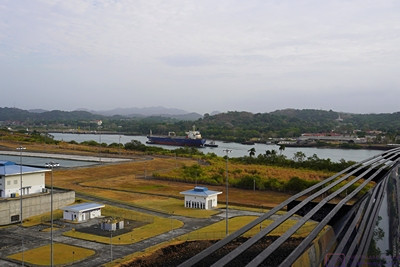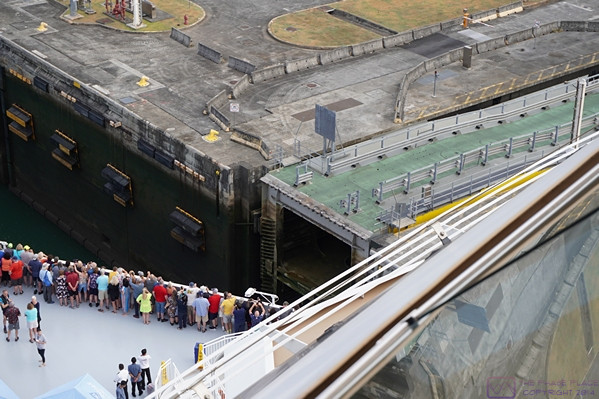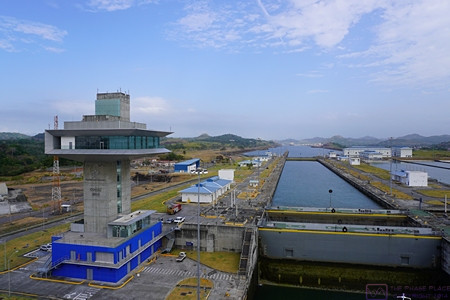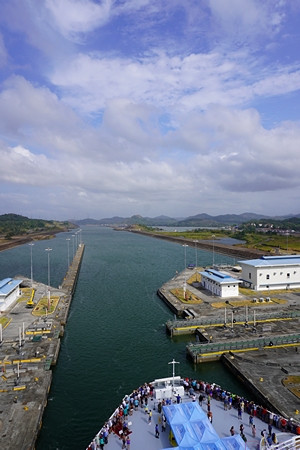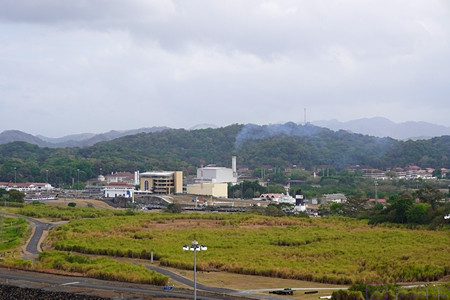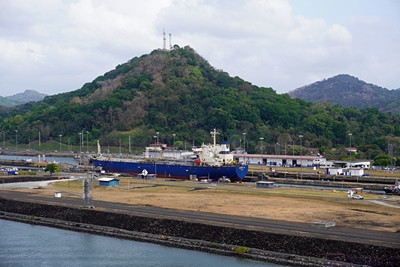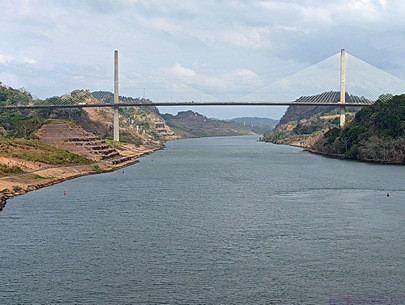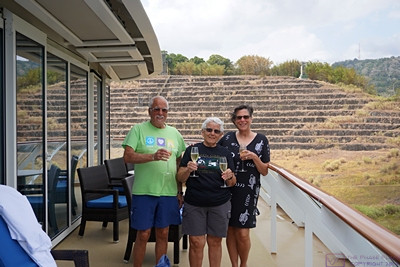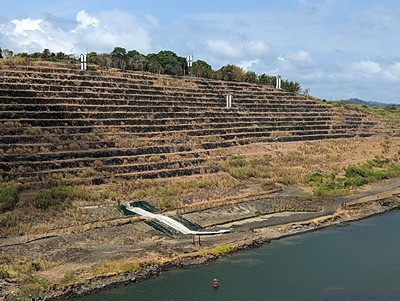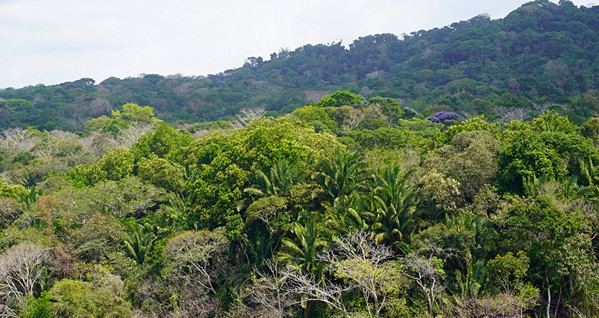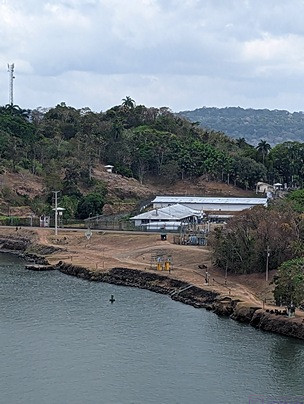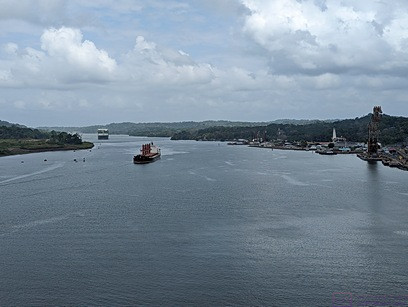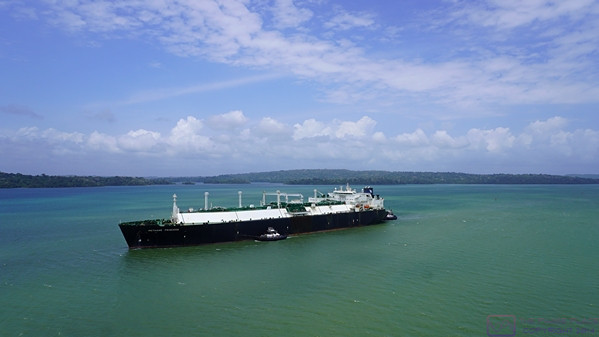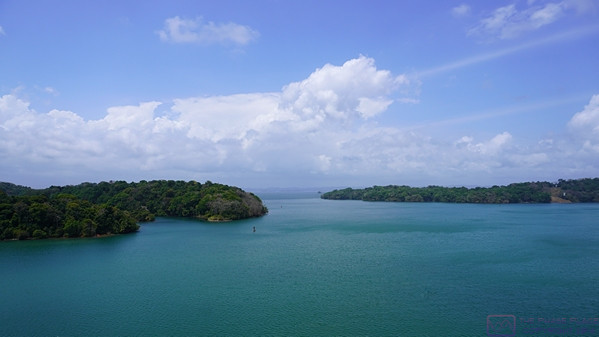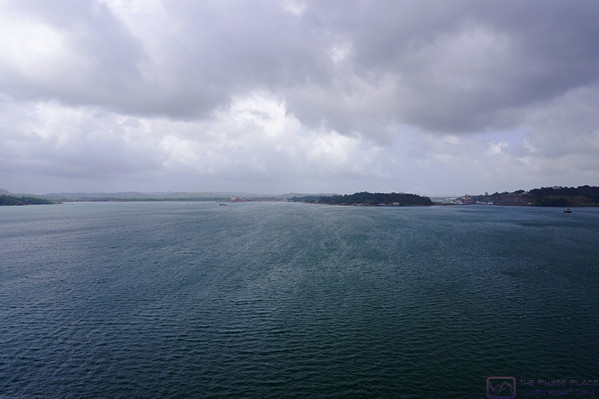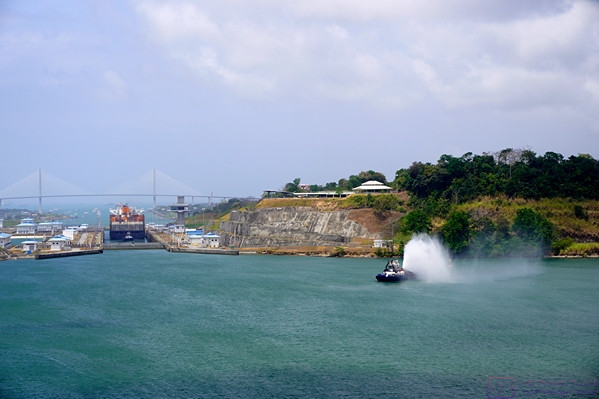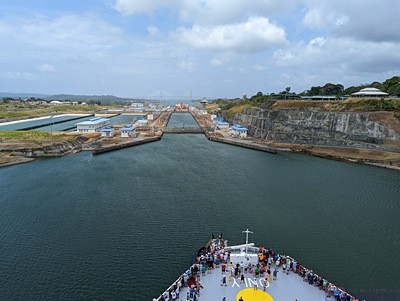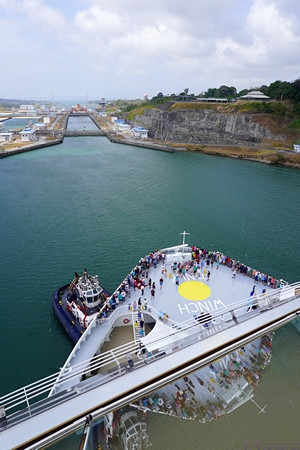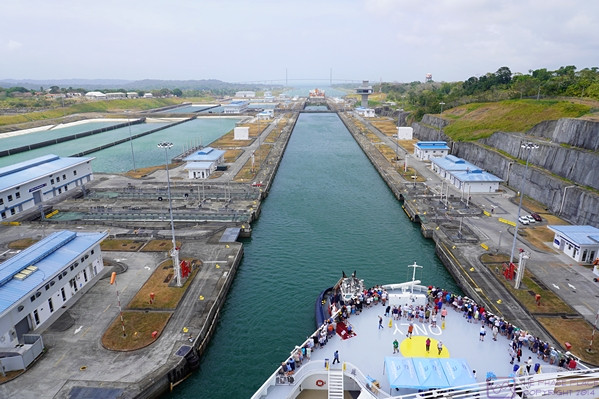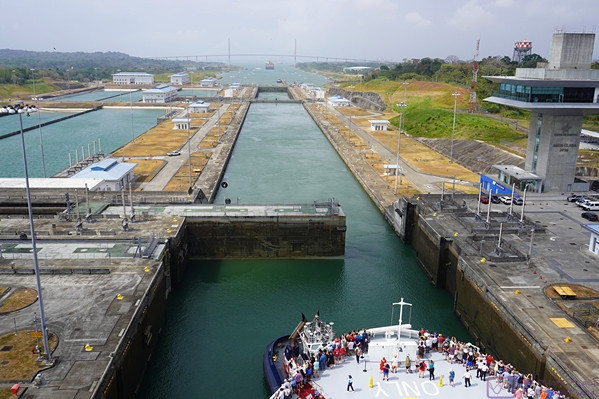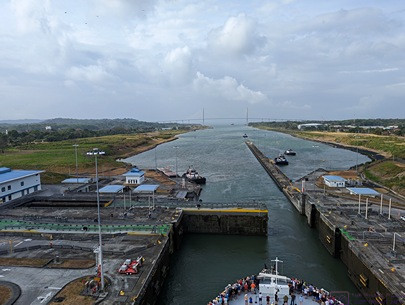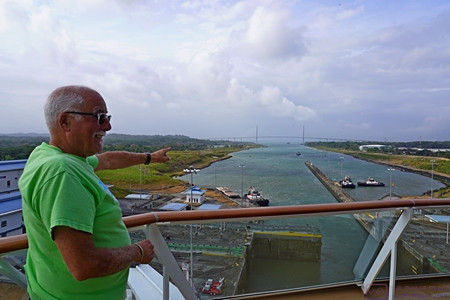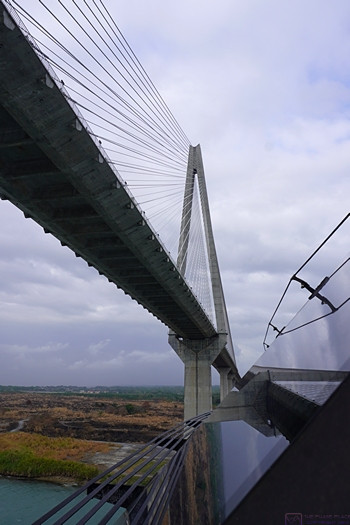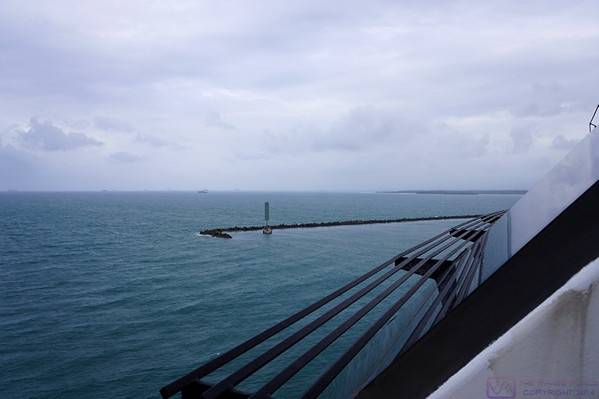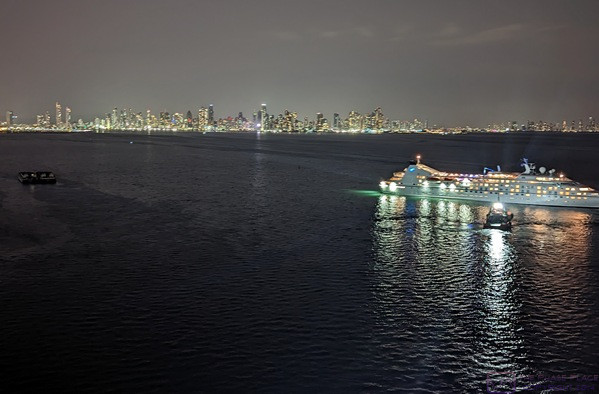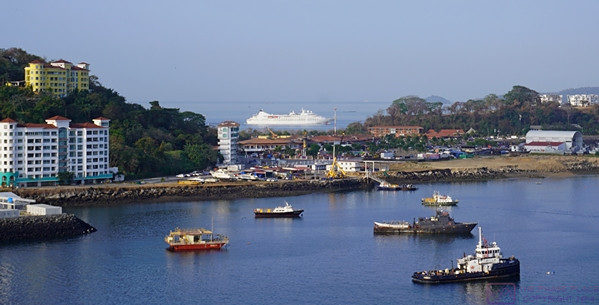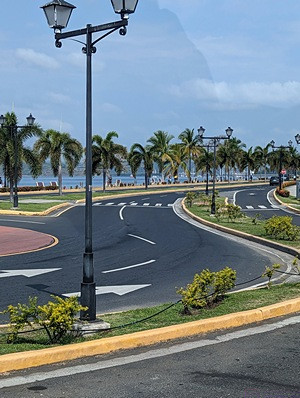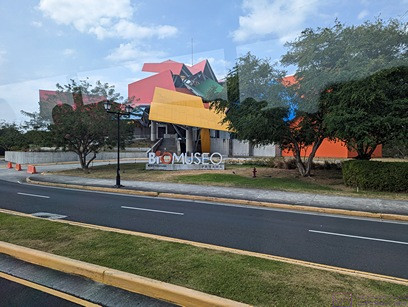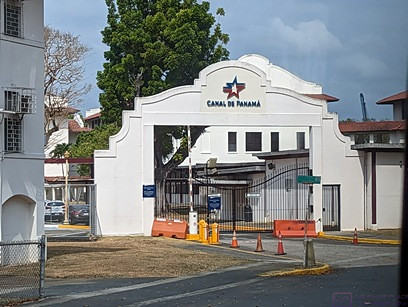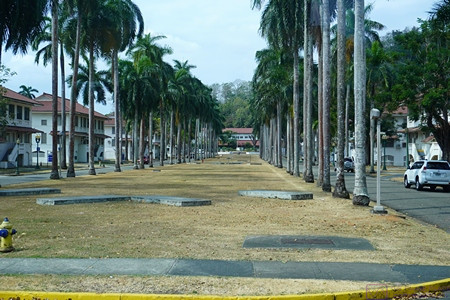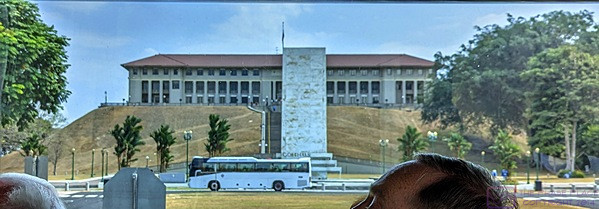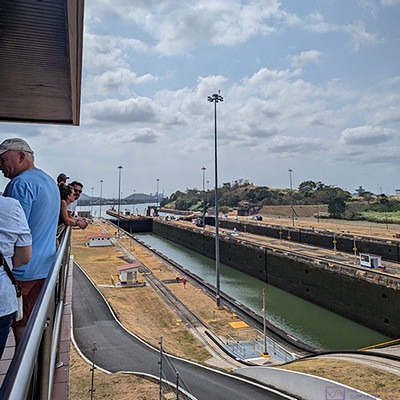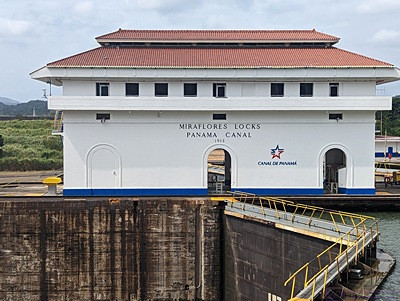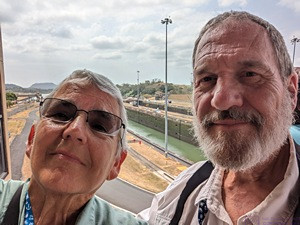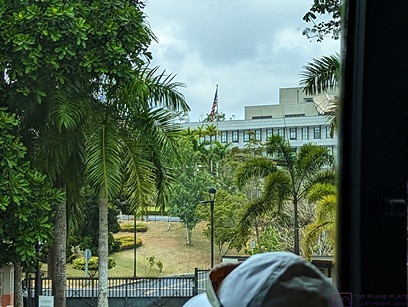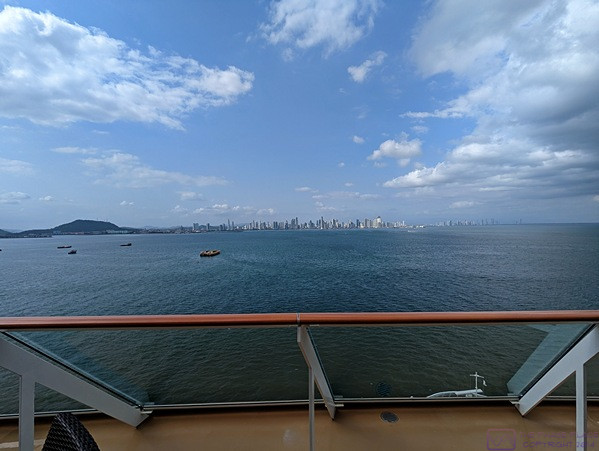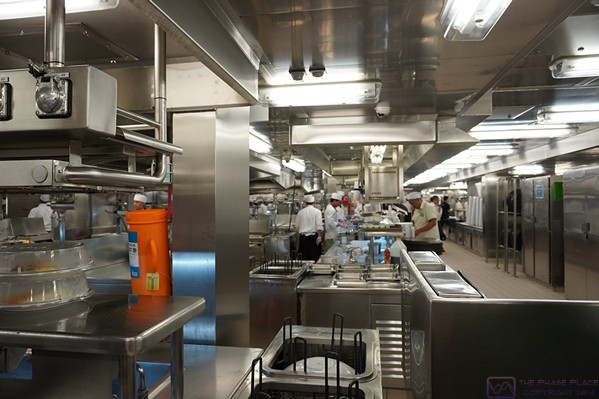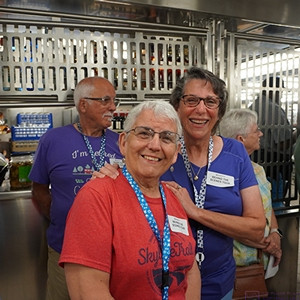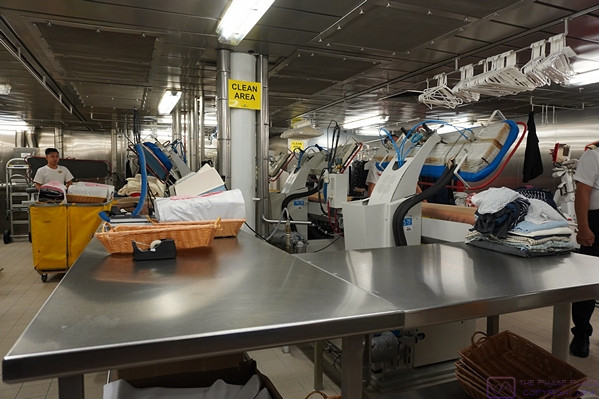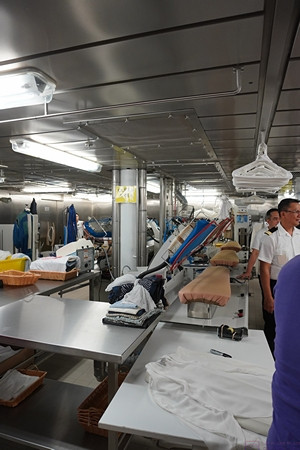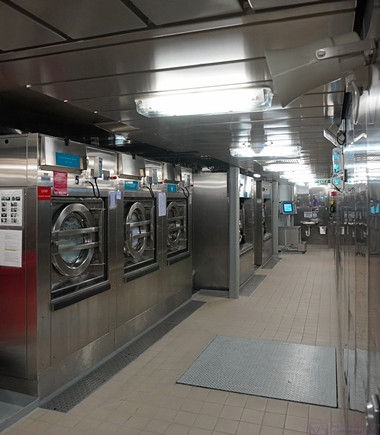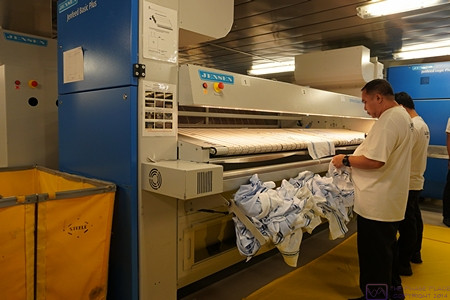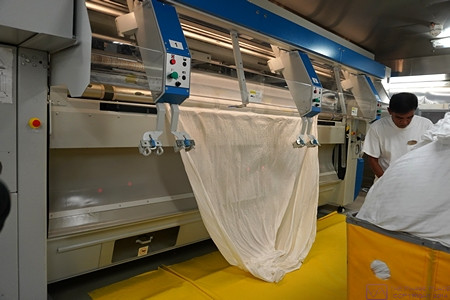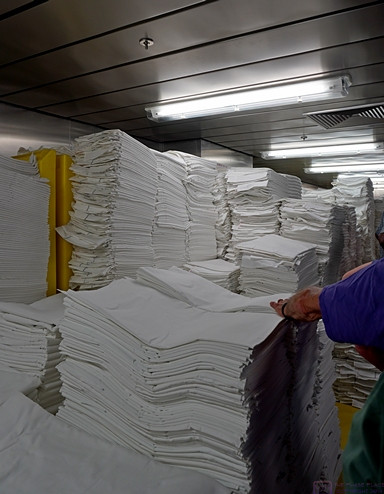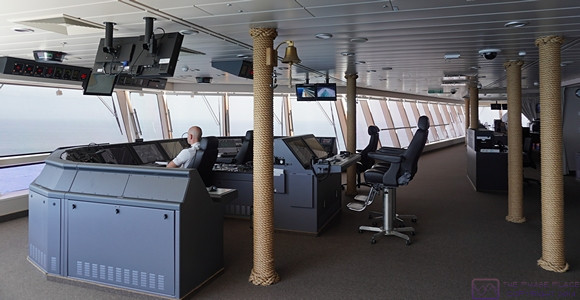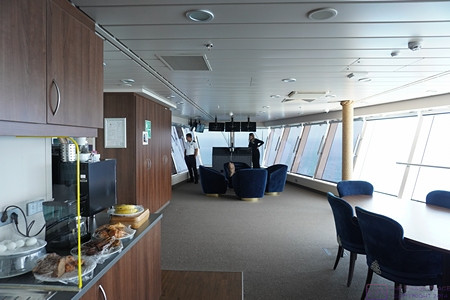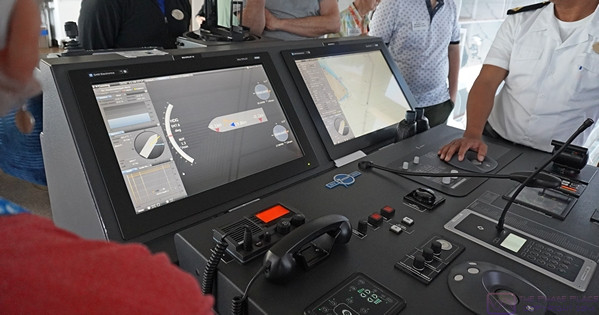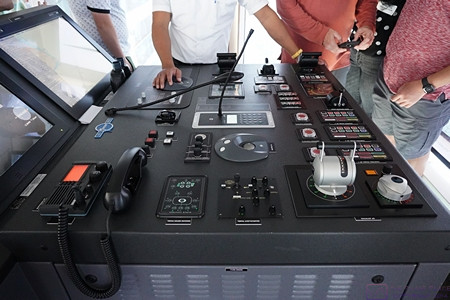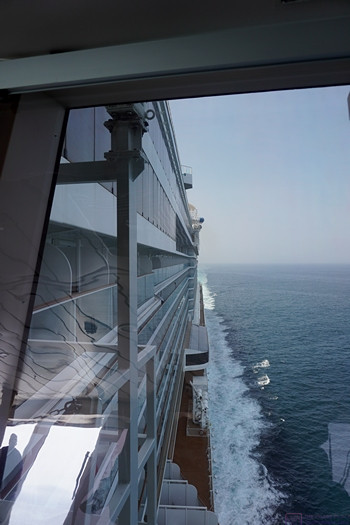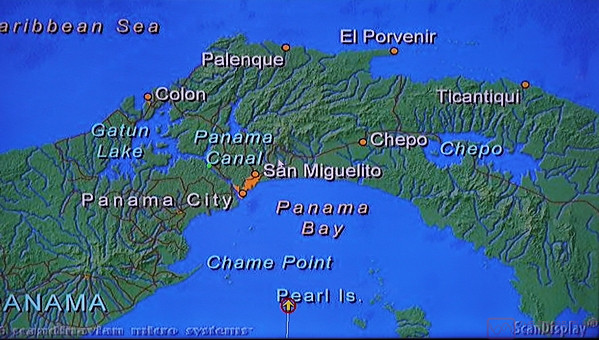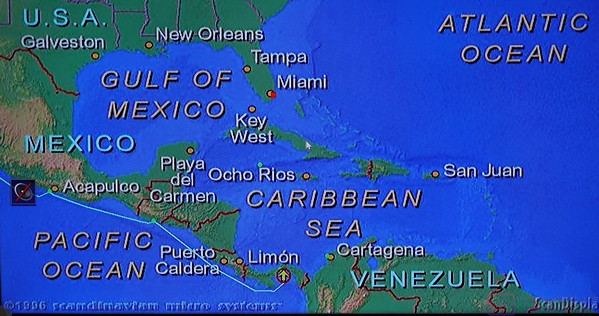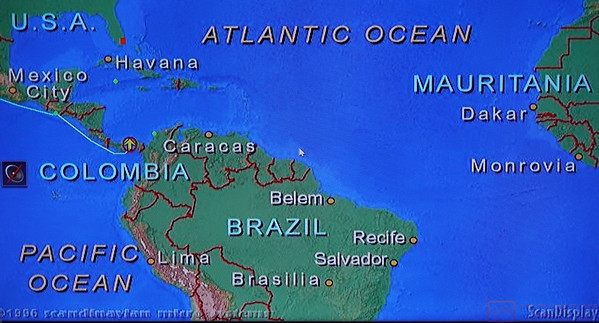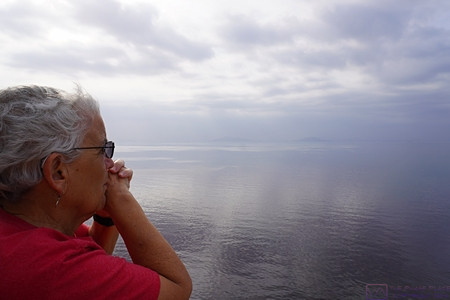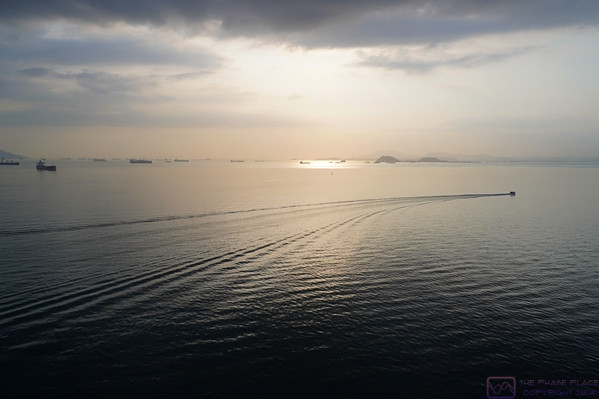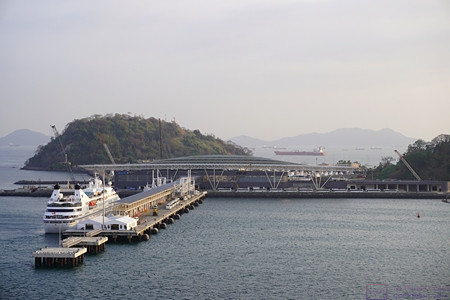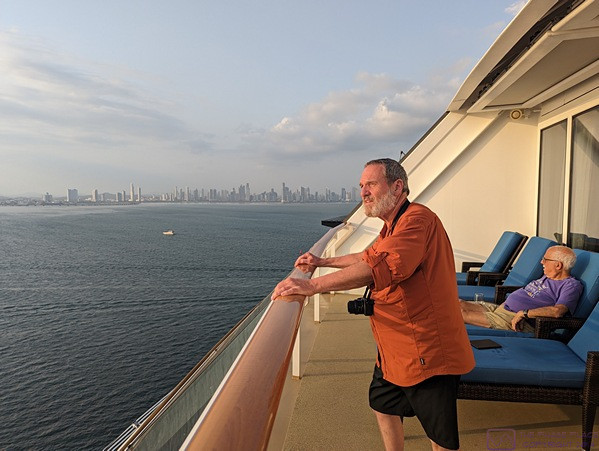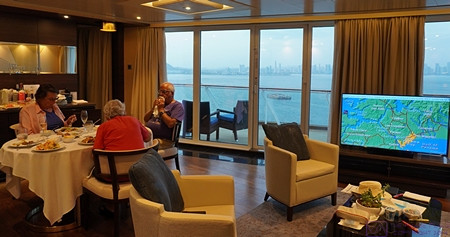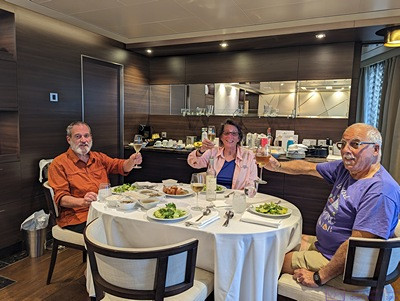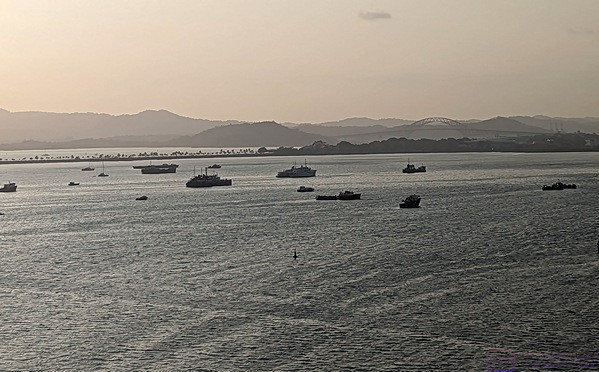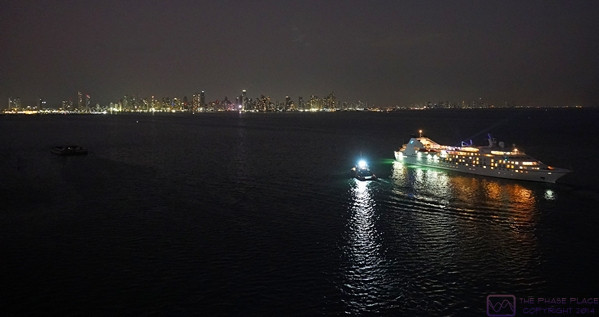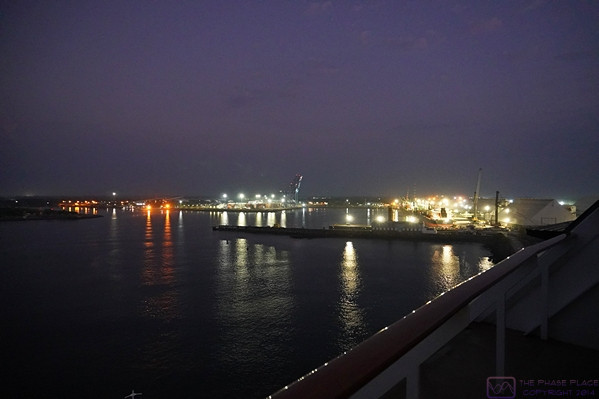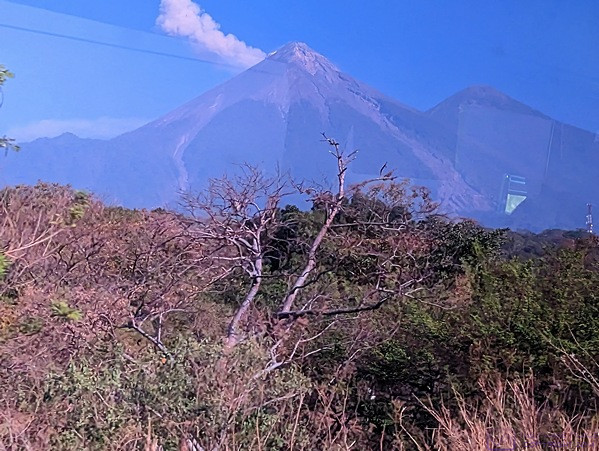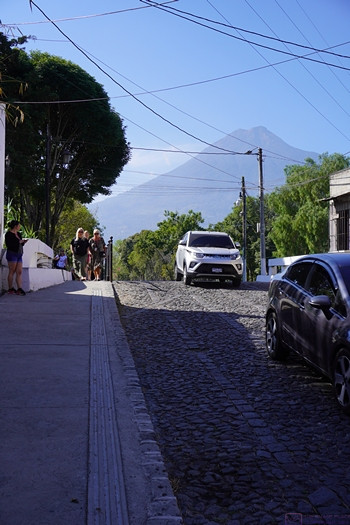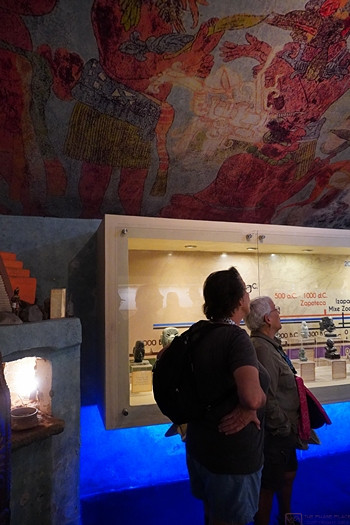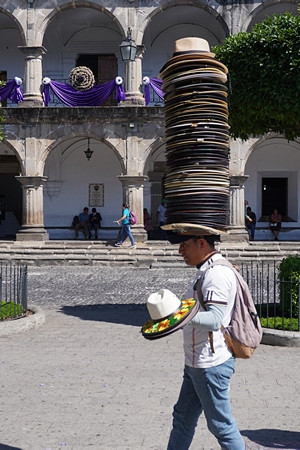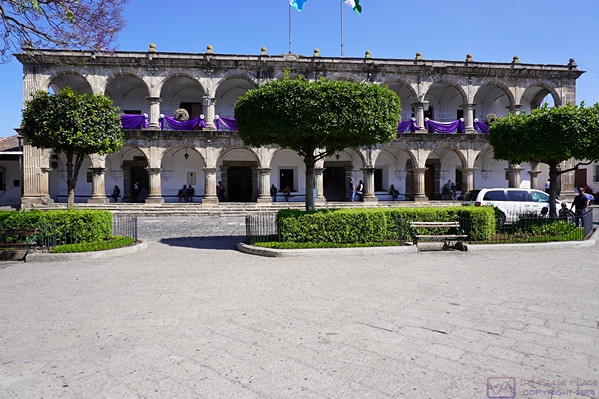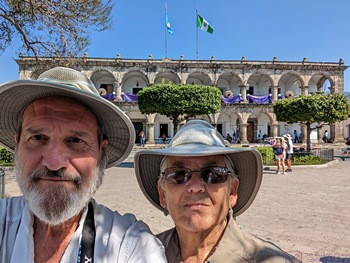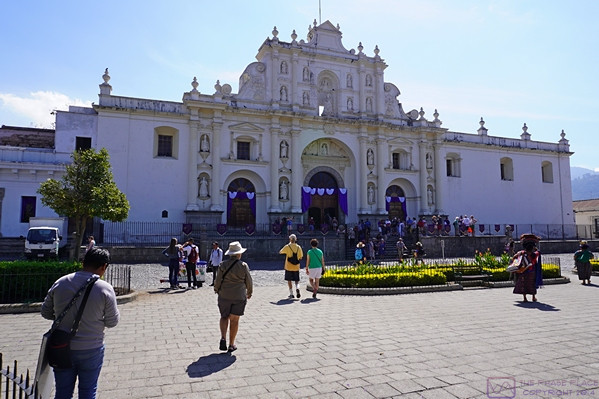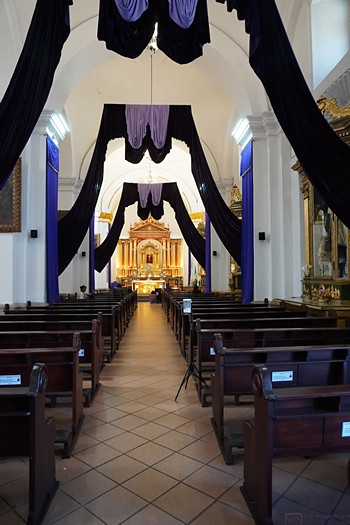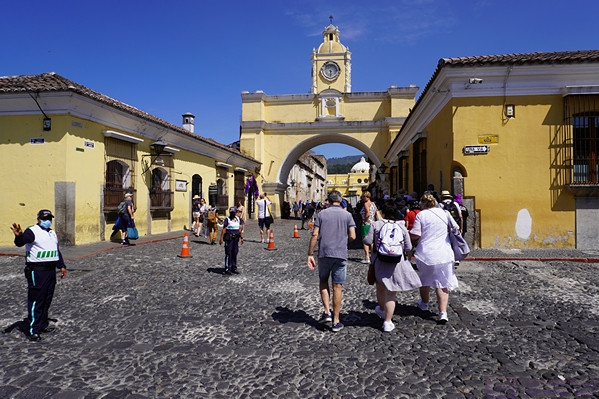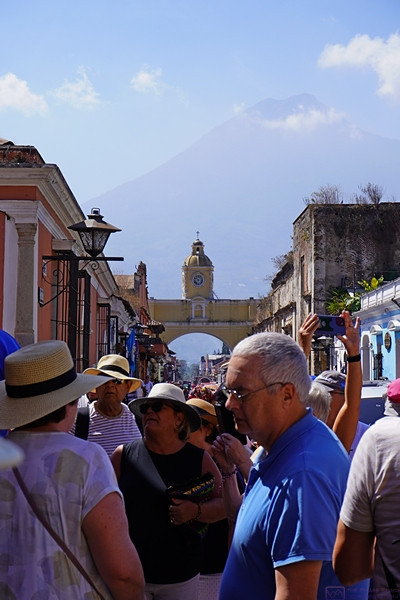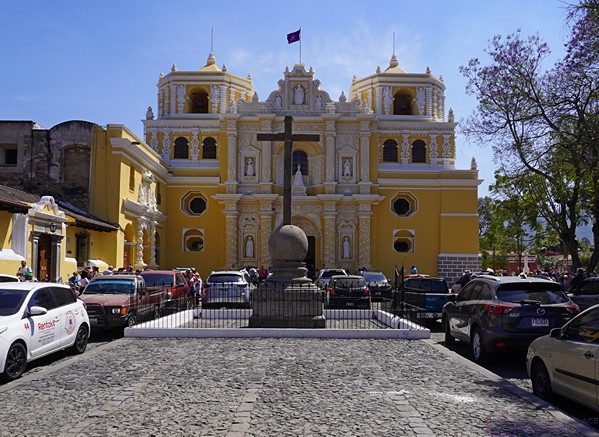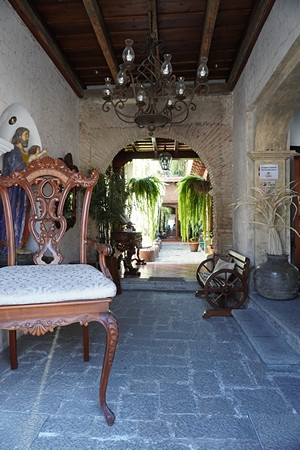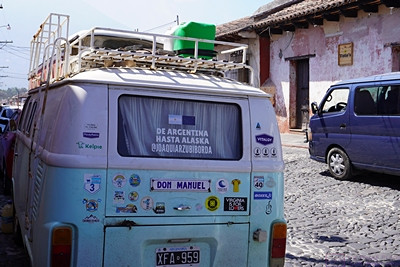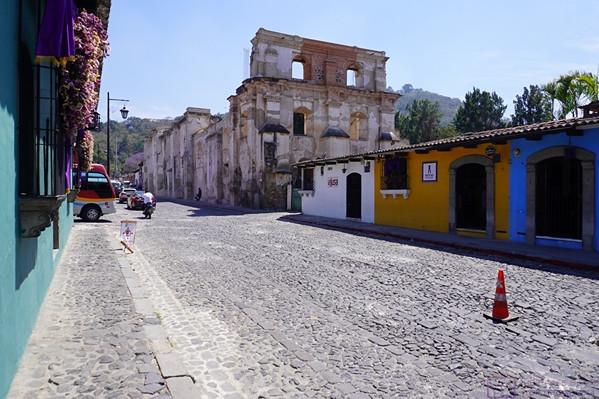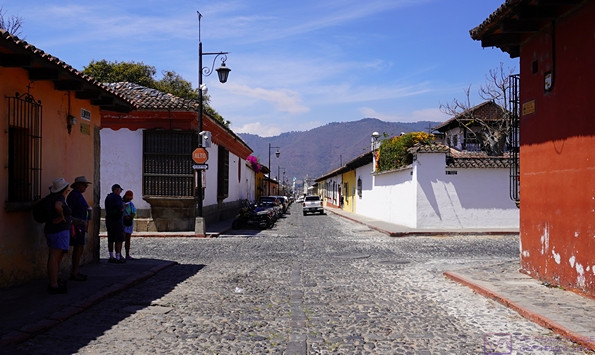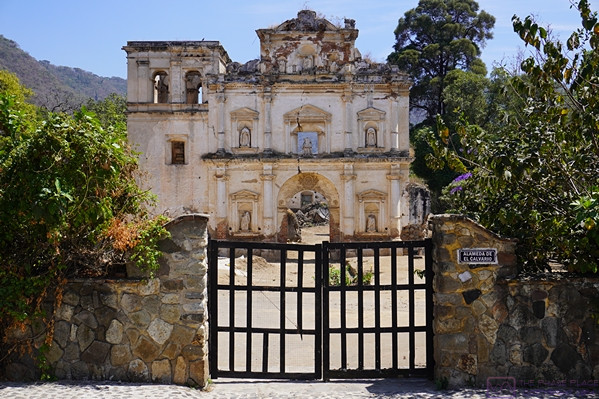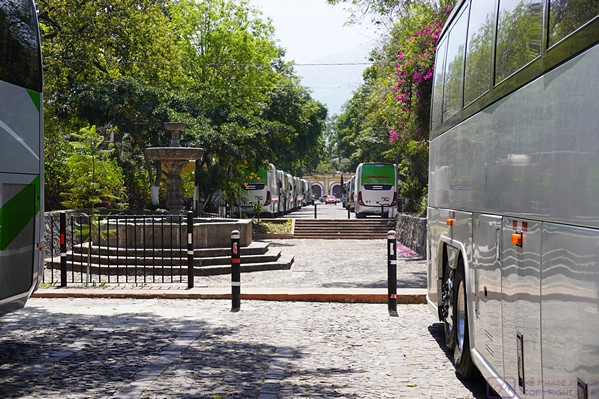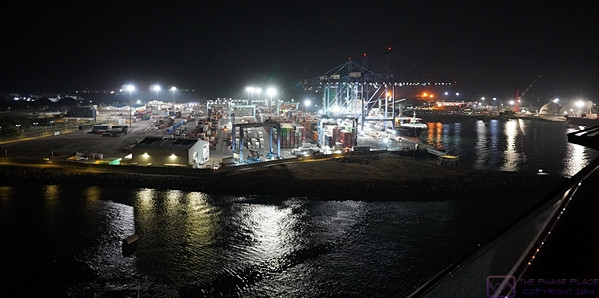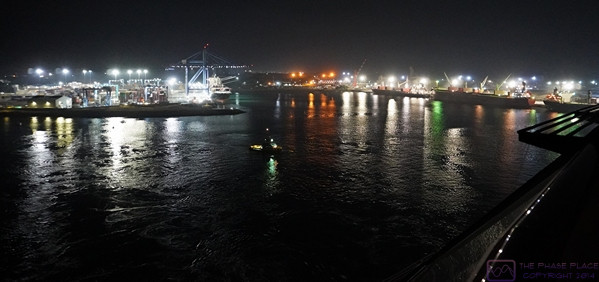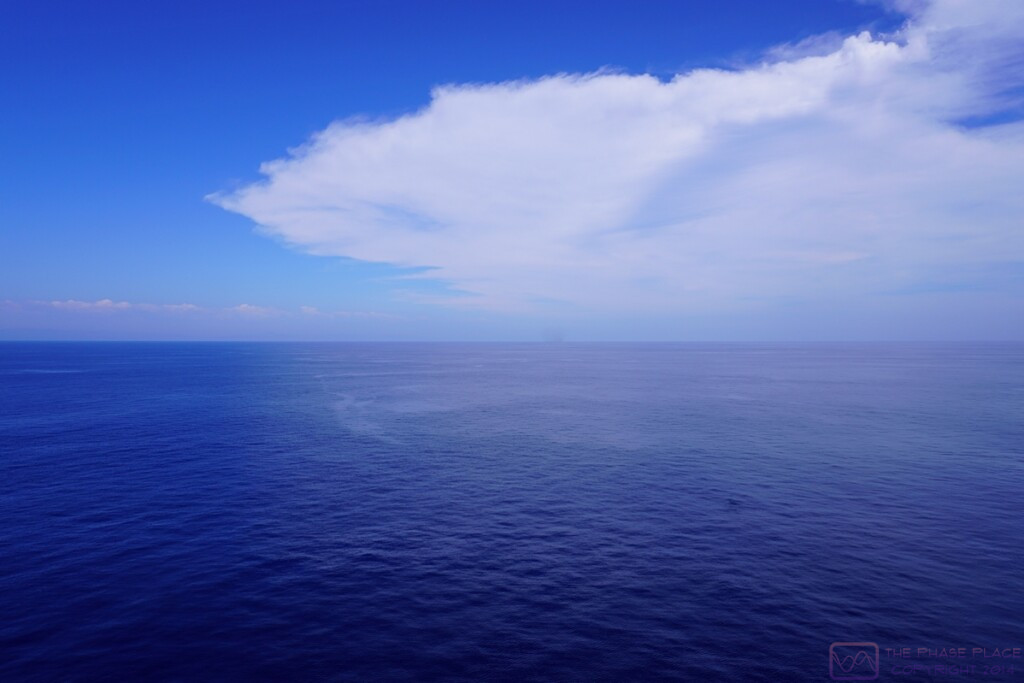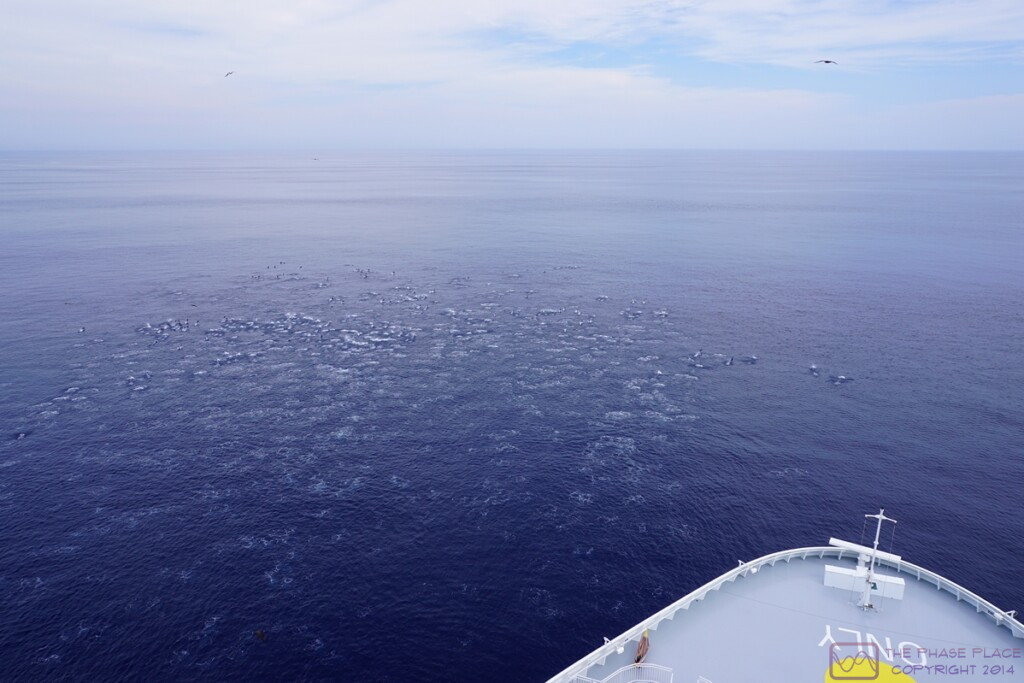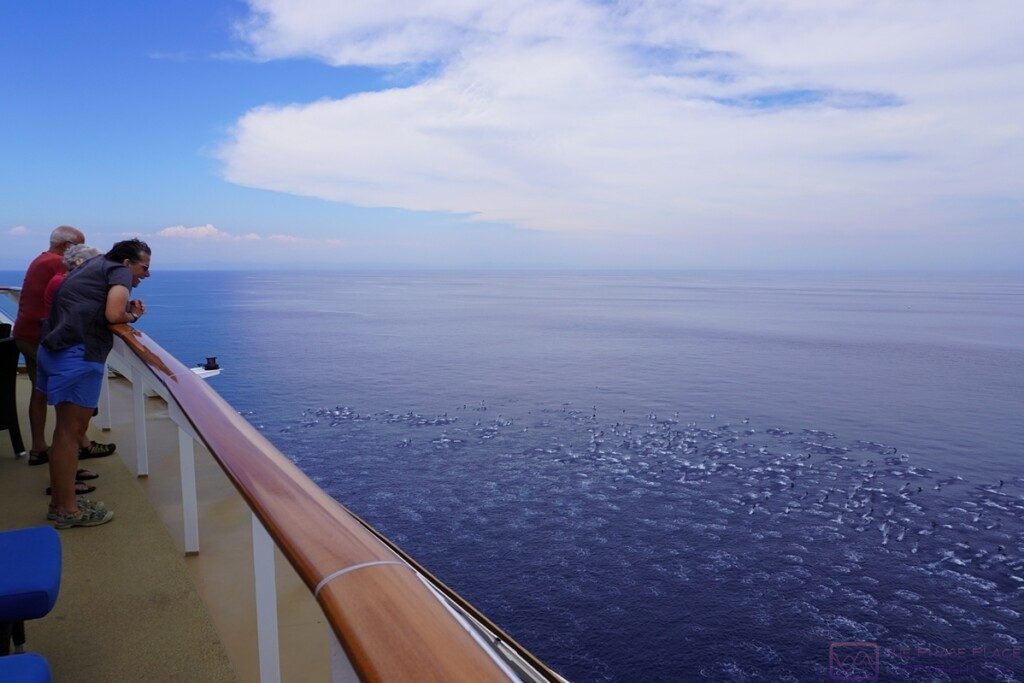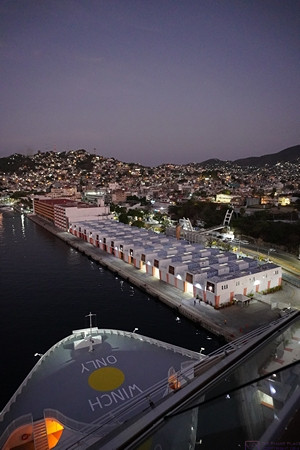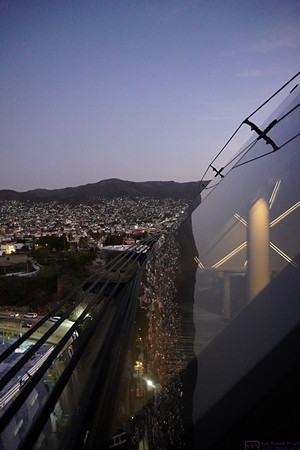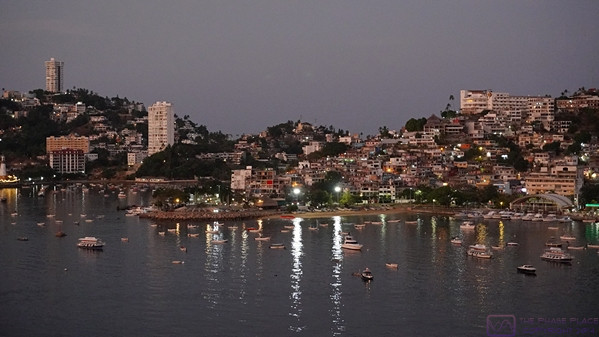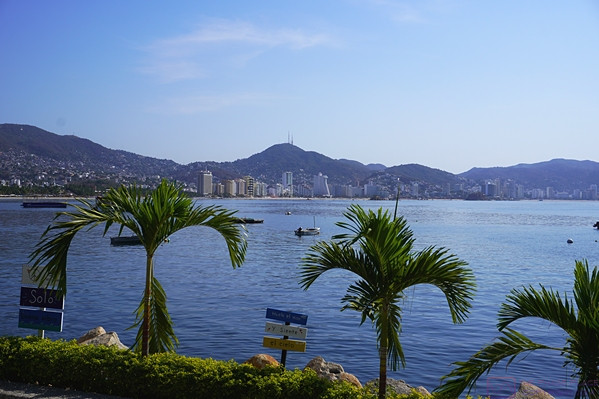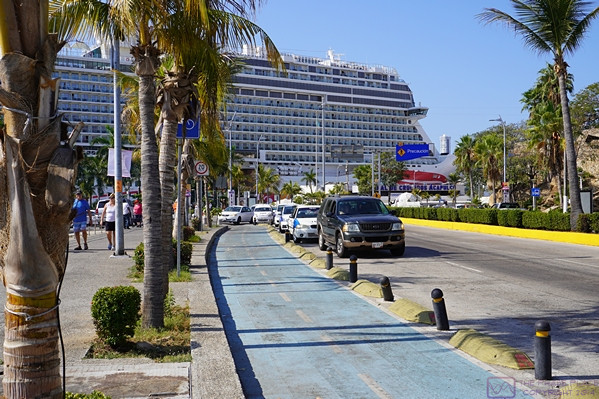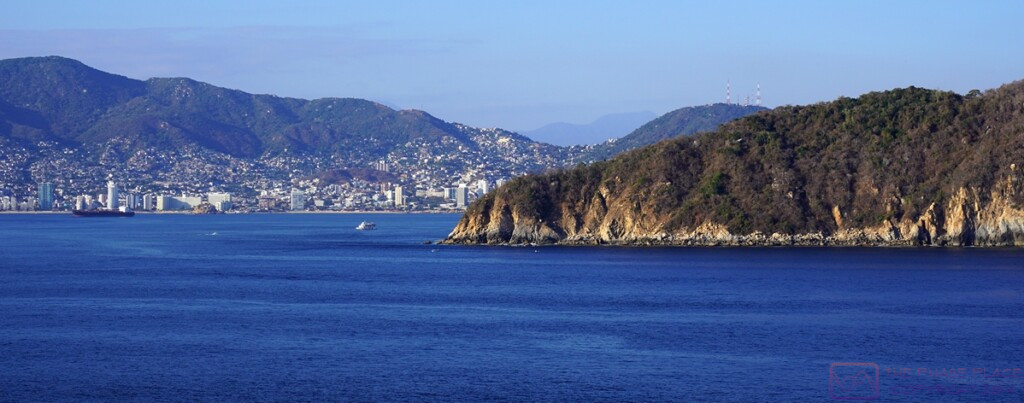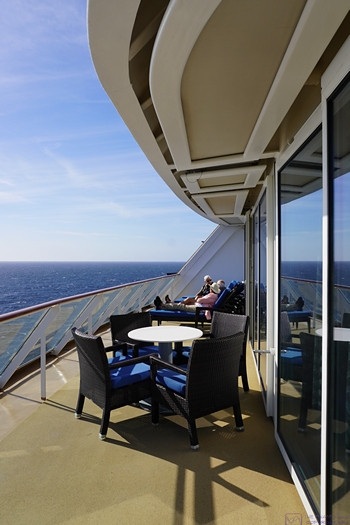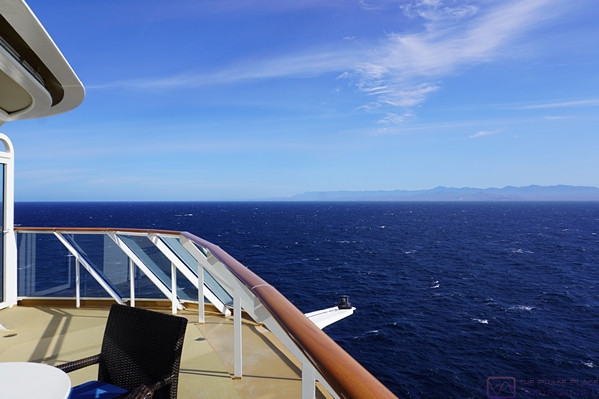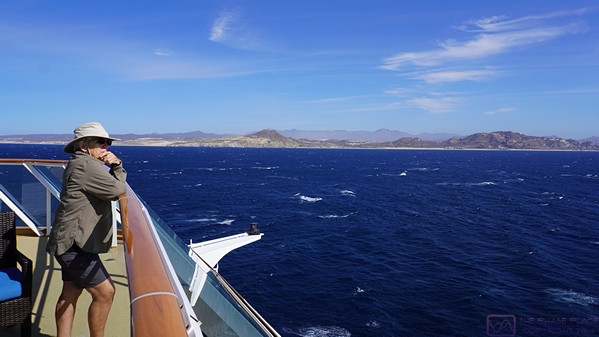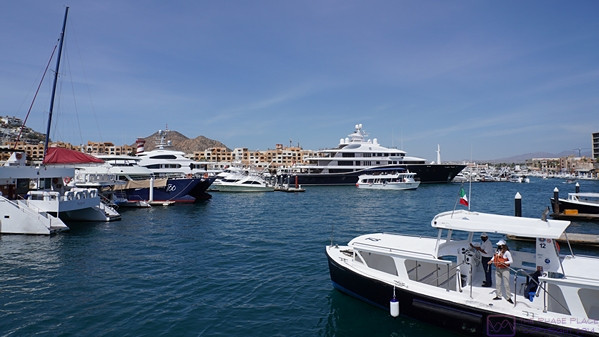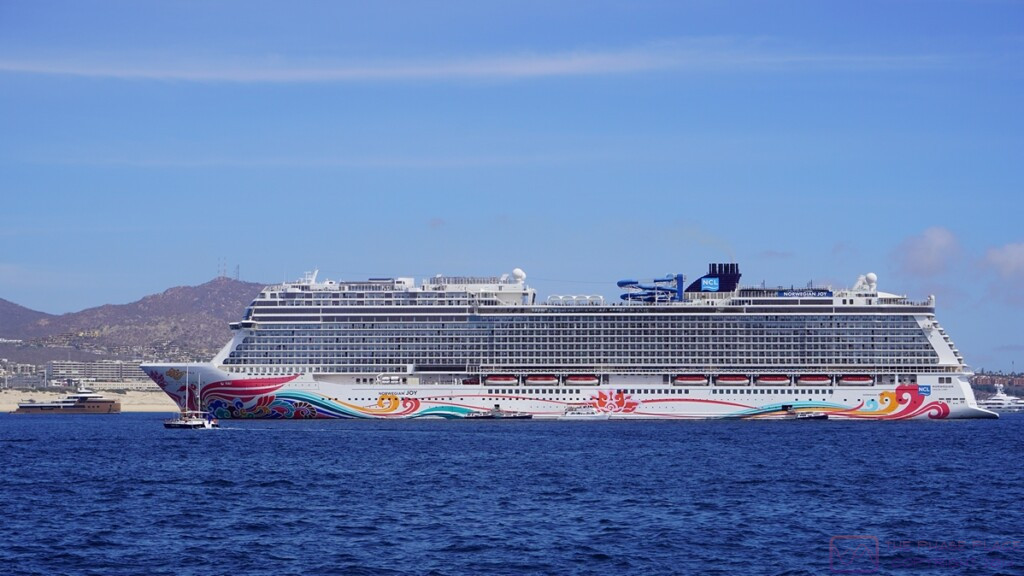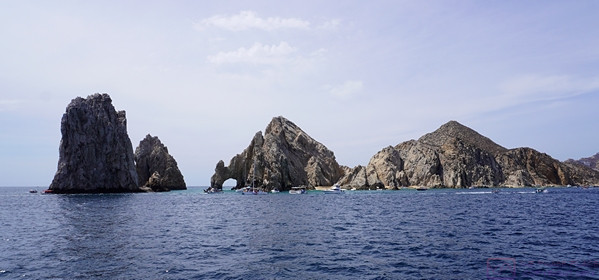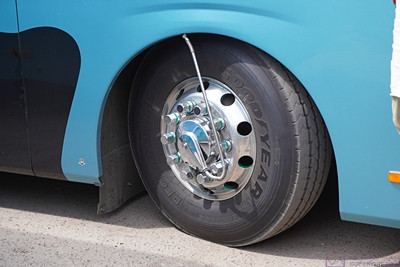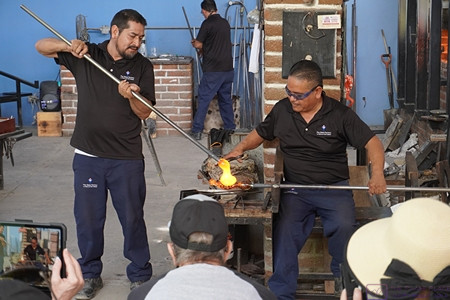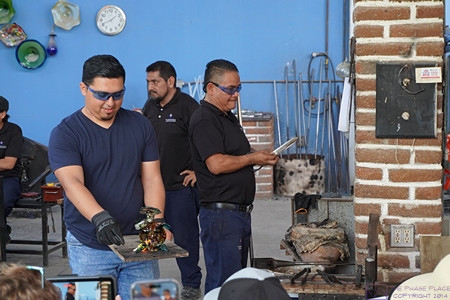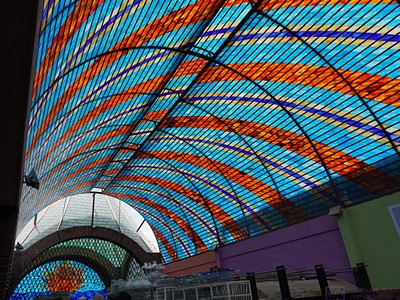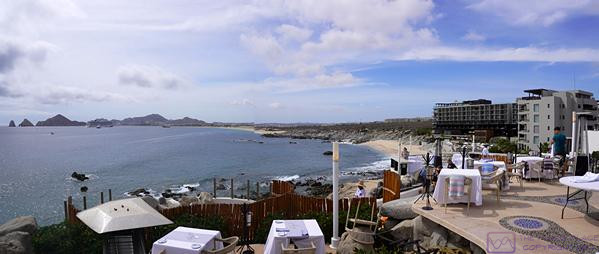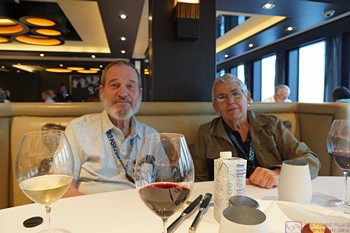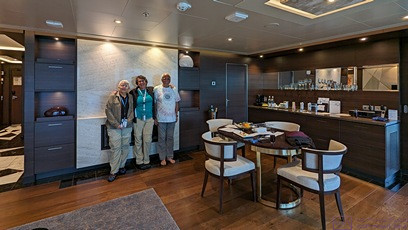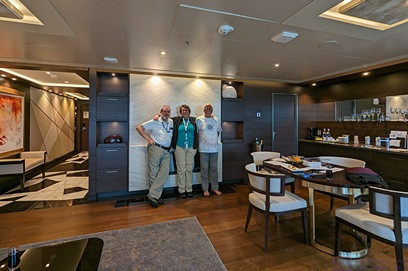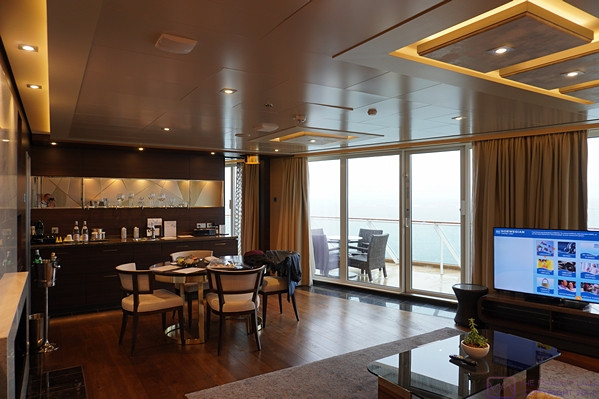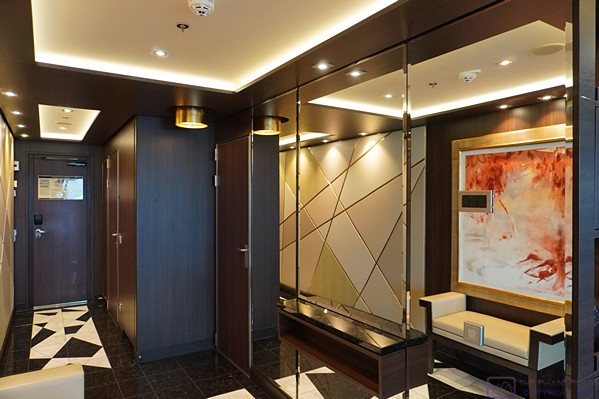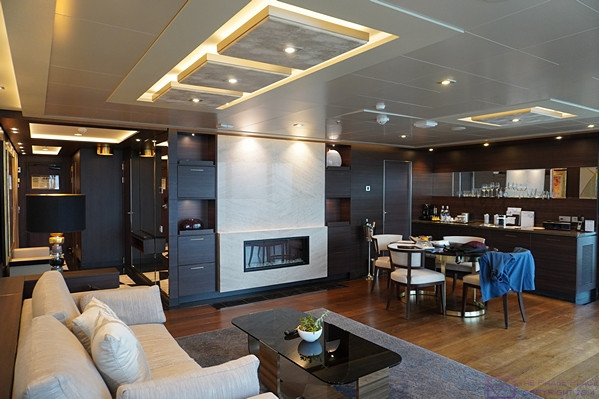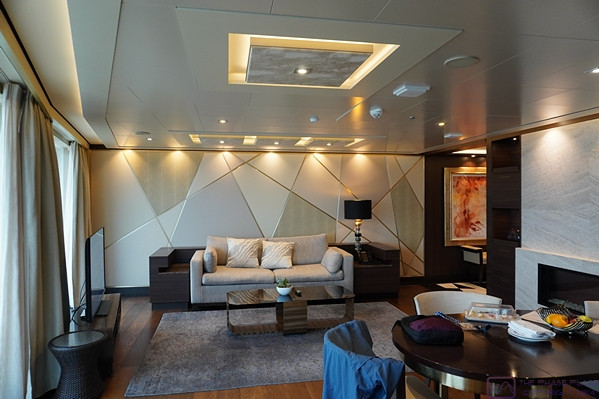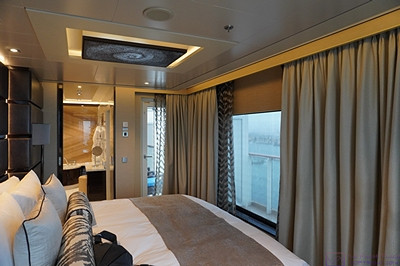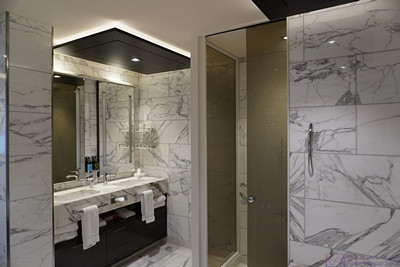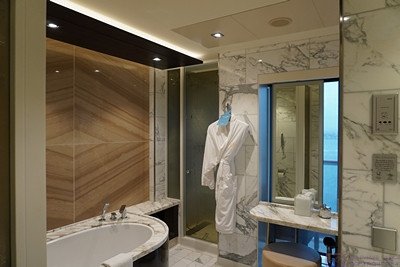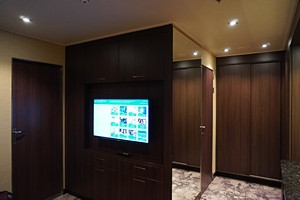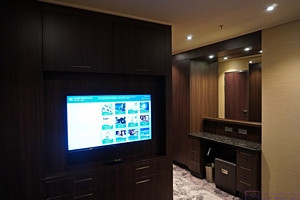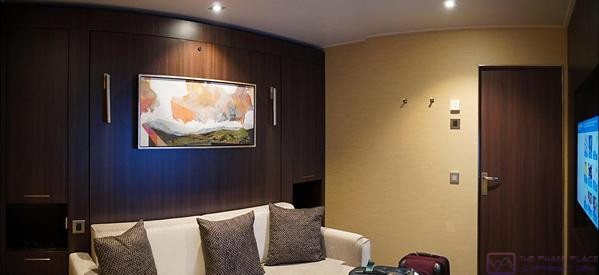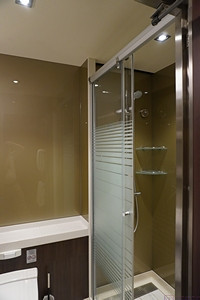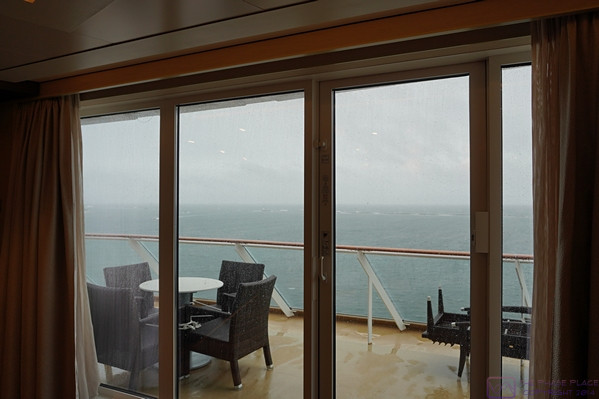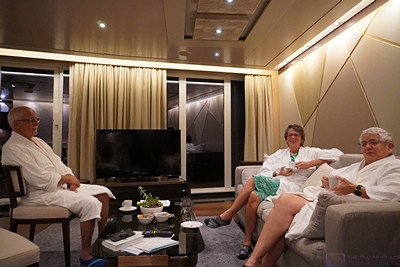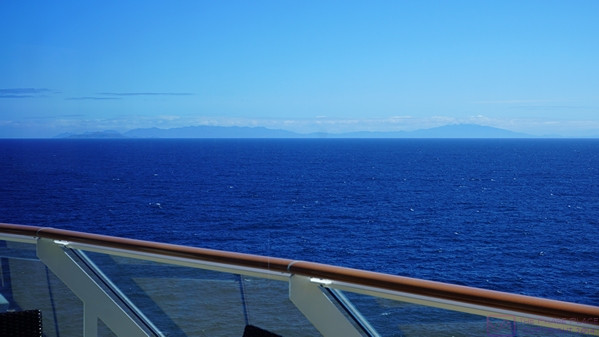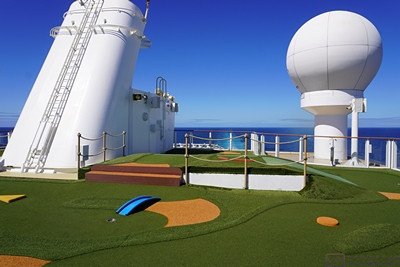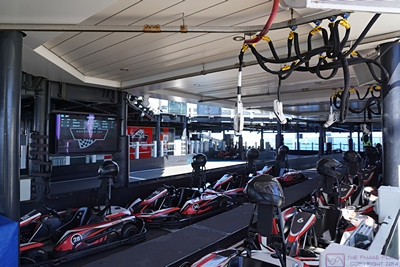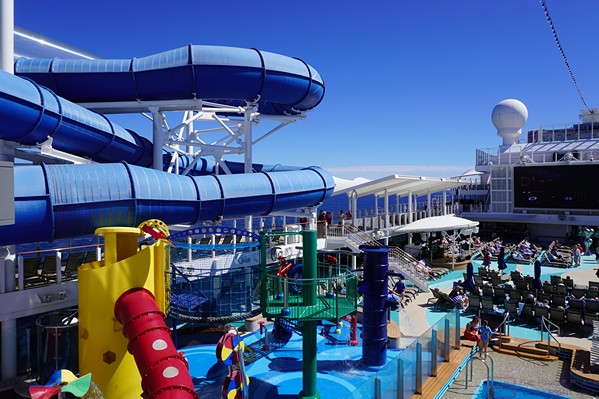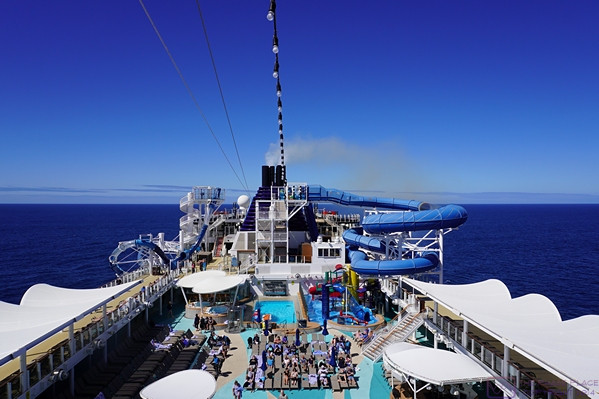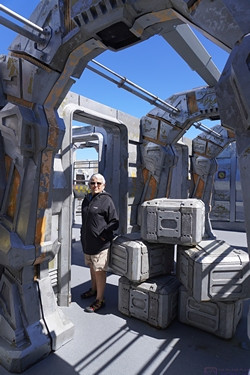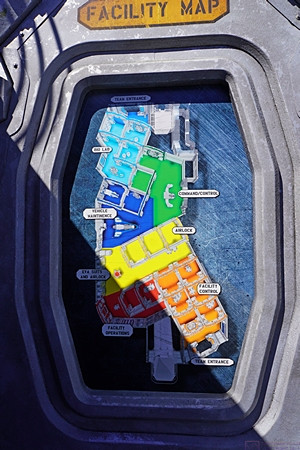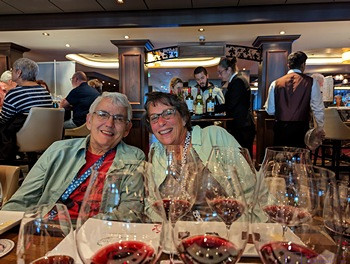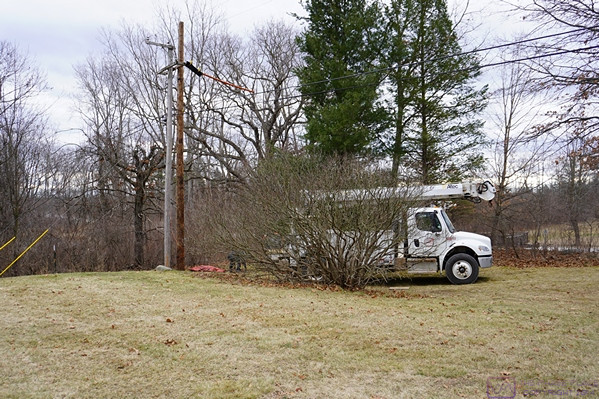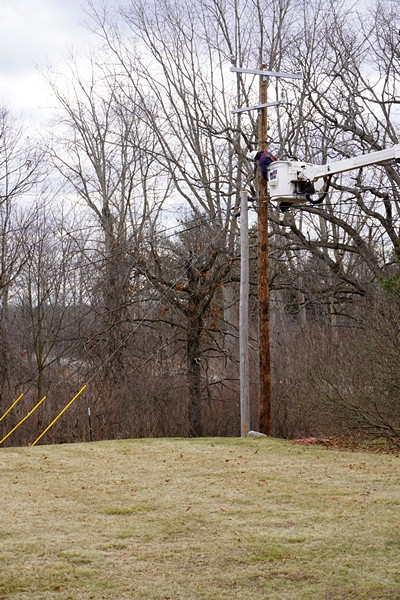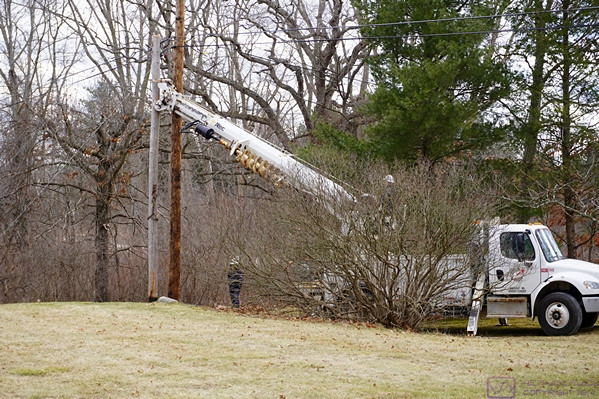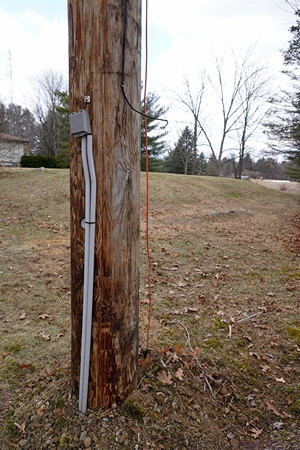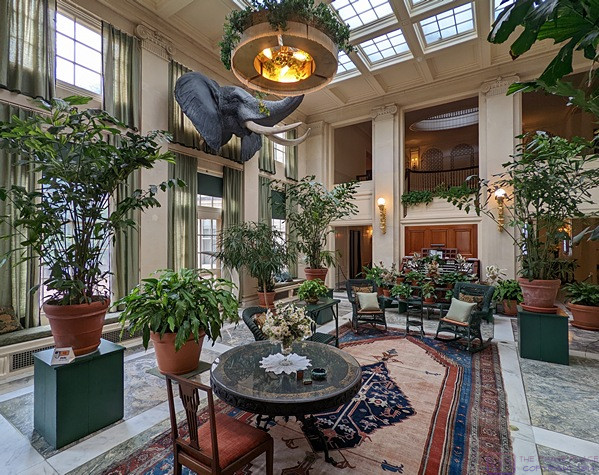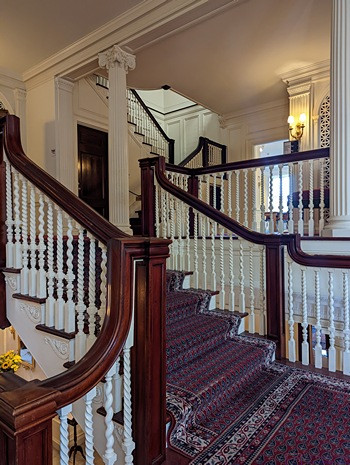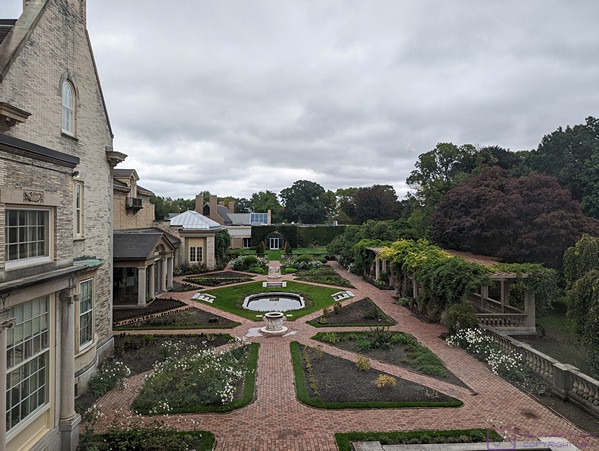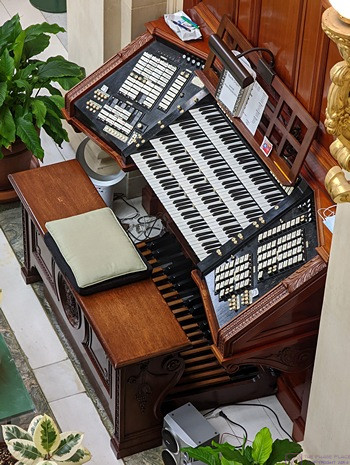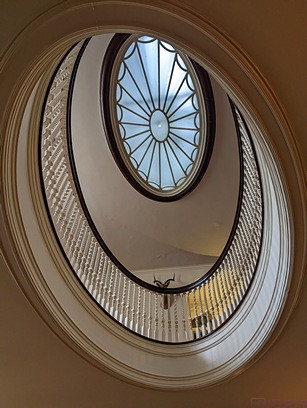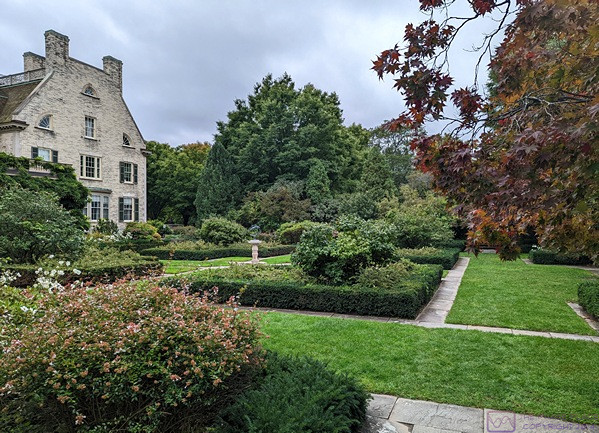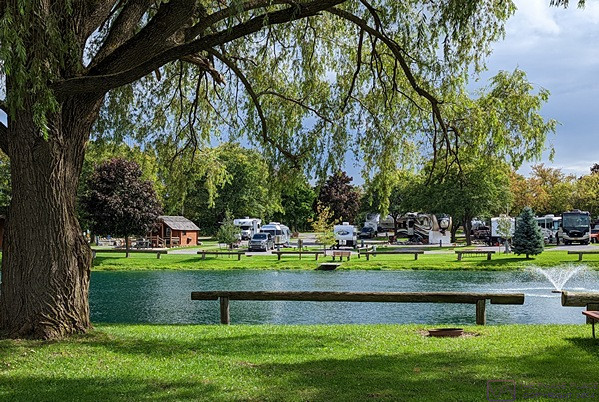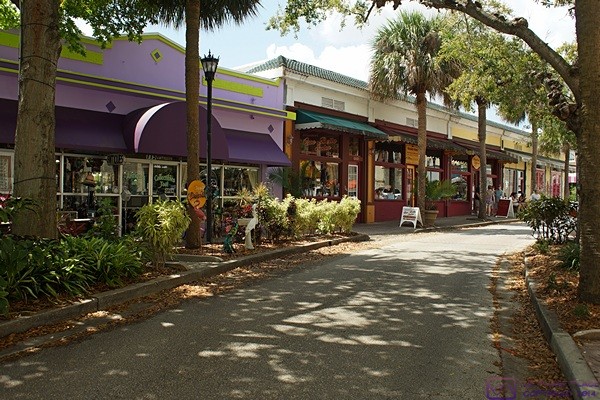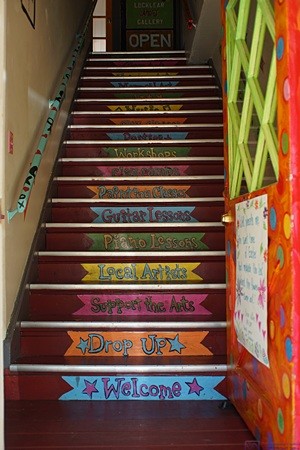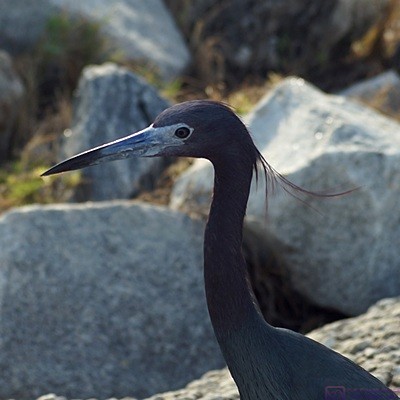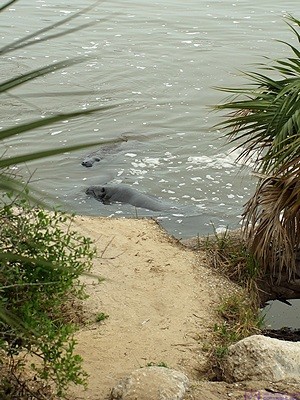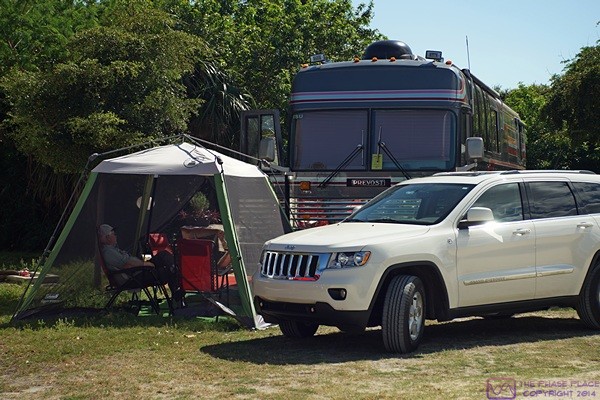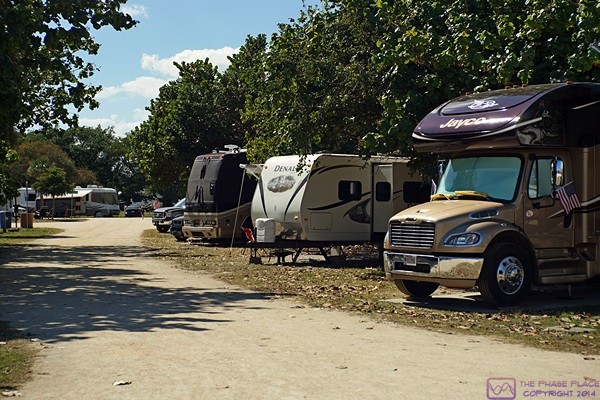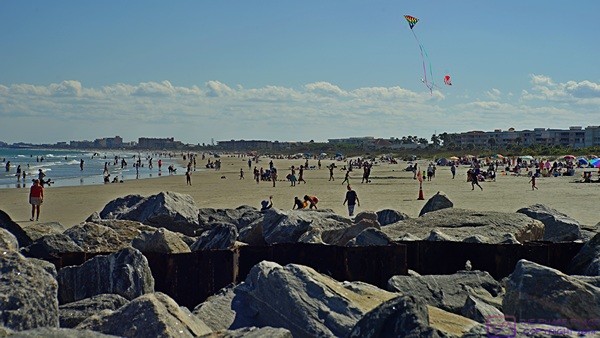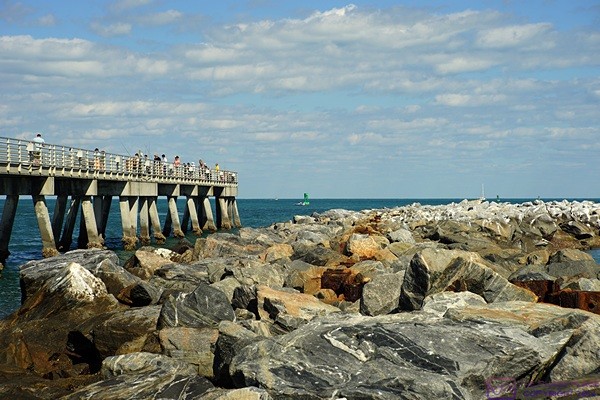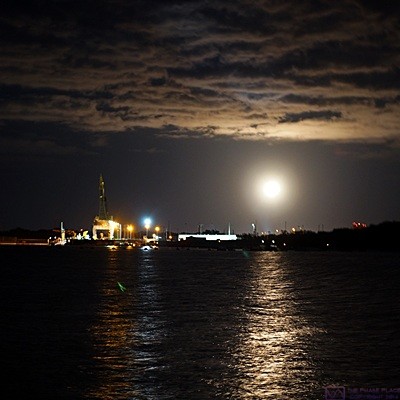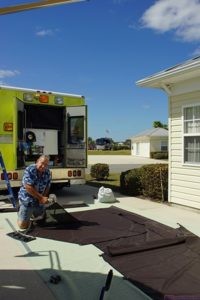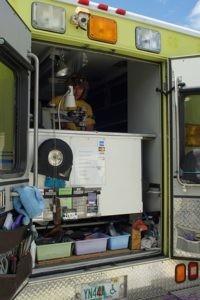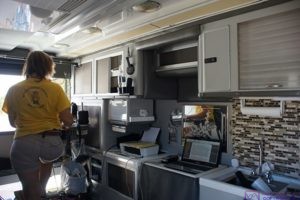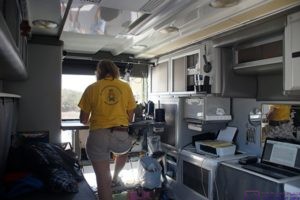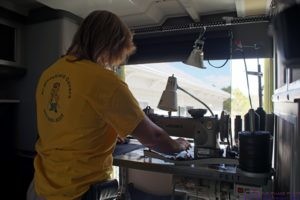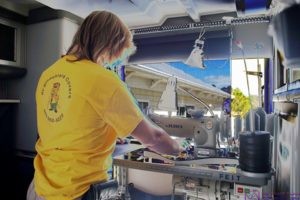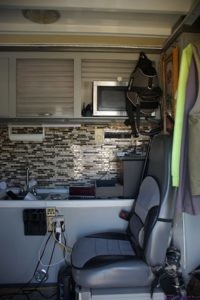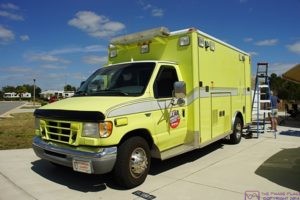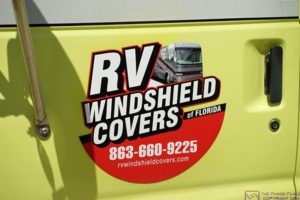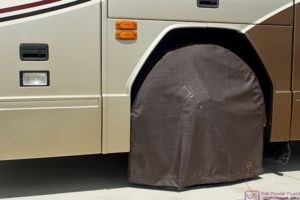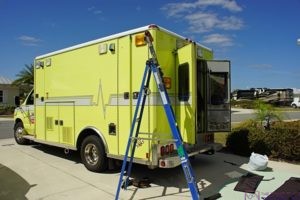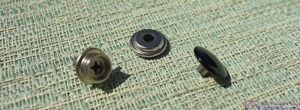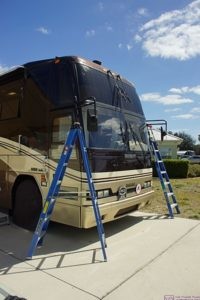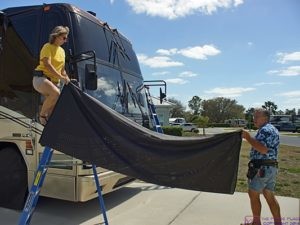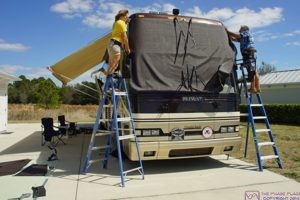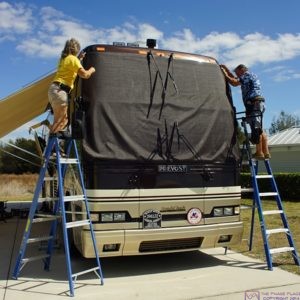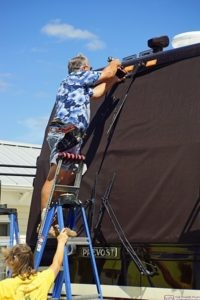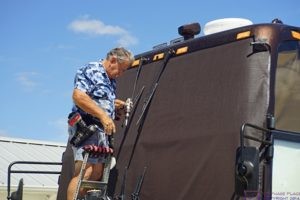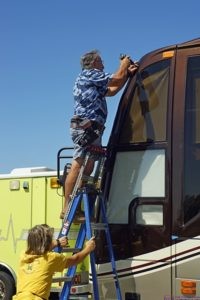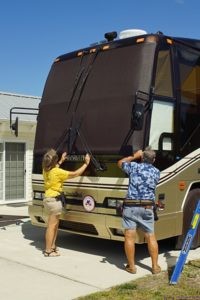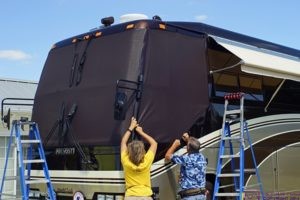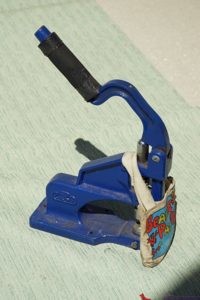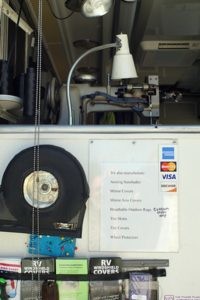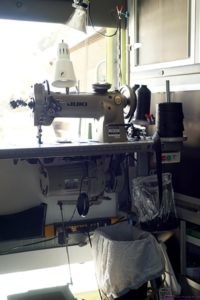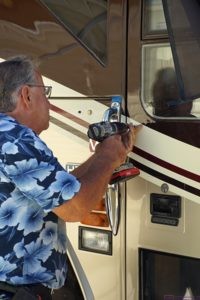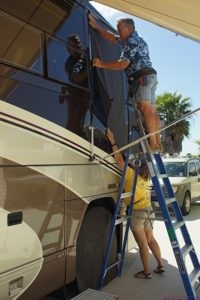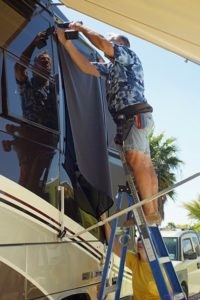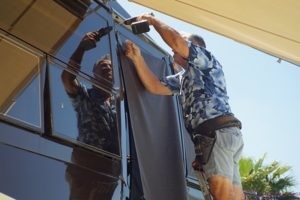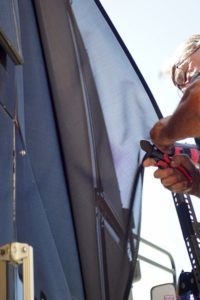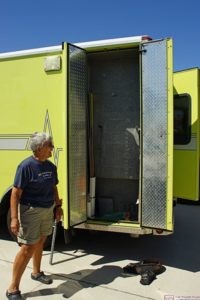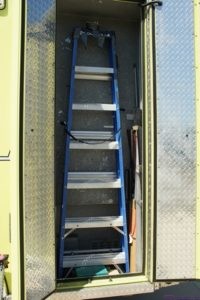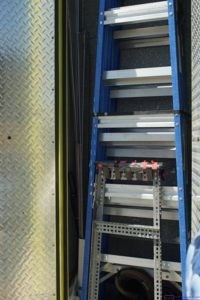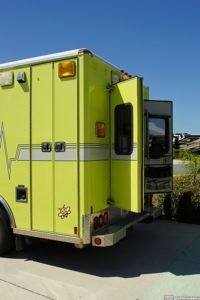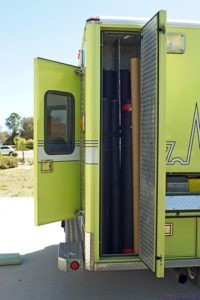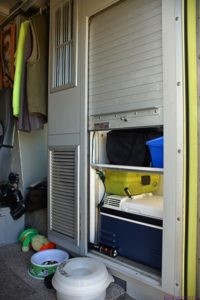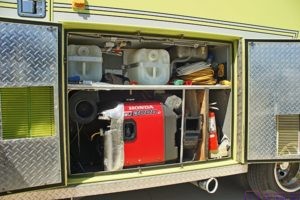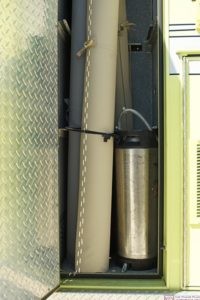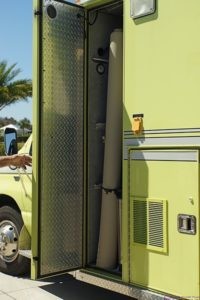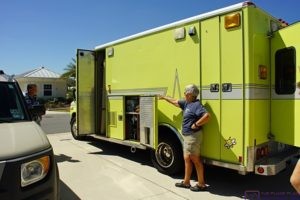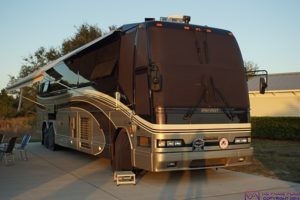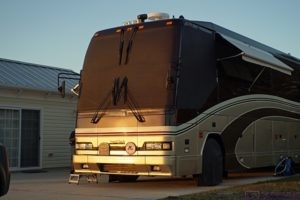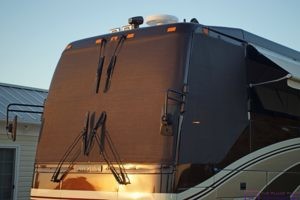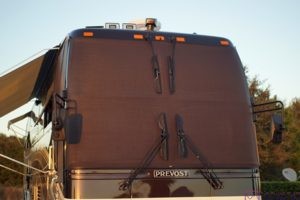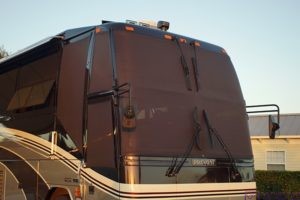2016/04/01 (F) The J. P. Shuffle
Linda was up before me and got to see one of the cruise ships come in at 6:20 AM. She said it was all lit up and quite a sight. I got out of bed at 8:20 AM and made coffee. Linda prepared toast and jam for breakfast and gave each of us half of an orange.
I finished up my post for yesterday, worked on this one, and then noticed that an iOS 9.3.1 update was available for the Apple iOS 9.3 update that I installed Wednesday evening and Linda installed last night. It was only 18 MB but still took a long time to download and install.
Today was April Fool’s Day and time for us to once again do “the Jetty Park shuffle.” I have checked at least once, and often twice, each day to see if an appropriate full hookup site had become available through cancellation for Friday, Saturday, and Sunday nights, but it had not. Around 10 AM I walked to the office to check one last time. Scott Ward was the JP staff person on duty and was very helpful but a site was just not available. He was able, however, to put us on site #357 for Sunday, Monday, and Tuesday night’s. I shortened our stay on site #3 to two nights and paid the balance for the one night.
Site #3 is a water only site, no electricity and no sewer connection, and the rules say that NO pets are allowed in that section, which is right along the channel and outside the regular fenced campground. The staff was aware, however, that we have two cats onboard and let us have the site anyway. We do not ever want them to escape, but especially here.
Our generator can produce more power than we can get from a “50 Amp” RV electrical connection, so not having electricity is not really a problem. The only real downsides, other than having to move, are that we can feel, hear, and sometimes smell the generator. We also had a problem with a circuit breaker for its cooling fan last winter. I made a temporary fix to it but have never fixed it permanently. We also do not like to leave the genset running when we are away from the coach, such as will be the case on Saturday morning.
I selected/processed three photos of the manatees we saw on Tuesday at Merritt Island National Wildlife a Refuge and e-mailed them to Pat and Vickie. I then replied to a couple of e-mails from Gary at Bus Conversion Magazine. By this time it was 11 AM so we prepared the bus, inside and out, to be moved. With all of the Windows and roof vents closed it warmed up quickly inside even with a lot of the coach in the shade. When I turned the ignition key the engine turned over but would not catch and my heart just sank.
I really like this bus, but I have grown weary of the uncertainty of whether things will work when needed. I turned the ignition key off and rechecked the transmission selector and parking brake settings. I also switched the suspension out of Level Low to drive mode although that should not have mattered. With the ignition key turned to the ‘ON’ position the 12 V chassis battery seemed a little low and a red light flashed a few times on the transmission selector, so I turned the key off, went to the outside battery disconnect switches, and turned both the 12V and 24V disconnects off and then back on.
Back in the driver’s seat I tried again. Normally the engine only turns over a few times before it fires. This time I let it turn for four or five seconds and it finally started. If I had any sense I would have driven it to the W. W. Williams Detroit Diesel service center in Orlando, but I moved it to site #3 at J. P. instead.
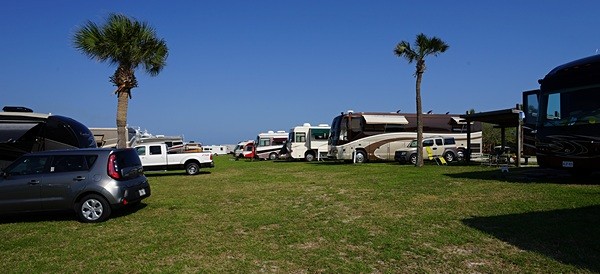
Our coach in Site #3 at Jetty Park & Campground, Cape Canaveral, FL. This is the “water only” camping by the shipping channel. All of these rigs are parked facing north towards the channel. It’s a great spot to watch the ships come and go.
To get from site #358 to site #3 I had to exit the fenced campground and drive around the east end of the park past the beach parking, concession building, and playground and then west along the edge of the shipping channel and around to the back row of the water only sites, all of which face the shipping channel. As such it was a long drive to get to a site we could see from the one we just vacated.
We left the car at site #358 temporarily and Linda rode along in the bus. I made the whole trip in 1st gear, to keep the RPMs up, and turned on the OTR A-C, both to cool the interior of the coach and to put more load on the engine and help get it up temperature. I did not pull the tag axle up as we had walked the park/campground enough to know that I did not need to make any really tight turns. When I was mostly into position on site #3 Linda got out and spotted the final position of the rear end. These channel-side sites slope down towards the channel (facing north) and the back row sites get steeper the farther off the back off the site you go. I wanted to pull forward just enough to get our tow bar clear of the access road behind the site and Linda accomplished that with an inch or two to spare.
I left the engine running and switched it to high idle to run the OTR air-conditioning. While Linda went back to get our car I got out the step stool and awning pole and deployed all four awnings. I then started the Genset to make sure it was going to run and produce electricity. I also thought we might run the residential air-conditioners. When Linda returned with our car she wanted to open up the coach so I shut off the OTR bus A-C, dropped the engine idle to low, and let it idle for a couple of minutes before shutting off the engine. I left the genset on for the time being.
Both of our systems had been reacting to what we had eaten the last few days so we passed on lunch and just hung around our new site which was, in fact, very pleasant with a view of the water in the channel and the high ground of Cape Canaveral Air Force Station on the opposite bank.
Our driver side neighbors stopped to chat on their way to the beach and let us know that they had just spotted dolphins in the channel. I walked over and caught a glimpse of several arching repeatedly out of the water but by the time Linda got there they had submerged and not resurfaced. Given where we are parked we should have a good chance to see dolphins and view cruise ships coming and going from the Port.
Linda made a cold garbanzo bean salad for dinner last night. After dinner I was trying to get us connected to the park Wi-Fi system but could not maintain the connection or get us logged in. I tried using our Verizon Mi-Fi but could not get the WiFi Ranger to work with it. I tried to reconfigure the Amped|Wireless router to work directly with the Mi-Fi but there were problems with that as well. At one point my ASUS notebook computer decided that it could not detect any Wi-Fi networks even thought it had two of them sitting within a couple feet of it. I got disgusted with the whole situation, shut everything off, and we went for a walk.
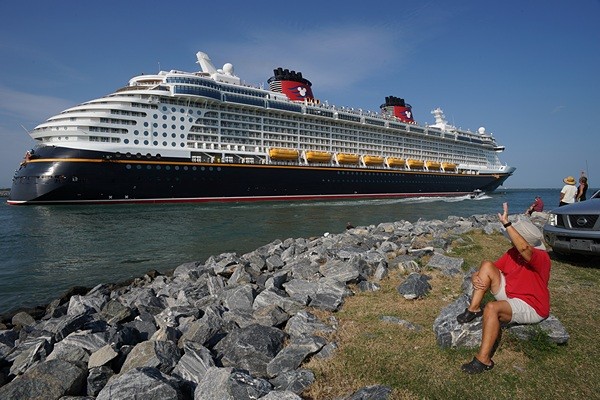
Linda waves to the Disney “Magic” cruise ship as it heads out to sea from Port Canaveral, FL. There is always a crowd along the channel to wave the cruise ships in and out.
We walked over to Pat and Vickie’s coach and Vickie joined us. We headed to the beach where we enjoyed a very brisk breeze until lightning to the southwest signaled that it was time to return to the safety of our rigs or one of the park buildings. We headed back past the playground area towards our coach and Vickie split off for the gate in the campground fence that provided the most direct access to her site.
Back at our site we closed up the coach against the humidity and coming storm. I then started the auxiliary powerplant (genset) and turned on the air conditioners. Not long after that it started to rain, lightly at first, but it eventually became very heavy for a while before finally moving offshore.
With the A-C’s running I was reminded that I need to change some of the AC circuits in the main panel. The front and middle air-conditioners are on different legs of the AC power system, front on L1 and middle on L2. That makes sense as we would normally want to run both of them at the same time to cool the front half of the bus (living, cooking, office space) when we are awake and using the bus. The 3rd/bedroom A-C has to go on one of the two legs and either one could create load balancing issues. Unfortunately, the middle A-C unit is not currently producing any cooling.
To make matters worse, the charger section of our Magnum 4024 inverter/charger also draws its power from L1. Again, it had to go somewhere, but the current configuration tends to put too much load on L1 and not enough on L2. Even though the genset is oversized for our electrical needs an imbalance between L1 and L2 is still a problem because it is set up as a 240 VAC unit with a 240 VAC voltage regulator. Although it has an active neutral, allowing it to supply 120 VAC to both L1 and L2 (180 degrees out of phase) the regulator is only concerned with maintaining the 240 VAC between the two legs, not the 120 VAC between each leg to neutral.
If the loads on the two legs are not reasonably balanced, the 240 VAC will “drift” off center from neutral with the voltage on the high load leg dropping and the voltage on the low load leg rising. That, in turn, can/does cause havoc with some of the devices onboard, especially the microwave oven, APC uninterruptible power supply that powers the Amped|Wireless router, and the APC line voltage stabilizer that powers the laser printer.
We were, however, able to watch TV and found Ken Burns’ JAZZ documentary on channel 24.1. By 11 PM we needed to get to bed as we had to be up and ready to go by 7:45 AM tomorrow morning. I turned the genset off around 11:30 PM and let the house electrical system switch to the inverter. I tried to watch the end of JAZZ on the TV in the bedroom but the TV and antenna controller kept losing power. That, in turn, caused the TV to shut off and the controller to reset to position 8. My phone and iPad chargers, both of which were plugged into AC outlets, also kept cutting in and out.
I encountered this same issue when we were boondocking at John Palmer’s place in Mayo, Florida at the end of November 2015. At that time I turned off the SEARCH WATTS feature thinking that it was causing the problem. Apparently that was not the problem. My best guess is that under very low load conditions the inverter is either: a) not inverting at all, or b) producing a voltage and/or current that is not well regulated. In either case, it would play havoc with our entertainment and communications electronics.
Rather than screw around with this anymore tonight I gave up , turned off the TV, unplugged the antenna controller, resolved to ignore the device chargers, figuring they would work when the refrigerator or air compressor ran, and tried to fall asleep. I could have turned on the AC lights in the living room, or our small portable fan, to draw enough AC current to keep the inverter working, but that’s really contrary to the whole notion of minimizing your energy usage to only those things that are absolutely necessary when running on batteries.
2016/04/02 (S) Cape Canaveral Lighthouse Tour
I was awake at 6 AM and we were both up and dressed by 7 AM. I did not make coffee or have breakfast and Linda just had a piece of bread as making toast would have required me to start the genset. The batteries were at roughly 24.6 VDC (and showing 72% SOC) with no load being drawn by the inverter so there was no need to recharge them this morning. We were due at Pat and Vickie’s coach at 8 AM so I gathered up my camera, holster, and extra batteries. We left at 7:40 and took our time walking over to their site.
Pat and Vickie have seating for four in their Jeep Grand Cherokee and have been providing transportation for our group outings. We left just after 8 AM for the short drive to the Exploration Tower at the west end of Port Canaveral. We signed up for a tour of the Cape Canaveral Lighthouse that departed from the Tower at 8:30 AM and included admission to the Tower when we returned.
There were only twelve of us on the small tour bus plus a driver (Mike) and two tour guides. The Cape Canaveral Lighthouse is located on the grounds of the Cape Canaveral Air Force Station (CCAFS). One of the tour guides (Jim) had worked at the Station and was our main guide for information about the Station and the various launch sites we visited; and we visited a number of them. One of the things we learned was that CCAFS is a Station rather than a Base because no one lives there. All of the Air Force personnel working at CCAFS are from Patrick Air Force Base, which is located south of Cocoa Beach. The U. S. Navy also has a presence here with facilities that service ICBM and attack submarines.
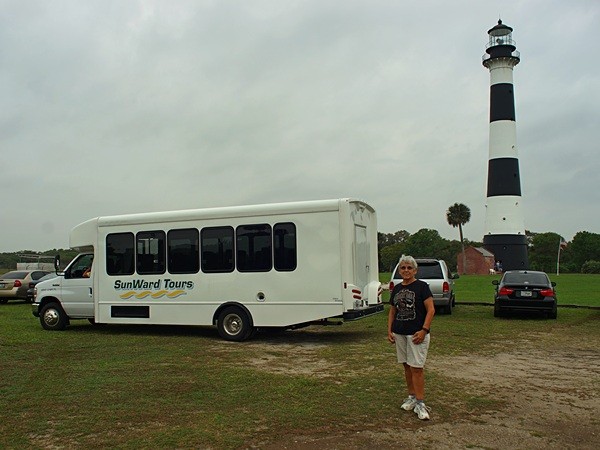
The Cape Canaveral Lighthouse located within the Cape Canaveral Air Force Station, FL.
The Lighthouse had its own cadre of docents, and was very interesting to see and learn about, but only accounted for a little less than an hour of a 3-1/2 hour tour. The other tour guide was Ron and he provided most of the information about Port Canaveral. Just after exiting CCAFS we visited a small museum devoted to the history of the Station. It was located next to the building that now houses the launch control facility for SpaceX, the commercial spaceflight venture of Elon Musk of PayPal. There are other private/commercial companies operating at CCAFS besides SpaceX . One of the largest is United Launch Alliance (ULA), an independent company that was formed by merging the space operations of Boeing (which absorbed McDonnell-Douglass years ago) and Lockheed-Martin.

All that remains of one of the launch pads at CCAFS, FL.
We did not really understand ahead of time what we were going to see and we were surprised by the dilapidated condition of the old launch sites. All that remains at most of them are concrete and brick works. Metal superstructures that were subject to rusting were long ago removed and control centers that were once stuffed full of equipment are now “abandoned in place” or used for storage. It was like visiting an ancient historic site, which in fact it is; the first rocket launched from this site was a German V-2 in 1950 and the Mercury missions occurred in the early 1960’s over 50 years ago.

A continuation of the previous image, this is the command bunker and tunnel. CCAFS, FL.
Back at the Exploration Tower, which is owned and operated by the Canaveral Port Authority (CPA), we got wrist bands good for admission through closing time today. The weather had been overcast all day and a check of the radar on our smartphones showed heavy rain moving our way. Even though we were hungry we decided to experience the Tower before the rain moved in.
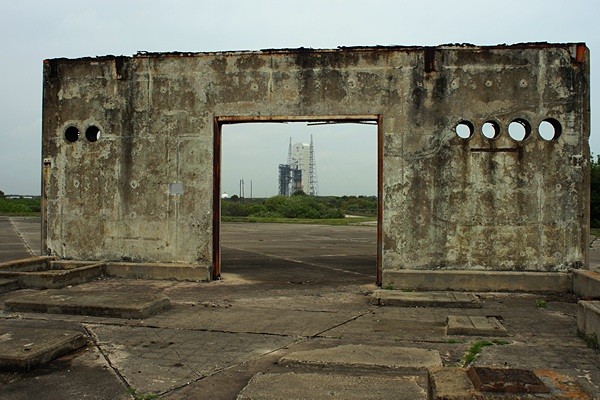
This is all that is left of what was once a heavily reinforced HVAC building at the launch pad. The superstructure in the distance is in active use by SpaceX and ULA. CCAFS, FL.
The Exploration Tower has seven floors plus additional structure at the top. We took the elevator to the top floor which features an outdoor observation platform oriented to give a commanding view of Port Canaveral, CCAFS, and the John F. Kennedy Space Center to the north, as well as the Banana River to the west and the Atlantic Ocean to the east. There are also views to the south of the cities of Cape Canaveral and Cocoa Beach. We took the stairs down to each floor in turn. Each floor has a theme with related exhibits and we stopped at each one. The 3rd floor is a small theater that shows a 20 minute film about Port Canaveral and the surrounding area; past, present, and future. The film starts on the hour and half hour so we caught the 1 PM show. The second floor is a balcony that affords a view of art hanging above the 1st floor lobby and gift shop.
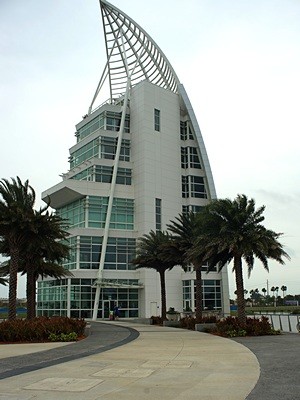
The Exploration Tower at Port Canaveral, FL. The top floor includes an outdoor observation deck.
Back on the 1st floor I bought two coffees while Linda and Vickie shopped for gifts. Linda found a stuffed toy of a manatee for our grand-daughter Madeline. When we finally got back to Jetty Park at 2 PM Linda made sandwiches for lunch and I washed off some grapes. I checked the house battery bank voltage and it was still OK. The temperature had cooled off under cloudy skies with a strong southerly breeze, so I did not need to run the air-conditioners.
I took a nap for an hour. Not long after I got up we noticed activity in the shipping channel so I took the camera and we went out to see what was going on. We set up two chairs in front of the bus to watch the action. The blue tug boat was hanging around the entrance to the Trident Turning Basin, which we had not seen it do before. The Brevard County Sheriff boat came out along with one of the harbor pilot boats. A U. S. Coast Guard boat, with a large caliper machine gun on the bow that was manned, headed out the channel towards the ocean at high speed. We thought perhaps we were going to get to see a submarine arrival, which are always unannounced, but the reason for all this activity turned out to be the Carnival Cruise Ship “Valor” coming into port. It was delayed from its scheduled arrival by almost 12 hours but that worked to my advantage as the cloud cover had thinned and provided nice lighting on the bow of the ship as it traveled west into the channel.

A 180 degree panorama, from west through north to east, from the observation deck of the Exploration Tower at Port Canaveral, FL.
A little while later the Norwegian Cruise Line “Spirit” left its dock and headed for the Atlantic Ocean accompanied by the police, Coast Guard, and harbor pilot boats. About 20 minutes behind the NCL Spirit, the Disney “Fantasy” left its dock and started its slow trip down the channel. Vickie showed up before it got to our position and had her iPad with her. As the boat came abreast of our position, Vickie spotted dolphins swimming just in front of the bow.
I got out another chair and we sat in front of the bus and chatted for a while. Vickie eventually returned to her coach to fix dinner and we went inside. I transferred today’s photos to my computer and selected two to process and send to Vickie.
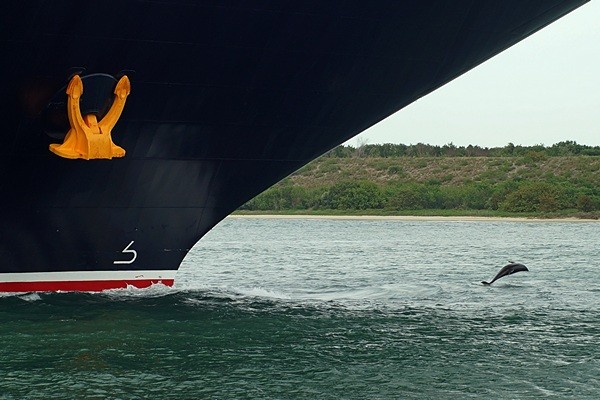
A dolphin swims in front of one of the Disney cruise ships as it heads down the channel from Port Canaveral, FL. towards the sea.
For dinner Linda improvised a potato and broccoli dish with onion, garlic, and couscous. It was light and very tasty. After we were done eating I texted Vickie. They were also done with dinner so we met her at the office and went for a walk. Back at our coach Linda checked online and found a news story about the Carnival Valor. The Valor was delayed due to a medical situation that required them to return to the Turks and Cacos. According to CruiseTimeTables.com, passengers were being advised to embark starting at 9 PM and to be onboard by 11 PM, with departure shortly thereafter.
Back at our coach we watched some TV and waited up for the Carnival Valor to leave as the nighttime departures are rather something to see with the ships all lit up. Linda waited until midnight and then turned in for the night. I stayed up until 1:30 AM but it was still docked at the west end of the port so I gave up and went to bed.
2016/04/03 (N) Bon Voyage
I was waiting for the Carnival Valor to leave Port Canaveral last night but by 1:30 AM it was still at its terminal. It was all lit up but going nowhere, so I finally went to bed. By midnight the skies had begun to clear and the wind, which had been steady all day, became stronger and started shifting around to the northwest and becoming noticeably cooler.
The cruise ships are particularly magical at night and I had hoped to capture some images of them, having set my camera to SCeNe selection mode (SCN) and selected “Night.” In spite of being up late I did not sleep soundly and was aware of headlights around 5 AM. Someone had apparently driven over from the campground to watch ships, or perhaps driven into the park, which opens at 5 AM, for this purpose. I then noticed a ship in the shipping lane heading for the mouth of the channel. Around 5:30 AM another cruise ship came in. I got up, put on my robe, and tried to photograph it from the cockpit of the bus.
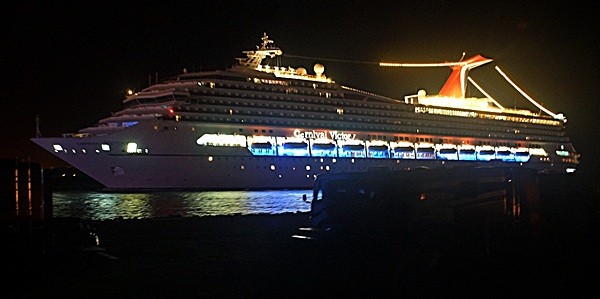
The nighttime arrival of the Carnival “Victory” cruise ship at Port Canaveral, FL.
I got up to stay a little after 8 AM and started the genset so I could make coffee and heat water. Linda got up shortly thereafter and prepared our breakfast cereal. We could see cruise ships docked at the west end of Port Canaveral so Linda checked the CruiseTimeTables.com website, and found that there were four cruise ships scheduled to depart today; three at 4 PM (the Carnival Sunshine and Victory, and the Royal Caribbean Freedom of the Seas) and one at 4:30 PM (the Disney Magic).
The Magnum ME-ARC indicated the house battery bank was at 24.6 VDC and 69% SOC. I turned on the genset and the charger started in Bulk Charging mode drawing 110A at 24VDC, or just over 2,600 Watts, on L1. I turned on the Aqua-Hot electric heating element, which is on L2, to balance the load on the genset a bit. When the battery charger had backed off a bit and switched to Absorption mode I turned on the block heater for the main engine, which is currently on the same leg (L1) as the charger. Balanced loads lead to balanced voltages, but it is also better for the genset mechanically to run under a somewhat heavier load than a light one.
Around 10 AM I walked over to check site #357. It was already vacant so I went to the office to confirm that we still had it reserved for tonight through Tuesday night. We did, so I told the office clerk that I was going to go ahead and move, if I could get the engine started, and would then come in and register. If I couldn’t get it started I would extend our stay on site #3 until we could get the problem resolved or get it towed. The clerk was not particularly sympathetic, but then he was the one who would have to deal with an irate customer who could not have their reserved site, and the people who camp here have very particular preferences about their sites. Fortunately, site #3 was open so we could have stayed there until we needed to dump our holding tanks. We could minimize water usage by using the campground bathrooms, so we could have stretched our dry camping if needed.
Back at our rig we started preparing to move it. I moved the car over near the pedestrian gate that is very close to site #357 and walked back to the coach. Linda had secured the inside enough for the short, slow trip. I checked the maintenance chargers for the chassis batteries and they indicated 100% charge levels. I opened the air supply valve for the engine accessories, engaged the 12 and 24 volt chassis battery disconnect switches, pulled the wheel chocks, and put the entry step stool away. I put the Level Low system in Drive mode, just in case that mattered, and turned the ignition key. The bus motor cranked quickly and fired right up! That was a relief.
The Centurion Battalion of the United States Navy Sea Cadet Corps had arrived at the picnic area sometime before 8 AM with a large contingent of cadets and their adult leaders/chaperones. And they had arrived in a large number of cars that filled the available parking spaces just on the other side of the road that ran behind the back row of RV sites where we were parked. There was still plenty of room to back out, but Linda positioned herself outside to keep an eye on the back end of the rig.
The motorhome on our passenger side was also ready to leave and backed out before I did. I don’t think he would have presented an obstacle, but having him gone was one less thing to have to keep an eye on. I pulled up the tag axle and then pulled forward to the right to position the coach at an angle to the road behind it. I then backed up and cut the steer tires hard left to swing the nose around to the passenger side and guide the rear end cleanly into the road well clear of any other vehicles. Linda climbed on board and I turned on the OTR A-C, partly for comfort and partly to put more load on the engine.
We made the 5 MPH trip around the east end of the park and campground back to the campground entrance on the south side where Linda got out to open the gate. Once I was clear of the gate she got back onboard. We wound our way through the campground, familiar now with the road system. When I got to the 2nd to last turn I saw that the last turn was blocked by a pickup truck pulling a 5th wheel trailer out of its site so I continued straight ahead and went clockwise around Red Knot Circle. By the time I got back to the same intersection the pickup truck and 5th wheel were out of the way and I was able to proceed to site #357.
Linda hopped out to act as spotter. Using what I learned two years ago from Big Bill while getting parked at Suncoast Designers in Hudson, Florida I moved to the right edge of the road as the back-in site was on that side. As I pulled past the site and the rear wheels were by the front of the site I cut the steer tires to the left, positioning the coach at an angle to the site, all the while avoiding trees, RVs, cars, and other obstacles. I backed straight, keeping an eye on Linda in the driver side rear view mirror, and started swinging the nose to the driver side while keeping an eye on the car parked on the other side of the road.
As soon as I was clear of that car I swung the nose hard to the driver side. We were well clear of the Sea Grape trees on the passenger side so I straightened the steer tires and pulled forward until I had a good view of the concrete pad on one side. I backed in following Linda’s hand signals until I could see the pad on both sides, got the rig straight and centered, and backed up until Linda gave me the stop signal (arms crossed at the wrist above her head). We ended up parking with the front tires just off the front edge of the concrete pad as the coach was close to level and we wanted to avoid lower branches at the rear of the site. As it was, I still had to lower the front slightly, but at least the Level Low system worked this time. I also had to adjust the rear on one side, which worked a lot better after I lowered the tag axle.
With the coach neatly tucked in to its site and sitting level Linda walked the short distance back to where the car was parked and drove it around to our site. Once the car was parked I walked to the office and took care of the registration. When I got back I tried to get our network up and running but encountered all sorts of problems. I wasted most of the rest of the afternoon trying to resolve them, to no avail.
While we were camped on site #3 I had to reconfigure the Amped|Wireless router/range-extender to work directly with our Verizon Mi-Fi. That configuration worked OK out there, but was not working here. The Wi-Fi ranger was seeing a number of campground Wi-Fi signals with adequate to very good signal strength, but was having a very difficult time connecting to them. When it did, the connection would drop after a very short time. The Amped|Wireless router/range-extender was having an equally difficult time connecting to the Wi-Fi Ranger and staying connected when it did. I tried connecting the Wi-Ranger to our Verizon Mi-Fi but that did seem to work either. I also noticed that the cellular signal was not as strong as usual. Linda commented that her phone was having trouble connecting. I finally got disgusted with the whole thing and set it aside. Sometimes the best solution is to “just walk away.”
There were four cruise ships starting down the shipping channel roughly on time and in the order specified and Vickie joined us for the ship parade. We were out there waiting for them, camera at the ready, and by the time the last ship was headed out to sea I had shot about 200 images. Vickie had already eaten, and we were not ready for dinner yet, so we walked the campground and park, including the pier.
It was chilly all day yesterday with a high temperature in the low 70’s and a steady breeze from the north that resulted in a hazardous conditions warning for the beach. As the light faded it got colder and we returned to our motorhomes.
Dinner was a nice salad and Amy’s enchiladas. Simple, easy, tasty. It turned colder after sunset under clear skies and a stiff northerly breeze. It was very refreshing, initially, but eventually the coach was a bit too cool so I closed the roof vents and Linda narrowed the window openings to just an inch. We were a little tired, not particularly captivated by what was on TV, and had to be up earlier than usual in the morning, so we were in bed before 11 PM.
2016/04/04 (M) Farewell For Now
It turned chilly after sunset last night under clear skies and a stiff northerly breeze. It was very refreshing, actually, but eventually the coach felt chilly and we closed it up, mostly, and were in bed a bit earlier than usual.
We were up at 7 AM this morning and got dressed right away. I made coffee, which used up our supply of Sweet Seattle Dreams beans, and we headed over to site #303 at 7:30 to see Pat and Vickie off. They have been here since mid-February and today was departure day. The bus motor was already running when we got there and we just watched while they got ready to pull out. We learned long ago not to “chat” with RVers during their final departure preparations. They drove around by the office to hook up their car and we walked over to watch. I took a couple of pictures with my phone and used the “dawn” setting for the first time. Soon enough they were ready to go, so we said our final “farewells for now,” and, just like that, they drove off and were gone. Assuming no mechanical or weather issues they will be home in northern Indiana Wednesday evening.
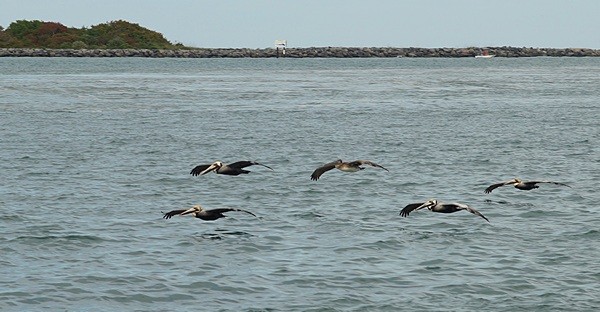
A group of five brown pelicans coming up the channel just above the water. Jetty Park at Port Canaveral, FL.
We always find that leaving an encampment after we have been there for an extended period of time has a strange feeling and we experienced that vicariously as Pat and Vickie drove away. The strangeness, as best I can describe it, is a combination of a sense of loss—the giving up of a familiar place and the people there—and anticipation of the journey ahead, both positive and negative. The anticipation is positive in the sense of the possibilities of new experiences that come with the adventure of the road while the negative anticipation stems from the potential for mechanical, weather, traffic, or health problems.
With Pat and Vickie out of sight we returned to our coach and had a light breakfast of toast and jam and finished our coffee. Linda then worked on a grocery list while I tackled out networking problems. I gave up in disgust around 10 AM and we drove to Cocoa Beach to do some grocery shopping. We went to the Publix supermarket first and found most of what we needed there. A quick stop at Sunseed Food CO-OP filled in our list with blueberries, coffee, and vegan mayonnaise. I stopped at one of the Shell stations on the way back to J. P. and topped off the fuel in the car so we would not have to deal with that tomorrow morning.
Back at our coach we got the groceries unloaded and put away. Linda then heated some leftovers for lunch and washed some grapes. After lunch I put in a call to Chris Yust, our National General Insurance Agent, to ask her about the letter/form we received regarding Coordination of Medical benefits. She called back a short time later and we discussed it. She logged into her agent support system but there was no indication of the letter/form. Normally she can see anything the insurance company has sent to her customers. She confirmed that we really did need to send the form in with the requested documentation.
Linda had already photographed the fronts and backs of our MPSERS/BCBS cards. When she tried to print them the printer was “offline”. We had this same problem at the beginning of our winter travels and it turned out to be NETWORK related. The fix back then was to use the Advanced IP Scanner to determine what IP address was assigned to the printer and then manually reconfigure the printer to that address. That was under Windows 8.1. Under Windows 10 the IP Scanner didn’t work the same way and the manual reconfiguration didn’t work either. What is particularly puzzling and annoying is that the printer does not appear to be responding correctly when set as a DHCP client. If it was, we would not be having a problem communicating with it.
I seem to have spent a lot of time this past week dealing with network and wireless communications malfunctions, so I did what I often do and we went for a walk at 2:30 PM. We went out on the pier and were just starting back when someone spotted a manatee between the pier and the jetty swimming towards the ocean. The water was clear and we got a good look at it for quite a while. It was large and presumably a full-size adult. They really are gentle giants and it was a thrill to see it.
We walked back to the office for coffee before returning to our rig. As soon as we went in Scott Ward handed Linda a card. She has not been in the office that much but I have, and have often interacted with Scott while checking on, or registering for, sites. Still, I was impressed that he remembered my last name and made the connection to the card. The card was from our younger grand-daughter, Madeline. It was a ‘thank you’ card for Linda for all of the custom photo postcards she has created using the PhotoPostCard app and had printed and mailed to Madeline by the PhotoPostCard service out of San Diego, California. Linda took a picture of the card, texted it to our son, and asked him to tell Madeline “thanks” in return. He texted back a photo of Madeline looking at the most recent postcard, which was a photo of Linda by the channel with one of the Disney cruise ships heading out to sea.
The Royal Caribbean Enchantment of the Seas was due to sail at 3:45 PM followed closely by the Disney Dream at 4 PM. We walked over to the shipping channel at 3:40 PM and by the time we got there the Enchantment was starting to move away from its dock. Something did not look right and then I realized we were looking at the stern of the ship. The cruise ships usually dock facing the ocean, so it needed to turn around to get out of Port Canaveral.
One of the amazing things about these amazing machines is their ability to maneuver in close quarters. When in port, they can independently push the bow and stern to either side, which means they can move sideways or turn the ship around its center (or any other point). In this case they pushed the stern out from the dock on the south side of the channel and into the opening of the middle turning basin on the north side of the channel opposite the dock. They then backed it up slightly into the turning basin, brought the bow around into the channel, pushed the stern out into the channel, and then started moving forward down the channel towards the ocean. It was quite a skillful maneuver and the first time we have seen this in the two weeks we have been here.
Not long after the Enchantment cleared the Jetty and turned southeast to stay in the channel, the Disney Dream started moving slowly forward and away from its dock. The Disney terminal/dock is in an alcove (basin) on the north side of the west end of the Port so it has to turn into the straight portion of the channel. Of all the cruise ships we have seen come and go the Disney ships appear to be in the best condition, not that any of them look bad.
We returned to our coach and I transferred photos to my computer from the camera and from my cell phone while Linda started preparing dinner. Dinner consisted of a kale salad followed by a brown rice and kale dish with sautéed carrots, onions, and garlic. Linda has not had any wine in a couple of weeks because of the medications she’s been taking, but I had a glass of the Arbor Mist Raspberry. I find “flavored” wines a questionable choice, although I like Sangria and hot mulled or spiced wine.
We went for a walk after dinner that included some time on the beach. The park and beach were a beehive of activity yesterday but things were quiet all day today and there were only a handful of people on the beach this evening. Both conditions are nice, in their own way. There was, however, some activity in the Trident submarine turning basin today. The big crane was moving and a Coast Guard cutter was in and out of the basin. An attack helicopter from Patrick AFB also made repeated passes over the area and up/down the beach. Our friends told us that when things start getting active around the basin it usually means a submarine is coming in but that did not happen while we were watching.
Back at our coach we turned on the TV but all of the CBS programs were repeats because the NCAA Basketball final game was on cable. I reconfigured the Amped|Wireless router to work directly with our Verizon Mi-Fi and was able to get my computer connected to the Internet and to our NAS, which is critical for backing up photos and documents. I did not, however, mess around further with the printer. My plan is to move it back into my office at home and leave it there. I will find a newer one, with better networking functionality, to put in the bus.
We planned to be on the road in the morning between 8 and 8:30 AM so we went to bed before 11 PM. Linda fell asleep before NCIS-LA ended but I watched the channel 6 news/weather before turning out the lights. The Cleveland Indians baseball home opener was postponed because of snow on the field and the TV weatherman reported that the average last date for snow in Cleveland is April 18, and for Detroit, April 22. In spite of a mild winter and early spring, I knew there was a reason we were not in a hurry to return home. The low at our house was forecast to be 18 degrees F overnight.
2016/04/05 (M) Celebration
We were up at 7 AM, showered, and got dressed. We tended to our cats and prepared the motorcoach for them to be comfortable while we were away for part of the day. We each had a banana, and a little orange juice to wash down our vitamins, but did not have a full breakfast or our usual morning coffee. We gathered up all of the things Linda needed for her doctor’s appointment and were in the car and on our way at 8:10 AM.
Our destination was the office of Dr. Michael Seidman in Celebration, Florida, a trip of 60 to 65 miles from Jetty Park that would take about as many minutes. Most of the route was Toll Road (FL-528 and FL-417) and we did not have to slow down for the toll booths because we have a Florida SunPass transponder that we can move between the bus and the car. We put the address of the clinic, which is attached to Florida Hospital, into the GPS. It accepted Celebration as the city, but the routing showed the destination as Kissimmee. I didn’t care what it called the place as long as it got us to the correct location.
We left earlier than needed in order to arrive earlier than required and allow for traffic and navigational contingencies. Less than a mile from the medical center we spotted a Panera Bread Company store and stopped to have bagels and coffee. While we were there we made use of the free Wi-Fi to update apps on our iPads and smartphones. We left at 10:15 and finished the short trip to the Florida Hospital complex. We found a parking spot, found the clinic building, and found the suite for the Head & Neck Surgery Center of Florida (H&NSCF). Linda had already completed much of the required new patient paperwork so we were there with time to spare.
Sheila, one of the office assistants, got Linda checked in and wanted to know if we had brought copies of her records from Henry Ford Health System, where Dr. Seidman worked for 30 years and treated Linda for the last 20 of those. I had e-mailed Sheila the day after she asked me to get those records to let her know that HFHS would not send them to another hospital or clinic at Linda’s request and that the H&NSCF would have to request them. Sheila said she did not receive that e-mail, even though I replied to one she sent Linda. Oh well, there was nothing to be done at that point.
It was a great relief to Linda to be able to get in to see Dr. Seidman. Dr. S and his PA, Katherine, carefully went over the history of Linda’s illness and treatment of the last three weeks. He indicated that the treatment was what he would have prescribed, which was comforting to know. His routine ENT examination did not reveal any indication of infection or fluid in her “good” (right) ear, which was also good to know. He really wanted to compare the recent audiological results with her last tests from HFHS so he made a call to someone at the HFHS ENT clinic and was able to get them to fax the test results. He chaired the ENT department for much of his time at Henry Ford, and that was apparently still worth something with former colleagues.
Dr. S also inserted a scope through Linda’s right nostril and into her throat to exam the areas that cannot be seen any other way. The scope is a thin, flexible cable with a camera and LED light source at the tip. The image is fed to a monitor, where I got to see it in real time, but was also recorded so Linda got to see it afterwards. Her vocal cords did not close completely and were slightly bowed, which Dr. S thought probably accounted for her weak, slightly horse, voice but there was no sign of infection or other pathology, such as tumors. He noticed that the Eustachian tube opening was “bubbling” which he thought was a good sign. He also examined the left nostril and did not see anything unusual there either.
All of that was good news, of course, but we were both a bit let down that there wasn’t any additional treatment he could provide at this time. Direct injection of steroids into the middle ear was still a possibility but he wanted Linda to wait at least four weeks to see if she improved on her own before going down that path. Equally frustrating was that her hearing, while marginal, was too good for a cochlear implant. Not that she is eager to have one of those, of course, what she wants is the hearing in her right ear restored to what it was before she got sick a month ago.
Our friend, Mara, was moving her motorhome today from Clermont to Winter Haven and her friend, Michael, was driving to Orlando International Airport to drop off a rental car and fly back to Phoenix, Arizona. They had hoped to do all of that by way of Celebration and have lunch, with or without us, at Ari, a Japanese sushi restaurant. We had indicated that it was very doubtful we would make it to lunch, given the timing of Linda’s appointment, but called Mara when we got back to our car to update her. It turned out that when she got ready to leave her motorhome slideout would not slide in. (I think that’s why they are called slide “outs.”) Michael returned home as planned while Mara arranged for a technician to fix her non-sliding slideout.
We needed to fax a few documents to National General Insurance Company, so we went in search of a Staples with a copy center. Having taken care of that we wanted to have lunch before heading back to Cape Canaveral so as not to be eating dinner too late in the day. We found another Panera near FL-417 and Orange Blossom Trail and ate there. The kale-romaine-couscous-almond salad was excellent and the black bean soup was as good as usual. Well fed, we got on the FL-417 Toll Road and headed back towards the FL-528 Toll Road, which we took back to Cape Canaveral.
We were back at Jetty Park before 2:30 PM and just relaxed for a while. Around 4 PM we went outside to take care of a few things in preparation for our departure tomorrow. I got out the waste drain hoses and connected two of them together to reach from the utility bay connection to the sewer connection, which was inconveniently located directly behind the RV pad. We drained the waste tanks, rinsed out the hoses, and returned everything to their storage tub. Using the 3-step stool, I retracted the two awnings on the driver side, which I had previously deployed to shade the Windows from the mid-afternoon sun.
We then emptied out the back of the car so I could add air to the temporary spare, which gave us a low pressure alarm on the drive from Webster to Cape Canaveral. I had turned on the TireTraker TPMS earlier and most of the readings looked OK, but as long as I had the portable air compressor, hose, air chuck, and pressure gauge out I checked the front right (curb, PS) tire as a check on the TPMS. The tire gauge pressure was several pounds lower than the TPMS indicated pressure and was fairly close to where I wanted it so I left it alone.
Our destination tomorrow was Williston Crossings RV Resort in Williston, Florida, a trip of about 140 miles. We had about a half tank of fresh water so I did not get out the softener and add any. Somewhere in the middle of all this work we chatted with several neighbors, but eventually we got the car and bus repacked, including the patio mat and the two bag chairs. At that point we only had the entry mat, entry stool, and power cord to deal with and the outside would be ready for travel.
Before dinner we went for a walk out by the shipping channel, the pier, and the beach. There were people out and about but the park did not feel crowded and was quiet and calm, unlike the festive energy of the weekend with its day visitors, picnickers, and family campers with younger children. It’s as if J. P. has moods, and one has to spend enough time here and experience them to begin to get a sense of the place. We could understand why Pat and Vickie like to come here every year, even if that is not what we would choose to do.
I could not recall what Linda made for dinner because I am trying to finish this post a week later. What I do recall is that the Norwegian Breakaway was scheduled to set sail at 9 PM, well after sunset. It had been a pleasantly cool day with clear skies but turned chilly with the setting of the sun and a noticeable breeze, especially outside the campground by the water. Linda was tired and a little chilled and chose not to walk out and watch the ship leave. At 8:45 PM I got my camera, walked over to the channel, and positioned myself by the “Minimum Wake” sign. I had a good view of the Port to the west and could lean on one of the posts for support if needed. I put my camera in SCN (scene selection) mode, selected the “Night” setting, and waited.
I had not noticed that the ship was docked with its stern facing the ocean until it started to move. Its position at the dock meant it would have to do a 180 degree turn before moving down the channel and into the ocean. And that meant it was going to take longer to exit the port and give me more opportunity to photograph it.
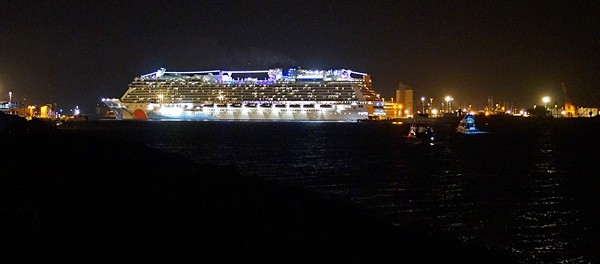
The Norwegian Cruise Lines “Breakaway” doing a 180 degree maneuver in the turning basin. Port Canaveral, FL.
The cruise ships are always brightly illuminated when coming and going in the dark and are quite pretty to see as they glide almost silently by. They are also challenging to photograph as they are often very high contrast (high dynamic range) subjects, especially at night. Ideally I would shoot multiple bracket exposures and combine them using HDR software, but I would have to get the camera on a tripod and even then the exposures would be just long enough that the ship would change position slightly between frames. I did the best I could with single frame, hand-held exposures braced against the sign post. By the time the Breakaway was in open water I was getting chilled and headed back to the warmth of our bus. I transferred the images to my computer and took a quick look at them before settling in to watch a few minutes of TV and then go to bed.

